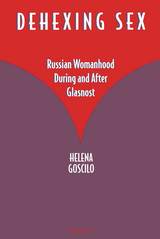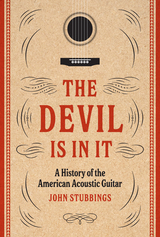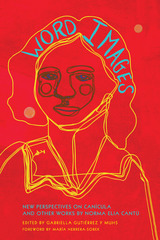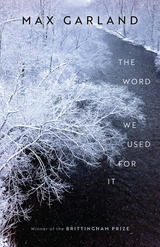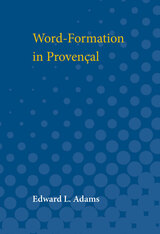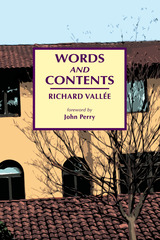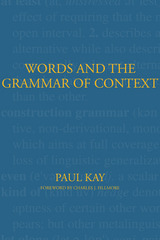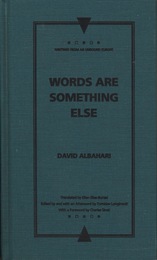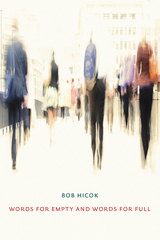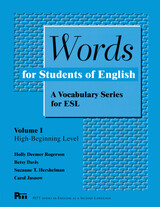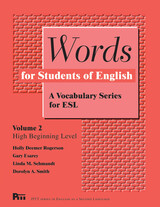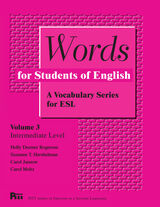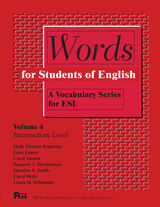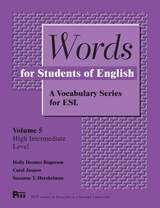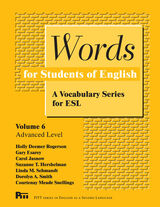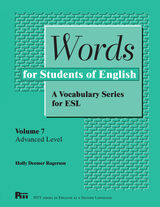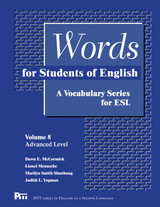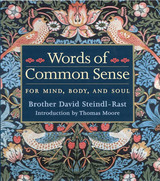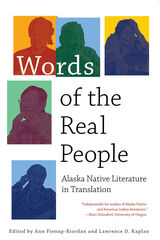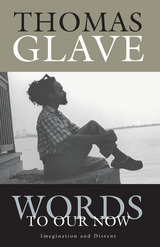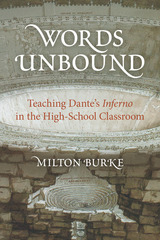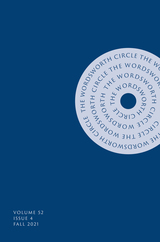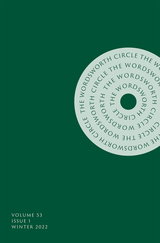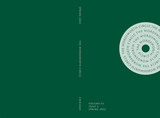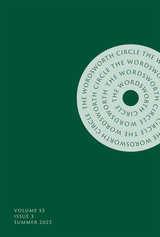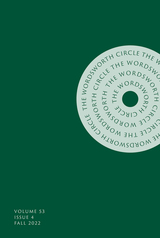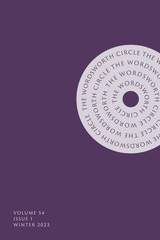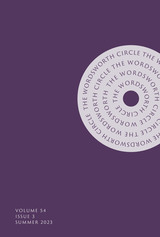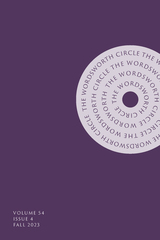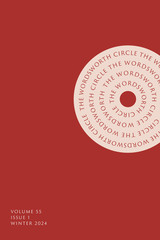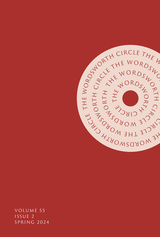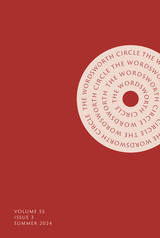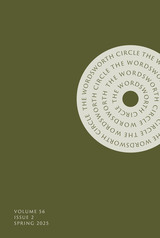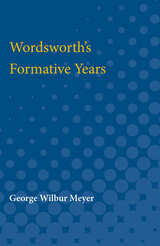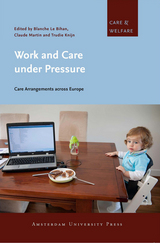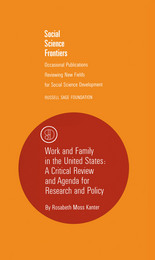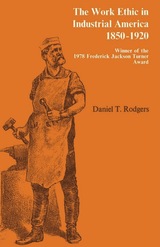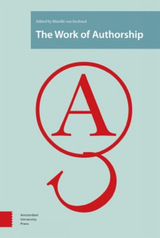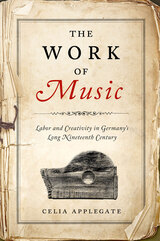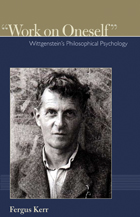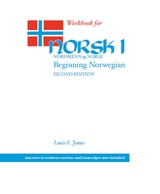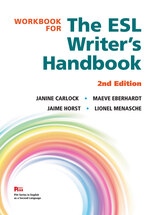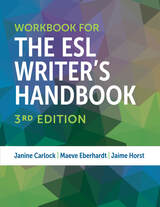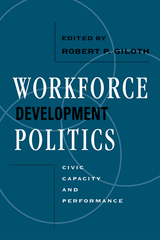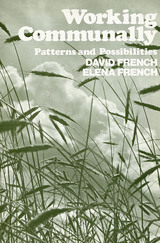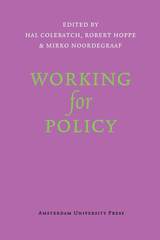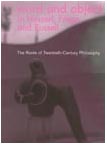 Word and Object in Husserl, Frege, and Russell: The Roots of Twentieth-Century Philosophy
Claire Oritz Hill
Ohio University Press, 2001 In search of the origins of some of the most fundamental problems that have beset philosophers in English-speaking countries in the past century, Claire Ortiz Hill maintains that philosophers are treating symptoms of ills whose causes lie buried in history. Substantial linguistic hurdles have blocked access to Gottlob Frege's thought and even to Bertrand Russell's work to remedy the problems he found in it. Misleading translations of key concepts like intention, content, presentation, idea, meaning, concept, etc., severed analytic philosophy from its roots.
Hill argues that once linguistic and historical barriers are removed, Edmund Husserl's critical study of Frege's logic in his 1891 Philosophy of Arithmetic provides important insights into issues in philosophy now.
She supports her conclusions with analyses of Frege's, Husserl's, and Russell's works, including Principia Mathematica, and with linguistic analyses of the principal concepts of analytic philosophy. She re-establishes links that existed between English and Continental thought to show Husserl's expertise as a philosopher of mathematics and logic who had been Weierstrass's assistant and had long maintained ties with Cantor, Hilbert, and Zermelo.
The Word and the Law
Milner S. Ball
University of Chicago Press, 1993 Milner Ball takes an experimental journey into the inner life of law and the careers of men and women who use it to help disadvantaged people and to strengthen the fabric of the communities in which they live. At the center of this book are portraits of seven contemporary legal practitioners—lawyers, judges, and advocates—who have devoted their lives to an unconventional vision of the law. In their work, in areas from New York City housing court to the Warm Springs reservation in Oregon, the law exemplifies fundamental human values, manifestations of what Ball calls the "Word," the presence of God in life. To develop this concept of the Word, Ball explores its workings in familiar literary and biblical texts, primarily William Faulkner's The Sound and the Fury, Toni Morrison's Beloved, the Book of Isaiah, and the Gospel of Mark.
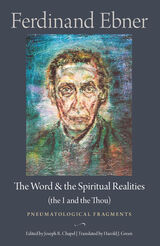 The Word and the Spiritual Realities (the I and the Thou)
Ferdinand Ebner
Catholic University of America Press, 2021 This volume will constitute the first published English translation of Ferdinand Ebner’s seminal 1921 work, Das Wort und die geistigen realitäten – long available in major languages but never in English. It is frequently compared with Martin Buber’s, I and Thou, published in 1923, which actually draws its central I-Thou insight from Ebner.
In recent centuries, Philosophy reflects a turn toward the autonomous subject vs. a biblical sense of person. The limits/failures of science manifest in the horrors of World War I led to the emergence of a “Dialogical Personalist Philosophy” in reaction to the universal doubt of Cartesian thought and to German Idealism, which engages the idea or representation but not the reality of “things-in-themselves.”
The core of Ebner: human speech is constitutive of human existence: humans are given the "word." "Having the word" is a miraculous gift from God. It is only in the word, in language, that an "I" meets a "Thou," that relationship and self-identity can occur, and this word is given in Jesus Christ, the Word made flesh: “In the beginning was the Word”; Jesus, the Logos of St. John's Gospel, mediates between God and man and “stands” between I and Thou. It is through Jesus that it is possible to address God in the human thou.
The key to life’s meaning, to the centrality of relationship, and to God's continuous action in His creation, is found in the I-Thou question: why the I can never be found in itself, and so must look in the thou, while the false I will try to possess the thou as an object of power. This is Ebner's critique of idealist thought: reality, truth, and personal identity are neither ideas, nor found in ideas, therefore, Descartes' cogito must be rejected, for the existence of the I can't be founded or proved by solitary thinking, but only in relation with a thou.
 Word by Word: Emancipation and the Act of Writing
Christopher Hager
Harvard University Press, 2012 One of the cruelest abuses of slavery in America was that slaves were forbidden to read and write. Consigned to illiteracy, they left no records of their thoughts and feelings apart from the few exceptional narratives of Frederick Douglass and others who escaped to the North—or so we have long believed. But as Christopher Hager reveals, a few enslaved African Americans managed to become literate in spite of all prohibitions, and during the halting years of emancipation thousands more seized the chance to learn. The letters and diaries of these novice writers, unpolished and hesitant yet rich with voice, show ordinary black men and women across the South using pen and paper to make sense of their experiences.
Through an unprecedented gathering of these forgotten writings—from letters by individuals sold away from their families, to petitions from freedmen in the army to their new leaders, to a New Orleans man’s transcription of the Constitution—Word by Word rewrites the history of emancipation. The idiosyncrasies of these untutored authors, Hager argues, reveal the enormous difficulty of straddling the border between slave and free.
These unusual texts, composed by people with a unique perspective on the written word, force us to rethink the relationship between literacy and freedom. For African Americans at the end of slavery, learning to write could be liberating and empowering, but putting their hard-won skill to use often proved arduous and daunting—a portent of the tenuousness of the freedom to come.
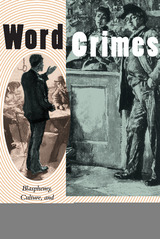 Word Crimes: Blasphemy, Culture, and Literature in Nineteenth-Century England
Joss Marsh
University of Chicago Press, 1998 In 1883 the editor of a penny newspaper stood trial three times for the "obsolete" crime of blasphemy. The editor was G. W. Foote, the paper was the Freethinker, and the trial was the defining event of the decade. Foote's "martyrdom" completed blasphemy's nineteenth-century transformation from a religious offense to a class and cultural crime.
From extensive archival and literary research, Joss Marsh reconstructs a unified and particular account of blasphemy in Victorian England. Rewriting English history from the bottom up, she tells the forgotten stories of more than two hundred working-class "blasphemers," like Foote, whose stubborn refusal to silence their "hooligan" voices helped secure our rights to speak and write freely today. The new standards of criminality used to judge their "word crimes" rewrote the terms of literary judgment, demoting the Bible to literary masterpiece and raising Literature as the primary standard of Victorian cultural value.
Word Cultures: Radical Theory and Practice in William S. Burroughs' Fiction
Robin Lydenberg
University of Illinois Press, 1987 In this pioneering study, Robin
Lydenberg focuses upon the stylistic accomplishments of this controversial and
experimental writer. In doing so, she skillfully demonstrates that the ideas
we now recognize as characteristic of post-structuralism and deconstruction
were being developed independently by Burroughs long ago.
 Word Embodied: The Jeweled Pagoda Mandalas in Japanese Buddhist Art
Halle O’Neal
Harvard University Press, 2018 In this study of the Japanese jeweled pagoda mandalas, Halle O’Neal reveals the entangled realms of sacred body, beauty, and salvation. Much of the previous scholarship on these paintings concentrates on formal analysis and iconographic study of their narrative vignettes. This has marginalized the intriguing interplay of text and image at their heart, precluding a holistic understanding of the mandalas and diluting their full import in Buddhist visual culture. Word Embodied offers an alternative methodology, developing interdisciplinary insights into the social, religious, and artistic implications of this provocative entwining of word and image.
O’Neal unpacks the paintings’ revolutionary use of text as picture to show how this visual conflation mirrors important conceptual indivisibilities in medieval Japan. The textual pagoda projects the complex constellation of relics, reliquaries, scripture, and body in religious doctrine, practice, and art. Word Embodied also expands our thinking about the demands of viewing, recasting the audience as active producers of meaning and offering a novel perspective on disciplinary discussions of word and image that often presuppose an ontological divide between them. This examination of the jeweled pagoda mandalas, therefore, recovers crucial dynamics underlying Japanese Buddhist art, including invisibility, performative viewing, and the spectacular visualizations of embodiment.
 Word, Image, and Deed in the Life of Su Shi
Ronald C. Egan
Harvard University Press, 1994 Remembered today primarily as a poet, calligrapher, and critic, the protean Su Shi was an outspoken player in the contentious politics and intellectual debates of the Northern Song dynasty. In this comprehensive study, Ronald C. Egan analyzes Su’s literary and artistic work against the background of eleventh-century developments within Buddhist and Confucian thought and Su’s dogged disagreement with the New Policies of Wang Anshi.
Egan explicates Su’s views on governance, the classics, and Buddhism; and he describes Su’s social-welfare initiatives, arrest for disloyalty, and exiles. Finding a key to the richness of Su’s artistic activities in his vacillation on the significance of aesthetic pursuits, Egan explores Su’s shi and ci poetry and Su’s promotion of painting and calligraphy, looking specially at the problem of subjectivity. In a concluding chapter, he reconsiders Su’s role as a founder of the wenren (“literati”) and challenges the conventional understanding of both Su and the Northern Song wenren generally.
Word Images: New Perspectives on Canícula and Other Works by Norma Elia Cantú
Edited by Gabriella Gutiérrez y Muhs; Foreword by María Herrera-Sobek
University of Arizona Press, 2017 This collection of critical essays unveils for the first time Norma Elia Cantú’s contribution as a folklorist, writer, scholar, and teacher. Word Images unites two valuable ways to view and use Cantú’s work: Part 1 comprises essays that individually examine Cantú’s oeuvre through critical analysis. Part 2 is dedicated to ideas and techniques to improve the use of this literature by teachers and professors, with a particular focus on tools for using Canícula.
Contributors:
Steven W. Bender
Aurora Chang
Vanessa Fonseca
Gabriella Gutiérrez y Muhs
María Herrera-Sobek
Ellen McCracken
María Esther Quintana Millamoto
Aldo Ulisses Reséndiz Ramírez
Rose Rodríguez-Rabin
Jesús Rosales
Carlos Sibaja García
María Socorro Tabuenca
Juan Velasco
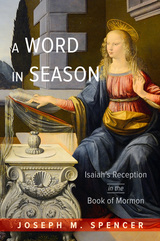 A Word in Season: Isaiah's Reception in the Book of Mormon
Joseph M. Spencer
University of Illinois Press, 2023 A groundbreaking look at the relationship between two sacred texts The Book of Mormon’s narrative privileges Isaiah over other sources, provocatively interpreting and at times inventively reworking the biblical text. Joseph M. Spencer sees within the Book of Mormon a programmatic investigation regarding the meaning and relevance of the Book of Isaiah in a world increasingly removed from the context of the times that produced it. Working from the crossroads of reception studies and Mormon studies, Spencer investigates and clarifies the Book of Mormon’s questions about the vitality of Isaiah’s prophetic project. Spencer’s analysis focuses on the Book of Mormon’s three interactions with the prophet: the character of Abinadi; the resurrected Jesus Christ; and the nation-founding figure of Nephi. Working from the Book of Mormon as it was dictated, Spencer details its vital and overlooked place in Isaiah’s reception while recognizing the interpretation of Isaiah as an organizing force behind the Book of Mormon.
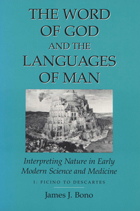 Word Of God & The Languages Of Man: Interpreting Nature In Early Modern Science And Medicine Volume I, Ficino To Descartes
James J. Bono
University of Wisconsin Press, 1995 This remarkably ambitious work relates changes in scientific and medical thought during the Scientific Revolution (circa 1500–1700) to the emergence of new principles and practices for interpreting language, texts, and nature. An invaluable history of ideas about the nature of language during this period, The Word of God and the Languages of Man also explores the wider cultural origins and impact of these ideas. Its broad and deeply complex picture of a profound sociocultural and intellectual transformation will alter our definition of the scientific revolution.
James J. Bono shows how the new interpretive principles and scientific practices of the sixteenth and seventeenth centuries evolved in response to new views of the relationship between the “Word of God” and the “Languages of Man” fostered by Renaissance Humanism, Neoplatonism, magic, and both the reformed and radical branches of Protestantism. He traces the cultural consequences of these ideas in the thought and work of major and minor actors in the scientific revolution—from Ficino and Paracelsus to Francis Bacon and Descartes. By considering these natural philosophers in light of their own intellectual, religious, philosophical, cultural, linguistic, and especially narrative frameworks, Bono suggests a new way of viewing the sociocultural dynamics of scientific change in the pre–modern period—and ultimately, a new way of understanding the nature and history of scientific thought. The narrative configuration he proposes provides a powerful alternative to the longstanding “revolutionary” metaphor of the history of the scientific revolution.
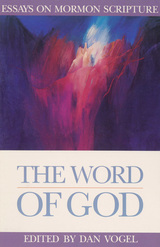 The Word of God: Essays on Mormon Scripture
Dan Vogel
Signature Books, 1990 Editor’s Introduction
by Dan Vogel
[p.vii]Belief in continuing revelation and an open canon of scripture distinguishes Mormonism from mainstream Christianity. That the church founded by Joseph Smith would proceed on grounds of continuing revelation was established at the outset. The day the church was organized, 6 April 1830, Joseph Smith dictated a revelation commanding the church to “give heed unto all his words and commandments which he shall give unto you as he receiveth them,… for his words ye shall receive, as if from mine own mouth, in all patience and faith” (LDS D&C 21:4-5; RLDS D&C 19:2). Another revelation declared that the Lord had “given him the keys of the mysteries, and the revelations which are sealed” (LDS D&C 28:7; RLDS D&C 27:12). The principle of continuing revelation insured a gradual unfolding and canonization of various doctrines.
In addition to the Bible, the official canon of the Utah-based Church of Jesus Christ of Latter-day Saints includes the Book of Mormon (first published in Palymra, New York, in 1830), the Doctrine and Covenants (issued in 1833 as A Book of Commandments [incomplete] and in 1835 in Kirtland, Ohio), and the Pearl of Great Price (first published in England in 1851 and republished with changes in Salt Lake City in 1880). This latter volume of scripture contains selections from Joseph Smith’s writings including the Book of Moses (extracted from Smith’s “inspired version” or “translation” of the Bible) and the Book of Abraham (taken from Smith’s interpretation of an ancient Egyptian papyrus). The Reorganized Church of Jesus Christ of Latter Day Saints, headquartered in Independence, [p.viii] Missouri, the second largest institution tracing its origins to Joseph Smith, publishes its own editions of the Book of Mormon and Doctrine and Covenants, as well as Smith’s revision of the Bible, but has not canonized the Book of Abraham.
All but one of the following fifteen essays chosen for inclusion in The Word of God: Essays on Mormon Scripture were written by Mormons from either the LDS or RLDS tradition. (The exception is Susan Curtis.) However, rather than being guided by institutional imperatives, each author has attempted to understand Mormon scripture on its own terms. Additionally, each essay wrestles with the problem of the human and the divine in scripture.
Because one’s belief about revelation affects how one approaches scripture, debate about scriptural interpretation often centers on the nature of revelation. The written “word of God” does not come to us direct but rather through human intermediaries. In the words of J. R. Dummelow, writing in A Commentary on The Holy Bible (New York) in 1908, “It is as sunlight through a painted window—the light must come to us coloured by the medium… It is foolish to ignore the existence of the human medium through which the light has come” (p. cxxxv). Book of Mormon prophets, for instance, repeatedly express anxiety over human limitations to convey in language their spiritual teachings. Nephi prays that “the words which I have written in weakness will be made strong” (LDS 2 Ne. 33:4; RLDS 2 Ne. 15:5), and Moroni writes, “if there are faults they are the mistakes of men; wherefore, condemn not the things of God” (Title Page); A position which does not account for the human in revelation will undoubtedly produce disillusionment or distortion.
To consider the human aspects of prophets, revelation, or scripture does not detract from religion, as some traditionalists fear. On the contrary, what cultural and environmental studies challenge are simplistic assumptions about the nature of revelation. Again, Dummelow notes, “Because of our false theory of Verbal Inspiration we are puzzled when the divine is mingled with the human. We must learn that the divine is mingled with the human” (ibid.). We must seek a definition of revelation which accounts for the spectrum of characteristics we encounter in scripture.
Even when we acknowledge the human in revelation and scripture, what exactly is its role and influence? These are not easy [p.ix] questions to answer. But the more precise our identification of human influence on scripture, the more refined our definition of revelation will become. It is hoped that this collection of essays will contribute to that process of understanding.
An awareness of revelation and scripture is an ongoing process and there are differing positions. Readers should therefore understand that neither the authors nor the editor necessarily agree with the views and conclusions reached in all of the essays that follow.
Appreciation is extended to the following authors and publications for permission to reproduce, sometimes in a different format and/or under a different title, many of the essays appearing here: to Dialogue: A Journal of Mormon Thought for essays by Kevin L. Barney, Lester E. Bush, A. Bruce Lindgren, William D. Russell, and George D. Smith; to Sunstone for essays by Anthony A. Hutchinson, Melodie Moench Charles, and Mark D. Thomas; to the John Whitmer Historical Association Journal for essays by Susan Curtis and James E. Lancaster; to Courage for the essay by Richard P. Howard; and to University Bulletin (RLDS) for the essay by Geoffrey F. Spencer. Three of the essays—”Joseph Smith’s Scriptural Cosmology,” by Dan Vogel and Brent Lee Metcalfe; and “Reducing Dissonance: The Book of Abraham as a Case Study” and “Making the Scriptures ‘Indeed One in Our Hands,'” both by Edward H. Ashment—are published here for the first time.
Throughout the essays standardized parenthetical scriptural references are provided for the most recent editions published by both the LDS and RLDS churches. Thus LDS D&C 76:1 refers to the most recent edition of the Doctrine and Covenants published by the LDS church, section 76, verse 1. RLDS 1 Ne. 2:4 refers to the Book of First Nephi, chapter 2, verse 4, in the most recent edition of the Book of Mormon published by the RLDS church. JST means the Joseph Smith translation of the King James Bible published by the RLDS church; Moses to the Book of Moses and Abr. to the Book of Abraham as found in current editions of the Pearl of Great Price (PGP) published by the LDS church.[p.1]
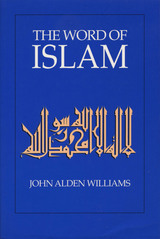 The Word of Islam
Edited by John Alden Williams
University of Texas Press, 1993 Since the 1970s, Islam has been undergoing a tremendous resurgence throughout the world. This resurgence has often been labeled "Islamic fundamentalism" by the media, but it includes believers of every persuasion, from the most conservative to the most liberal. Given this fact, it is vital for the West to understand the terms in which Islam thinks and to communicate effectively with Muslims. This anthology includes writings central to Islamic thought, some translated earlier but here redone, and others which have never before appeared in any Western language. The selections include an interpretation of the Qur'an, as well as portions of the Hadith, or sayings and actions of the Prophet; Islamic law; mysticism (Sufism); theology; and sectarian writings. A final essay on Islam today places these writings in their contemporary context and shows the breadth and variety of Islamic belief and practice. Compiled with the intention of letting Islam describe itself in its own words, the book is an important source for all students of Muslim culture and world religions. This book is similar in scope to Williams' well-known 1961 George Braziller publication, but freshly written and much improved.
 Word of Mouth: Asian American Artists Sharing Recipes
Laura Kina
University of Arkansas Press, 2025 Conceived during the 2020 COVID-19 lockdown and the accompanying rise in anti-Asian bigotry, Word of Mouth: Asian American Artists Sharing Recipes is an artists’ cookbook featuring stories and artwork from twenty-three Asian American and Asian diaspora artists from across the United States, with contributions that range from Los Angeles–based performance artist Kristina Wong’s “Recipe for Political Action” to New Orleans–based painter Francis Wong’s family recipe for stir-fried Szechuan alligator. Word of Mouth was first published as an online exhibition through the Virtual Asian American Art Museum. This print version features a new introduction by art historian Michelle Yee, expanded essays, and brand-new recipes. Each contribution is accompanied by an original illustration and enriched by the artist’s reflections on how their cuisine has been impacted by histories of war, migration, relocation, labor, or mixing. A pandemic project turned illustrated cookbook, this unique collection disrupts genre expectations to celebrate how artists use food to nurture and sustain their diverse communities and artistic practices as well as to build connection during times of isolation, grief, and loss.
 The Word of the Lord Is Upon Me: The Righteous Performance of Martin Luther King, Jr.
Jonathan Rieder
Harvard University Press, 2008 “You don’t know me,” Martin Luther King, Jr., once declared to those who criticized his denunciation of the Vietnam War, who wanted to confine him to the ghetto of “black” issues. Now, forty years after being felled by an assassin’s bullet, it is still difficult to take the measure of the man: apostle of peace or angry prophet; sublime exponent of a beloved community or fiery Moses leading his people up from bondage; black preacher or translator of blackness to the white world?This book explores the extraordinary performances through which King played with all of these possibilities, and others too, blending and gliding in and out of idioms and identities. Taking us deep into King’s backstage discussions with colleagues, his preaching to black congregations, his exhortations in mass meetings, and his crossover addresses to whites, Jonathan Rieder tells a powerful story about the tangle of race, talk, and identity in the life of one of America’s greatest moral and political leaders.A brilliant interpretive endeavor grounded in the sociology of culture, The Word of the Lord Is Upon Me delves into the intricacies of King’s sermons, speeches, storytelling, exhortations, jokes, jeremiads, taunts, repartee, eulogies, confessions, lamentation, and gallows humor, as well as the author’s interviews with members of King’s inner circle. The King who emerges is a distinctively modern figure who, in straddling the boundaries of diverse traditions, ultimately transcended them all.
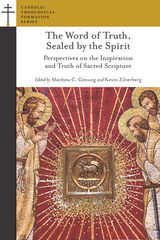 The Word of Truth, Sealed by the Spirit: Perspectives on the Inspiration and Truth of Sacred Scripture
Matthew C. Genung
Saint Paul Seminary Press , 2022 The Word of Truth, Sealed by the Spirit is a collection of seven essays pertaining to the topic of biblical inspiration and truth. Two chapters provide a critical analysis of the Pontifical Biblical Commission’s 2014 document The Inspiration and Truth of Sacred Scripture and reflect upon its relevance and outcome. Five chapters respond to a particular aspect of this document by investigating a hermeneutical or exegetical question in order to advance the dialogue on the questions of biblical inspiration and truth. This book is intended not only for Catholic seminary and university professors and students but also Protestant scholars and students, as well as catechized lay people of all Christian denominations.
Luis Sánchez-Navarro, DCJM, writes on the importance of understanding the relationship between revelation, biblical inspiration, and truth for both biblical interpretation and for Christian living. Michael Magee provides a critical analysis of the PBC document by situating it within the recent history of the Church’s attempts to clarify the theology of biblical inspiration and truth. Matthew C. Genung studies Exodus 19 in its context, showing that the Bible itself indicates that its nature as emended Scripture pertains to its inspired character. Anthony Pagliarini writes about the Book of Ezekiel as inspired Scripture given the non-fulfillment of Ezekiel’s prophetic vision of the restored Temple. Aaron Pidel, SJ, analyzes Joseph Ratzinger’s writings on hermeneutics and biblical theology, to propose a reliable methodology for determining the historicity of conflicting biblical reports. Marcin Kowalski, analyzing 1 Corinthians 11:2–16, addresses the question of the inspired character of a text at variance with changing gender roles in society. Kelly Anderson evaluates biblical texts depicting an inner-trinitarian dialogue in order to shed light on the relationship of inspired Scripture to the eternal dialogue of God.
 Word on the Street
Edited by Elisha Foust and Sophie Fuggle
University of London Press, 2011 At the site of everyday social interaction, the street has always provided a source of inspiration for writers, artists and musicians. It has also become the focus for critical theorists such as Walter Benjamin and Michel de Certeau in their attempt to push the limits of textual analysis beyond literature and art towards our daily experience of the world. This collection of essays and interviews examines the street as both the site and space of competing discourses and also a form of discourse in its own right. Covering a broad range of topics including the role of the street in literature, photography and journalism, practices which take place upon the streets such as skateboarding, graffiti and flânerie and the politics and philosophy involved in negotiating the street, Word on the Street affirms the continued and renewed importance of the pedestrian street in the social consciousness of the the 21st century.
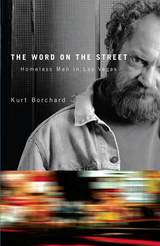 The Word On The Street: Homeless Men In Las Vegas
Kurt Borchard
University of Nevada Press, 2007 Just beyond Las Vegas’s neon and fantasy live thousands of homeless people, most of them men. To the millions of visitors who come to Las Vegas each year to enjoy its gambling and entertainment, the city’s homeless people are largely invisible, segregated from tourist areas because it’s “good business.” Now, through candid discussions with homeless men, analysis of news reports, and years of fieldwork, Kurt Borchard reveals the lives and desperation of men without shelter in Las Vegas. Borchard’s account offers a graphic, disturbing, and profoundly moving picture of life on Las Vegas’s streets, depicting the strategies that homeless men employ in order to survive, from the search for a safe place to sleep at night to the challenges of finding food, maintaining personal hygiene, and finding an acceptable place to rest during a long day on the street. That such misery and desperation exist in the midst of Las Vegas’s hedonistic tourist economy and booming urban development is a cruel irony, according to the author, and it threatens the city’s future as a prime tourist destination. The book will be of interest to social workers, sociologists, anthropologists, politicians, and all those concerned about changing the misery on the street.
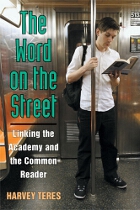 The Word on the Street: Linking the Academy and the Common Reader
Harvey Michael Teres
University of Michigan Press, 2010 "The Word On the Street invites humanities scholars to move beyond the classroom and the monograph to share the pleasures of art in ways that engage the intelligence of the common reader, cultivating the critical imagination so vital to American cultural democracy. Lively and thought-provoking, Teres lays out contemporary debates and wades into them with gusto."
---Nancy Cantor, Syracuse University "At a moment when questions about the literary, 'bookishness,' and the future of print are being urgently raised, with incessant national attention to the perceived crises of literacy and reading, Teres' thoughtful, broadly democratic, but also tough-minded examination of both 'common readers' and academic readers makes a real contribution to the debate."
---Julie Ellison, University of Michigan Despite significant changes since the mid-twentieth century in American critical culture---the culture emanating from the serious review of books, ideas, and the arts---it attracts only a small and declining minority of Americans. However productive this culture has been, American society has not approached the realization of Emerson's or Dewey's vision of a highly participatory American cultural democracy. Such a culture requires critics who are read by the average citizen, but the migration of critics and intellectuals from the public to the academy has resulted in fewer efforts to engage with ordinary citizens. The Word on the Street investigates this disjunction between the study of literature in the academy and the interests of the common reader and society at large, arguing the vital importance of publicly engaged scholarship in the humanities. Teres chronicles how the once central function of the humanities professorate---to teach students to appreciate and be inspired by literature---has increasingly been lost to literary and cultural studies in the last thirty years. The Word on the Street argues for a return to an earlier model of the public intellectual and a literary and cultural criticism that is accessible to ordinary citizens. Along the way, Teres offers an illuminating account of the current problem and potential solutions, with the goal of prompting a future vision of publicly engaged scholarship that resonates with the common reader and promotes an informed citizenry. Harvey Teres is Associate Professor of English at Syracuse University. Cover image: Ruth Fremson/The New York Times/Redux The New Public Scholarship
 A Word on Words: The Best of John Seigenthaler's Interviews
Edited by Pat Toomay and Frye Gaillard; Epilogue by Andrew Maraniss
Vanderbilt University Press, 2023 For years the legendary John Seigenthaler hosted A Word on Words on Nashville's public television station, WNPT. During the show’s four-decade run (1972 to 2013), he interviewed some of the most interesting and most important writers of our time. These in-depth exchanges revealed much about the writers who appeared on his show and gave a glimpse into their creative processes. Seigenthaler was a deeply engaged reader and a generous interviewer, a true craftsman. Frye Gaillard and Pat Toomay have collected and transcribed some of the iconic interactions from the show.
Featuring interviews with:
Arna Bontemps • Marshall Chapman • Pat Conroy • Rodney Crowell • John Egerton • Jesse Hill Ford • Charles Fountain • William Price Fox • Kinky Friedman • Frye Gaillard • Nikki Giovanni • Doris Kearns Goodwin • David Halberstam • Waylon Jennings • John Lewis • David Maraniss • William Marshall • Jon Meacham • Ann Patchett • Alice Randall • Dori Sanders • John Seigenthaler Sr. • Marty Stuart • Pat Toomay
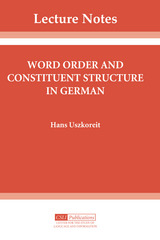 Word Order and Constituent Structure in German
Hans Uszkoreit
CSLI, 1987 This book applies the highly constrained grammatical framework of Generalized Phrase Structure Grammar of the syntax of German, focusing on the complex interaction of word order phenomena and constituent structure. Uszkoreit modifies and extends this framework to permit the adequate treatment of partially free word order as it occurs in German and probably to some degree in all natural languages. Through Uszkoreit's redefined notion of linear precedence rules, it has become possible for the first time to present a formalized analysis of the interaction of the competing syntactic, semantic, pragmatic, and stylistic principles that determine the order of arguments and adjuncts.
Most of the book is dedicated to the proof that a phrase-structure-grammar model can offer an adequate description of a language with much freer word order than English and at the same time provide new insights in the structure of this language. A highly concentrated and elegant grammar fragment is given, which offers intuitive analyses for such notoriously problematic phenomena as (1) word order differences between main clauses and subordinate clauses, (2) the second position of the finite verb in assertion main clauses, (3) the order among main, auxiliary, and modal verbs, (4) the derivation and distribution of separable prefix verbs, and (5) the partially free order among verb complements and adjuncts.
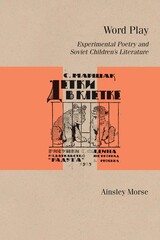 Word Play: Experimental Poetry and Soviet Children’s Literature
Ainsley Morse
Northwestern University Press, 2021 Word Play traces the history of the relationship between experimental aesthetics and Soviet children’s books, a relationship that persisted over the seventy years of the Soviet Union’s existence. From the earliest days of the Soviet project, children’s literature was taken unusually seriously—its quality and subject matter were issues of grave political significance. Yet, it was often written and illustrated by experimental writers and artists who found the childlike aesthetic congenial to their experiments in primitivism, minimalism, and other avant‑garde trends. In the more repressive environment following Stalin’s rise to power, experimental aesthetics were largely relegated to unofficial and underground literature, but unofficial writers continued to author children’s books, which were often more appealing than adult literature of the time.
Word Play focuses on poetry as the primary genre for both children’s and unofficial literature throughout the Soviet period. Five case studies feature poets‑cum‑children’s writers—Leonid Aronzon, Oleg Grigoriev, Igor Kholin, Vsevolod Nekrasov, and Dmitri Prigov—whose unpublished work was not written for children but features lexical and formal elements, abundant humor, and childlike lyric speakers that are aspects of the childlike aesthetic. The book concludes with an exploration of the legacy of this aesthetic in Russian poetry today. Drawing on rich primary sources, Word Play joins a growing literature on Russian children’s books, connecting them to avant-garde poetics in fresh, surprising ways.
 Word Rides Again: Rereading The Frontier In American Fiction
J. David Stevens
Ohio University Press, 2001 With much recent scholarship polarizing frontier novels into “popular” and “literary” camps, The Word Rides Again challenges the critical orthodoxy that such works have little in common, arguing instead that formulaic Western fictions can subtly (and even subversively) share cultural concerns with more highbrow brethren. Each chapter focuses on a writer who has traditionally been classified as either popular or artistic, reading a representative fictional work against prevailing scholarly trends. In this manner, Bret Harte’s sentimental stories become gender-bending experiments in which women assume male roles and even enjoy lesbian relationships. Owen Wister’s The Virginian is transmuted from a misogynistic diatribe into a complex meditation on the peculiarly American relation of violence to male identity. And even Willa Cather’s Death Comes for the Archbishop, rather than the apotheosis of a religious leader, becomes a somewhat standard version of the popular frontier story.
The Word Rides Again represents a significant departure from more traditional studies of frontier literature. It reaffirms the continuum between popular and literary texts and explores the ways that frontier novels have echoed, endorsed, and extended each other from the inception of the genre.
Word Space Multiplicities, Openings, Andings
Jim Rosenberg
West Virginia University Press, 2015
Word Space, Multiplicities, Openings, Andings will change your understanding of digital writing. The book offers the first comprehensive collection of Jim Rosenberg’s essays, gathering what may be the most significant and overarching single exploration of hypertext. It includes historically significant texts such as “The Interactive Diagram Sentence” as well as Rosenberg’s most recent essays. This book is required reading for digital humanists, electronic writers, and new media scholars.
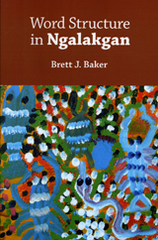 Word Structure in Ngalakgan
Brett Baker
CSLI, 2008 Word Structure in Ngalakgan is the first major theoretical work on the phonology and morphology of an Australian language in 20 years. Ngalakgan is a non-configurational, polysynthetic, and agglutinative language of the Gunwinyguan family. The morphological structures of Ngalakgan require a two-level analysis: ROOT-level and WORD-level. Only the WORD-level shows regular phonologically conditioned alternations. The ROOT-level is entirely frozen. Baker demonstrates that Optimality Theory must take account of differences in the productivity of morphological relations in the input, in order to maintain the simplest analysis. Ngalakgan has a quantity-sensitive stress system which is hitherto undescribed and which contradicts the predictions of current Moraic Theory. Syllables closed by codas which share place with a following onset do not count as heavy even though heterorganic codas do. The same system is found in neighbouring languages. This and other patterns suggest that syllabification in these languages is gesture-, rather than timing-, based.
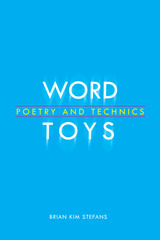 Word Toys: Poetry and Technics
Brian Kim Stefans
University of Alabama Press, 2017 An engaging and thought provoking volume that speculates on a range of textual works—poetic, novelistic, and programmed—as technical objects
With the ascent of digital culture, new forms of literature and literary production are thriving that include multimedia, networked, conceptual, and other as-yet-unnamed genres while traditional genres and media—the lyric, the novel, the book—have been transformed. Word Toys: Poetry and Technics is an engaging and thought-provoking volume that speculates on a range of poetic, novelistic, and programmed works that lie beyond the language of the literary and which views them instead as technical objects.
Brian Kim Stefans considers the problems that arise when discussing these progressive texts in relation to more traditional print-based poetic texts. He questions the influence of game theory and digital humanities rhetoric on poetic production, and how non-digital works, such as contemporary works of lyric poetry, are influenced by the recent ubiquity of social media, the power of search engines, and the public perceptions of language in a time of nearly universal surveillance.
Word Toys offers new readings of canonical avant-garde writers such as Ezra Pound and Charles Olson, major successors such as Charles Bernstein, Alice Notley, and Wanda Coleman, mixed-genre artists including Caroline Bergvall, Tan Lin, and William Poundstone, and lyric poets such as Harryette Mullen and Ben Lerner. Writers that trouble the poetry/science divide such as Christian Bök, and novelists who have embraced digital technology such as Mark Z. Danielewski and the elusive Toadex Hobogrammathon, anchor reflections on the nature of creativity in a world where authors collaborate, even if unwittingly, with machines and networks. In addition, Stefans names provocative new genres—among them the nearly formless “undigest” and the transpacific “miscegenated script”—arguing by example that interdisciplinary discourse is crucial to the development of scholarship about experimental work.
 The Word Tree: Revitalizing Indigenous Languages in Abya Yala
Edited by Adela Pineda Franco and Socorro VenegasTranslated by Tanya Huntington
University of Texas Press, 2025 A collaborative effort to address some of the chronic issues affecting the preservation and revitalization of indigenous languages. What does it mean to "revitalize" an indigenous language when approximately 6,700 of the nearly 7,000 left in the world need protection? Where to begin? Each language offers a sense of history, identity, and belonging within society to the people actively using it. The Word Tree begins by hearing directly from those still communicating in some of these less dominant languages, from Achi'es to Zapotec, and offers the metaphor of a tree whose political roots sustain the trunk of education that will bear the fruit of learning languages anew. Whether describing the tension between indigenous and state-recognized languages; the process of linguistics displacement resulting from migration; or the value of locally focused efforts in a cultural cooperative, these nine essays offer fresh and useful perspectives. The Word Tree is the result of a collaboration between the National Autonomous University of Mexico and the University of Texas at Austin. Gathering diverse concerns, experiences, explorations, proposals, and perspectives on the revitalization of some of the continent's most imperiled indigenous languages, the contributors aim to introduce their struggle for existence to a modern world. From south to north, the Quecha or Runasimi, Maya, Zapotec or Diidxazá, Chatino, Mè'pháá or Tlapaneco, Mixteco, Mixe or Auukj, and Nahuatl languages exist in all their vast complexities and contexts. At its most fundamental level, this book is a call to develop alternative paths for human existence in which caring for one another is the consensus.
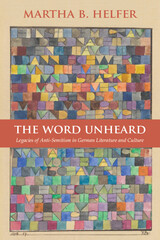 The Word Unheard: Legacies of Anti-Semitism in German Literature and Culture
Martha B. Helfer
Northwestern University Press, 2011 The publication of Martha B. Helfer’s The Word Unheard: Legacies of Anti-Semitism in German Literature and Culture marks a stunningly original new direction in the interpretation of canonical works of eighteenth- and nineteenth-century German literature.
Between 1749 and 1850—the formative years of the so-called Jewish Question in Germany—the emancipation debates over granting full civil and political rights to Jews provided the topical background against which all representations of Jewish characters and concerns in literary texts were read. Helfer focuses sharply on these debates and demonstrates through close readings of works by Gotthold Lessing, Friedrich Schiller, Achim von Arnim, Annette von Droste- Hülshoff, Adalbert Stifter, and Franz Grillparzer how disciplinary practices within the field of German studies have led to systematic blind spots in the scholarship on anti-Semitism to date.
While all the authors discussed are well known and justly celebrated, the particular works addressed represent an effective mix of enduring classics and less recognized, indeed often scandalously overlooked, texts whose consideration leads to a reevaluation of the author’s more mainstream oeuvre. Although some of the works and authors chosen have previously been noted for their anti-Semitic proclivities, the majority have not, and some have even been marked by German scholarship as philo-Semitic—a view that The Word Unheard undertakes not so much to refute as to complicate, and in the process to question not only these texts but also the deafness of the German scholarly tradition. With implications that reach into many disciplines, The Word Unheard will be a foundational study for all scholars of modern Germany.
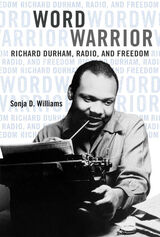 Word Warrior: Richard Durham, Radio, and Freedom
Sonja D. Williams
University of Illinois Press, 2015 Posthumously inducted into the National Radio Hall of Fame in 2007, Richard Durham creatively chronicled and brought to life the significant events of his times. Durham's trademark narrative style engaged listeners with fascinating characters, compelling details, and sharp images of pivotal moments in American and African American history and culture. In Word Warrior, award-winning radio producer Sonja D. Williams draws on archives and hard-to-access family records, as well as interviews with family and colleagues like Studs Terkel and Toni Morrison, to illuminate Durham's astounding career. Durham paved the way for black journalists as a dramatist and a star investigative reporter and editor for the pioneering black newspapers the Chicago Defender and Muhammed Speaks. Talented and versatile, he also created the acclaimed radio series Destination Freedom and Here Comes Tomorrow and wrote for popular radio fare like The Lone Ranger. Incredibly, his energies extended still further--to community and labor organizing, advising Chicago mayoral hopeful Harold Washington, and mentoring generations of activists. Incisive and in-depth, Word Warrior tells the story of a tireless champion of African American freedom, equality, and justice during an epoch that forever changed a nation.
The Word We Used For It
Max Garland
University of Wisconsin Press, 2017 Winner of the Brittingham Prize in Poetry, selected by Robert Wrigley
In these poems Max Garland confesses, even revels in, the fabricated nature of memory. He links personal and localized patterns (fingerprints, plowed fields) to the motions animating the insides of atoms and the unfurling of remote galaxies. Back on earth, the poems honor the decidedly homespun quality of grit—how creatures both animal and human bear up in the face of mounting odds against them. Garland suggests that imagination itself requires grit, to be called upon when the more spectacular angels are otherwise occupied.
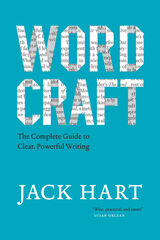 Wordcraft: The Complete Guide to Clear, Powerful Writing
Jack Hart
University of Chicago Press, 2021 Legendary writing coach Jack Hart spent twenty-six years at the Oregonian and has taught students and professionals of all stripes, including bloggers, podcasters, and more than one Pulitzer Prize winner. Good writing, he says, has the same basic attributes regardless of genre or medium. Wordcraft shares Hart’s techniques for achieving those attributes in one of the most broadly useful writing books ever written.
Originally published in 2006 as A Writer’s Coach, the book has been updated to address the needs of writers well beyond print journalists. Hart breaks the writing process into a series of manageable steps, from idea to polishing. Filled with real-world examples, both good and bad, Wordcraft shows how to bring such characteristics as force, brevity, clarity, rhythm, and color to any kind of writing.
Wordcraft now functions as a set with the second edition of Hart’s book Storycraft, on the art of storytelling, also available from Chicago.
Word-Formation in Provencal
Edward L. Adams
University of Michigan Press, 1913 This volume in the University of Michigan Studies: Humanistic Series is a comprehensive study of the various processes of word formation in the Provençal language. The five major sections of the book cover words formed by adding suffixes; words formed by adding prefixes; parasyntheta (words formed by the simultaneous addition of a prefix and a suffix); other common methods of word formation (e.g., compound words; derivations from one part of speech to another, such as nouns derived from verbs); and hybrid formations created by some combination thereof.
 Wordless Rhetoric: Musical Form and the Metaphor of the Oration
Mark Evan Bonds
Harvard University Press, 1991 Although “form” is one of the most commonly used terms in music interpretation, it remains one of the most ambiguous. This penetrating study explores evolving ideas of musical form from a historical perspective and sheds new light on current conceptualizations of music.
Mark Evan Bonds examines the image—dominant among eighteenth-century composers and analysts—of music as a language, a kind of wordless discourse, which could move audiences. In the Baroque and Classical periods an instrumental composition was viewed as analogous to an oration, its form the intelligible elaboration of a central thematic idea. The predominant emphasis, therefore, was on the perspective of the listener. This rhetorical metaphor is shown giving way in the nineteenth century to the idea of a musical work as an organic entity, an image that emphasizes the autonomy of the work. The listener, in effect, becomes merely an interested third party.
In his account of these changing perspectives, Bonds draws on the writing of a broad range of eighteenth- and nineteenth-century theorists. His analyses focus on specific sonata form movements by Haydn, Mozart, and Beethoven and are informed by the theoretical premises that characterize the composers’ own times. In a final synthesis, the eighteenth-century rhetorical model—with its focus on the structural function of musical ideas and the role of the listener—emerges as a forerunner of today’s listener-oriented and plot theories about musical form.
In Wordless Rhetoric, Bonds makes fruitful use of literary theory to develop his innovative evaluation of musical form. This book will be invaluable to anyone who studies music or seeks to understand music analysis.
Words and Contents
Richard Vallée
CSLI, 2018 The papers collected in Richard Vallée’s Words and Contents span twenty-one years of research. Beginning with referring expressions and later addressing context sensitivity, the book examines how specific words contribute to the contents of utterances and the philosophical issues that surround them. Within these papers, Vallée navigates the discovery and exploration of different modes of expression and perspectives on language.
 Words and Life
Hilary Putnam
Harvard University Press, 1994 Hilary Putnam has been convinced for some time that the present situation in philosophy calls for revitalization and renewal; in this latest book he shows us what shape he would like that renewal to take. Words and Life offers a sweeping account of the sources of several of the central problems of philosophy, past and present, and of why some of those problems are not going to go away. As the titles of the first four parts in the volume—“The Return of Aristotle,” “The Legacy of Logical Positivism,” “The Inheritance of Pragmatism,” and “Essays after Wittgenstein”—suggest, many of the essays are concerned with tracing the recent, and the not so recent, history of these problems.
The goal is to bring out what is coercive and arbitrary about some of our present ways of posing the problems and what is of continuing interest in certain past approaches to them. Various supposedly timeless philosophical problems appear, on closer inspection, to change with altered historical circumstances, while there turns out to be much of permanent value in Aristotle’s, Peirce’s, Dewey’s, and Reichenbach’s work on some of the problems that continue to exercise us.
A unifying theme of the volume as a whole is that reductionism, scientism, and old-style disenchanted naturalism tend to be obstacles to philosophical progress. The titles of the final three parts of the volume—“Truth and Reference,” “Mind and Language,” and “The Diversity of the Sciences”—indicate that the sweep of the problems considered here comprehends all the fundamental areas of contemporary analytic philosophy. Rich in detail, the book is also grand in scope, allowing us to trace the ongoing intellectual evolution of one of the most significant philosophers of the century.
 Words and Occasions: An Anthology of Speeches and Articles Selected from His Papers by the Right Honourable L. B. Pearson
L. B. Pearson
Harvard University Press, 1970 In 1924 the magazine of Victoria College at the University of Toronto carried a humorous sports essay, “The Game's the Thing,” by a history lecturer named Lester Bowles Pearson. This lively and imaginative piece is the first selection in the present anthology of articles and speeches, interviews and debates by Pearson, winner of the Nobel Peace Prize in 1957 and Canadian Prime Minister from 1963 to 1968.
The pieces deal with a variety of subjects: national and international, political and nonpolitical, serious and frivolous. Of special interest are “Canada and the San Francisco Conference” (1945), “Some Principles of Canadian Foreign Policy” (1948), “Politics, Opposition, and the Plight of Democracy” (1960), and “Liberal Leadership Convention” (1968). Pearson's introductory remarks to each selection serve as autobiographical and interpretive links, carrying the reader forward through his career and with him on his travels to the United States, Britain, and elsewhere. The twenty-two photographs that are included add a visual dimension to this valuable record of a distinguished public life.
 Words and Worlds: A Lexicon for Dark Times
Veena Das and Didier Fassin, editors
Duke University Press, 2021 Born in a time of anxiety, Words and Worlds examines some of the disquieting challenges that societies now face. Through an inquiry into a political lexicon of commonsense words, ranging from democracy and revolution to knowledge and authority, from inequality and toleration to war and power, the contributors to this book trouble the self-evidence of these terms, bringing into view the hidden transcripts and unexpected trajectories of many settled ideas, such as the human sense of belonging or the call for openness and transparency in research and public life. The case studies conducted over five continents with the tools of eight different disciplines challenge the ethnocentric assumptions, false moralism, and cultural prejudices that underlie much discussion on corruption or even the virtue invested in resilience. The critique of the ubiquitous use of crisis to characterize our times shows how this framing obscures the unjust conditions of existence and the violence of everyday life. Together the essays in this volume offer a fresh look at the deeply connected worlds we inhabit in solidarity and in discord.
Contributors. Banu Bargu, Veena Das, Alex de Waal, Didier Fassin, Peter Geschiere, Behrooz Ghamari-Tabrizi, Caroline Humphrey, Ravi Kanbur, Julieta Lemaitre, Uday S. Mehta, Jan-Werner Müller, Jonathan Pugh, Elizabeth F. Sanders, Todd Sanders
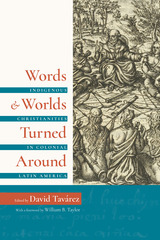 Words and Worlds Turned Around: Indigenous Christianities in Colonial Latin America
David Tavárez
University Press of Colorado, 2017 A sophisticated, state-of-the-art study of the remaking of Christianity by indigenous societies, Words and Worlds Turned Around reveals the manifold transformations of Christian discourses in the colonial Americas. The book surveys how Christian messages were rendered in indigenous languages; explores what was added, transformed, or glossed over; and ends with an epilogue about contemporary Nahuatl Christianities. In eleven case studies drawn from eight Amerindian languages—Nahuatl, Northern and Valley Zapotec, Quechua, Yucatec Maya, K'iche' Maya, Q'eqchi' Maya, and Tupi—the authors address Christian texts and traditions that were repeatedly changed through translation—a process of “turning around” as conveyed in Classical Nahuatl. Through an examination of how Christian terms and practices were made, remade, and negotiated by both missionaries and native authors and audiences, the volume shows the conversion of indigenous peoples as an ongoing process influenced by what native societies sought, understood, or accepted. The volume features a rapprochement of methodologies and assumptions employed in history, anthropology, and religion and combines the acuity of of methodologies drawn from philology and historical linguistics with the contextualizing force of the ethnohistory and social history of Spanish and Portuguese America. Contributors: Claudia Brosseder, Louise M. Burkhart, Mark Christensen, John F. Chuchiak IV, Abelardo de la Cruz, Gregory Haimovich, Kittiya Lee, Ben Leeming, Julia Madajczak, Justyna Olko, Frauke Sachse, Garry Sparks
Words Are Something Else
David Albahari
Northwestern University Press, 1996 David Albahari is one of the most prominent prose writers to come out of the former Yugoslavia in the last twenty years. His short stories, which developed largely outside the canon of Serbian literature, have influenced a generation of Balkan writers. This collection gathers Albahari's best and most important stories, moving from an early preoccupation with the family and Central European culture to metafictional searches for the roots of his identity.
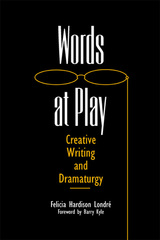 Words at Play: Creative Writing and Dramaturgy
Felicia Hardison Londre. Forewords by Dakin Williams and Barry Kyle
Southern Illinois University Press, 2005 In this encompassing and accessible introduction to dramaturgy, Felicia Hardison Londré promotes the dramaturgical essay as both an art form and as a method for improving creative writing skills. Words at Play: Creative Writing and Dramaturgy includes Londré’s essays on plays produced at several regional professional theatre companies interspersed with instructive examples for writing more clearly, economically, and compellingly. Beginning with an introduction that outlines the purpose of the dramaturgical essay as well as its usefulness as a tool for teaching how to write for the theatre, Londré provides numerous examples of this specialized literary genre culled from program essays she has written for Missouri Repertory Theatre, Nebraska Shakespeare Festival, Heart of America Shakespeare Festival, American Heartland Theatre, and Cincinnati Playhouse in the Park. Words at Play: Creative Writing and Dramaturgy contains more than sixty complete essays and pertinent selections from twenty others. Drawing on personal and professional experiences as a teacher and dramaturg, Londré considers plays from timeless classics, including those of Shakespeare and Chekhov, to contemporary favorites and a few unusual and largely unknown pieces. Words at Play: Creative Writing and Dramaturgy furthermore incorporates introductory paragraphs that are informal and personal yet cogent and critical, providing readers with object lessons in both writing style and analysis. Taking the reader into her confidence, Londré also shows how a dramaturg develops a print relationship with other theatre artists and the community. A foreword by Royal Shakespeare Company associate artist Barry Kyle addresses the evolving role of the dramaturg in Britain and America. Dakin Williams, brother of playwright Tennessee Williams, provides a letter.
Words for Empty and Words for Full
Bob Hicok
University of Pittsburgh Press, 2010 “As always with a Bob Hicok book, fascinating and a book you sort of can’t help but pick up and suddenly, two hours later, find yourself having read straight through. I can think of just about no contemporary poets who publish such consistently great work.”
—Corduroy Books
“Bob Hicok's poetry is a fleeting comfort, a temporary solace from the chaos of the world. Smart, honest, powerfully inventive, his writing asks the biggest questions while acknowledging that there are no answers beyond the imposed structure of the page.”
—Los Angeles Times on This Clumsy Living
“The most potent ingredient in virtually every one of Bob Hicok's compact, well-turned poems is a laughter as old as humanity itself, a sweet waggery that suggests there's almost no problem that can't be solved by this poet's gentle humor.”
—New York Times Book Review on Insomnia Diary
Words for Students of English, Vol. 5: A Vocabulary Series for ESL
Holly Deemer Rogerson, Suzanne T. Hershelman, and Carol Jasnow
University of Michigan Press, 1992 Volume 5 consists of 25 units that present basewords with definitions, usage examples, and exercises. Each unit focuses on a specific topic, carefully selected for its relevance to students' lives, so that students can practice new words in meaningful contexts. The exercises are flexible and easy to use, taking students from simple, fairly controlled practice to a final phase of communicative exercise. A list of words covered in previous volumes in included. SKILL LEVEL: High-Intermediate
Words for Students of English, Volume 8: A Vocabulary Series for ESL
Dawn E. McCormick, Lionel Menasche, Marilyn Smith Slaathaug, and Judith L. Yogman
University of Michigan Press, 2004 Volume 8 consists of 14 units that present basewords with definitions, usage examples, and exercises. Each unit focuses on a specific topic, carefully selected for its relevance to academic study, so that students can practice new words in meaningful contexts. The exercises are flexible and easy to use, taking students from simple, faily controlled practice to a final phase of communicative exercise. New to Volume 8 are collocation practice and crossword puzzles.
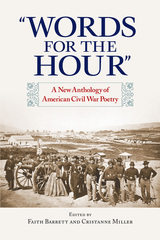 "Words for the Hour": A New Anthology of American Civil War Poetry
Faith Barrett
University of Massachusetts Press, 2005 "Words for the Hour" presents a readable and illuminating account of the Civil War, told through the words of poets North and South. From bathos to profound philosophical meditation and sorrow, the range of these poems illuminates the complexity of their era while also revealing the continuing power of this turning point in American history to speak to readers in the present day.
The volume is divided into three parts, each offering a different perspective on the poetry generated by the war. Part I samples the extraordinary range of poems written immediately preceding and during the war and published in popular periodicals, providing a kind of poetic newspaper account as one might have read it then—from the early days of optimistically heralded victory on both sides, through the mounting casualties and brutal deaths of the long middle years, to the war's conclusion and President Lincoln's assassination. Viewing the struggle from many different vantage points gives the reader access to the ways that people from various backgrounds experienced the trajectory of the war. Civilians and soldiers, free blacks and proponents of slavery, women and men from Massachusetts and Virginia and from recently admitted states and barely developed territories, writers with their eyes on the national political stage and those focused on personal domestic issues: these are the multiple voices of America responding to the war.
Part II includes substantial selections of poems by writers who published extensively in response to the conflict, providing more complex and comprehensive perceptions of the war. These poets include not just well-known figures such as Walt Whitman, Herman Melville, and John Greenleaf Whittier, but also African American poets George Moses Horton and Frances Ellen Watkins Harper and Southern poets Henry Timrod and Sarah Piatt.
Part III offers poems by two poets who did not publish during their lifetimes, but had strong imaginative responses to the conflict, thus giving a sense of the long reach of the war as a defining national experience. One of these two poets (Emily Dickinson) is now renowned while the other (Obadiah Ethelbert Baker) is first published in this volume.
"Words for the Hour" is indeed "new" among anthologies of Civil War poetry not only in its wide range of poems by popular, anonymous, and now canonical poets but also in its informational apparatus. A historical timeline listing major battles and events of the war begins the volume, and historical photographs or lithographs introduce each section of poems. The book also includes a substantial introduction, a glossary of important names and terminology relevant to understanding the poems, and biographical sketches for all the poets whose work is included.
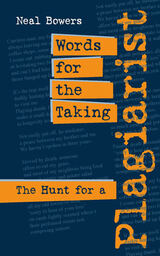 Words for the Taking: The Hunt for a Plagiarist
Neal Bowers
Southern Illinois University Press, 2007
In January 1992, poet Neal Bowers received a phone call that changed his life. He learned his poems had been stolen and published under another name. Bowers hired a copyright lawyer and a private detective, and they began the agonizing hunt to track down the person who stole his creative work.
Bowers was dealing with more than the theft of words. He uncovered the plagiarist’s unsavory past when he found convicted child molester David Jones, who published the poems using the name David Sumner.
Determined to hold the plagiarist accountable, Bowers is drawn into a bizarre game of catch-me-if-you-can. His odyssey introduces him to the legal system and a sympathetic female detective, reveals the reactions of fellow poets, and provokes a flood of nationwide publicity and a deluge of letters from strangers interested in the case. Letters from Bowers’s attorney to Jones and phone conversations between the two produce unsatisfactory results. In the end, the plagiarist is not punished, and Bowers deals with the loss of friends, derision from his colleagues, and trouble in his marriage.
Words for the Taking: The Hunt for a Plagiarist, first published in 1997, is as much a commentary on our cultural view of plagiarism as it is a real-life detective story. Bowers’s wry and disturbing account of being the victim of a serial plagiarist offers unexpected twists and startling revelations. This updated edition presents a final consideration of the bizarre case and remains the only book to offer a personal account of the effects of plagiarism.
Ten years after the original publication, Neal Bowers finds his life as a writer altered in ways he could never have foreseen. His responses to the series of events show his vulnerability as an artist and his adjustment to being a victim. In a new chapter, Bowers describes his renewed quest in 2006 for a resolution and explains why he chose to give up writing poetry.
This beautifully written case study about the discovery and attempted resolution of an intellectual crime will appeal to academicians and general readers alike who care about language, the state of poetry, and intellectual property in contemporary America.
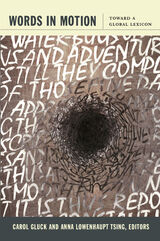 Words in Motion: Toward a Global Lexicon
Carol Gluck and Anna Lowenhaupt Tsing, eds.
Duke University Press, 2009 On the premise that words have the power to make worlds, each essay in this book follows a word as it travels around the globe and across time. Scholars from five disciplines address thirteen societies to highlight the social and political life of words in Asia, Europe, and the Middle East, from the mid-nineteenth century to the present. The approach is consciously experimental, in that rigorously tracking specific words in specific settings frequently leads in unexpected directions and alters conventional depictions of global modernity. Such words as security in Brazil, responsibility in Japan, community in Thailand, and hijāb in France changed the societies in which they moved even as the words were changed by them. Some words threatened to launch wars, as injury did in imperial Britain’s relations with China in the nineteenth century. Others, such as secularism, worked in silence to agitate for political change in twentieth-century Morocco. Words imposed or imported from abroad could be transformed by those who wielded them to oppose the very powers that first introduced them, as happened in Turkey, Indonesia, and the Philippines. Taken together, this selection of fourteen essays reveals commonality as well as distinctiveness across modern societies, making the world look different from the interdisciplinary and transnational perspective of “words in motion.” Contributors. Mona Abaza, Itty Abraham, Partha Chatterjee, Carol Gluck, Huri Islamoglu, Claudia Koonz, Lydia H. Liu, Driss Maghraoui, Vicente L. Rafael, Craig J. Reynolds, Seteney Shami, Alan Tansman, Kasian Tejapira, Anna Lowenhaupt Tsing
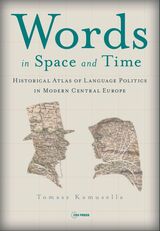 Words in Space and Time: A Historical Atlas of Language Politics in Modern Central Europe
Tomasz Kamusella
Central European University Press, 2022 With forty-two extensively annotated maps, this atlas offers novel insights into the history and mechanics of how Central Europe’s languages have been made, unmade, and deployed for political action. The innovative combination of linguistics, history, and cartography makes a wealth of hard-to-reach knowledge readily available to both specialist and general readers. It combines information on languages, dialects, alphabets, religions, mass violence, or migrations over an extended period of time. The story first focuses on Central Europe’s dialect continua, the emergence of states, and the spread of writing technology from the tenth century onward. Most maps concentrate on the last two centuries. The main storyline opens with the emergence of the Western European concept of the nation, in accord with which the ethnolinguistic nation-states of Italy and Germany were founded. In the Central European view, a “proper” nation is none other than the speech community of a single language. The Atlas aspires to help users make the intellectual leap of perceiving languages as products of human history and part of culture. Like states, nations, universities, towns, associations, art, beauty, religions, injustice, or atheism—languages are artefacts invented and shaped by individuals and their groups.
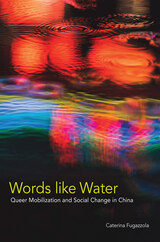 Words like Water: Queer Mobilization and Social Change in China
Fugazzola, Caterina
Temple University Press, 2023 After China officially “decriminalized” same-sex behavior in 1997, both the visibility and public acceptance of tongzhi, an inclusive identity term that refers to nonheterosexual and gender nonconforming identities in the People’s Republic of China, has improved. However, for all the positive change, there are few opportunities for political and civil rights advocacy under Xi Jinping’s authoritarian rule.
Words like Water explores the nonconfrontational strategies the tongzhi movement uses in contemporary China. Caterina Fugazzola analyzes tongzhi organizers’ conceptualizations of, and approaches to, social change, explaining how they avoid the backlash that meets Western tactics, such as protests, confrontation, and language about individual freedoms. In contrast, the groups’ intentional use of community and family-oriented narratives, discourses, and understandings of sexual identity are more effective, especially in situations where direct political engagement is not possible.
Providing on-the-ground stories that examine the social, cultural, and political constraints and opportunities, Words like Water emphasizes the value of discursive flexibility that allows activists to adapt to changing social and political conditions.
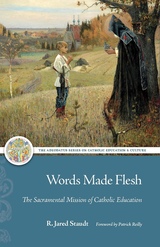 Words Made Flesh: The Sacramental Mission of Catholic Education
R. Jared Staudt
Catholic University of America Press, 2024 Forming souls and building culture together form the sacramental mission of Catholic education. These profoundly related goals are laid out by the Church for education, following the general sacramental principle that permeates the whole of Catholic life. This approach seeks conformity to the Logos, the divine mind, that shapes the way disciples think, imagine, and pray. Guided by this approach, the student will be able to contemplate the truth of reality in a holistic and integrated fashion. As sacramental, it also leads to a concrete embodiment in the life of the Christian community and the daily actions of the disciple. A sacramental approach to education draws together the inner and outer life: mind and body, soul and culture, prayer and work, salvation and mission, the individual and community. For the future of society and renewal within the Church, we need nothing less than a reintegration of the person and our communities through the renewal of education, forming students deeply rooted in our heritage and prepared to hand it on in creative ways.
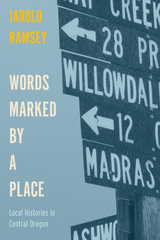 Words Marked by a Place: Local Histories in Central Oregon
Jarold Ramsey
Oregon State University Press, 2018 Words Marked by a Place is a book of interconnected writings reflecting on the human and natural history of central Oregon. This chronological collection presents the reader with key episodes of central Oregon history, from nineteenth-century exploration to the railroading and homesteading era to the era of community-building and development that followed.
While telling these local stories, Jarold Ramsey explores alternative ways of engaging history in the act of writing, breaking new ground by discovering and exploring primary sources that bear on the region’s colorful but little-known past. Throughout the collection, he interrogates “local history” as a subject. What is local history? How is it related to mainstream academic history? What are legitimate ways of doing it? How do the details of what we call local history inform “history-at-large,” and vice-versa?
From the opening narrative concerning Lieutenant Henry Larcom Abbot’s “Railroad Survey” of the region in 1855 to the concluding account of Lieutenant Robert Cranston’s last months and dramatic death, when his “Airacobra” fighter plane crashed near Madras in 1944, Words Marked by a Place sheds new light on the ongoing story of central Oregon by illuminating forgotten corners of its past. Through both theory and example, it represents an important contribution to the history of the region and the endeavors of local historians, wherever they happen to work.
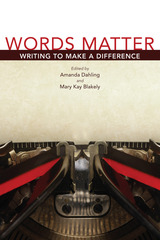 Words Matter: Writing to Make a Difference
Edited by Amanda Dahling and Mary Kay Blakely
University of Missouri Press, 2016 Newspapers and magazines have been steadily shrinking, and more and more former subscribers have gone to digital and internet sources for the news. Yet it has become increasingly clear that “short takes” don’t satisfy many readers, who still long for nuanced, long form journalism. By providing examples of classic magazine articles by professional writers, all of whom are graduates of the Missouri School of Journalism, this book fulfills the need for more sophisticated, thought-provoking essays that will resonate with both the general reader and students. The book is divided into three broad categories: profiles, first person journalism, and personal memoirs, and includes the original articles as well as a “postscript” by the writers in which they discuss what they’ve learned about writing, journalism, and the business of getting published. Useful for students and instructors in writing programs, the book also appeals to writers interested in both the art and the craft of successful writing.
Words Of Common Sense
Brother David Steindl-Rast
Templeton Press, 2002 Brother David Steindl-Rast takes us on a journey to discover the wisdom preserved in common sense sayings that have been passed down through generations. These timeless words reflect the shared values cherished by people all over the world. "When you drink from a stream,” says one Chinese proverb, “remember the spring." From these simple words we are reminded to be grateful for even the smallest graces that we receive. Another homespun phrase tells us that "a contented heart is a continual feast," reminding us to look within, rather than without, for the source of our happiness. Words of Common Sense reveals the thread of human experience expressed in the world’s proverbs and sayings. It helps us connect with cultures other than our own and recognize our shared humanity. These words resonate around the world because they are timeless reflections on how to cultivate a life of love, gratitude, and meaning.
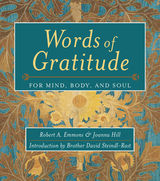 Words Of Gratitude Mind Body & Soul
Robert A. Emmons
Templeton Press, 2001 "The test of all happiness,” said G.K. Chesterton, “is gratitude." Learning to experience gratitude involves being grateful as an attitude, not as a reaction when good things occur. To be grateful, one does not need to wait until things are perfect. In fact, practicing gratitude makes one receptive to life's blessings, and these blessings continue as we continue to be thankful. In one study, described by author Robert Emmons, participants who wrote about five things for which they were grateful experienced more positive emotional states and were more likely to help others over a period of ten weeks than were participants who wrote about the hassles and stressors they experienced during the same time. "Love wholeheartedly,” says Brother David Steindl-Rast, “be surprised, give thanks and praise—then you will discover the fullness of your life." Gratitude provides gifts to both the giver and the receiver, and this illuminating book will inspire readers to recognize just how truly blessed we are.
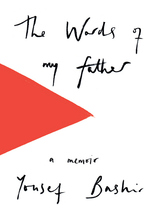 The Words of My Father: A Memoir
Yousef Bashir
Haus Publishing, 2018 In the Gaza Strip, growing up on land owned by his family for centuries, eleven-year-old Yousef is preoccupied by video games, school pranks, and meeting his father’s impossibly high standards. Everything changes when the Second Intifada erupts and soldiers occupy the family home. Yousef’s father refuses to flee and risk losing the house forever, so the army keeps the family in a state of virtual imprisonment. Yousef struggles to understand how his father can be so committed to peaceful co-existence that he welcomes the occupying Israeli soldiers as ‘guests’, even in the face of unfair and humiliating treatment. Over time, Yousef learns how to endure his new life in captivity – but he can’t anticipate that a bullet is about to transform his future in an instant. Shot by an Israeli soldier at the age of fifteen, and taken to hospital in Tel Aviv, Yousef slowly and painstakingly confronts the paralysis of his lower body. Under the ceaseless care of Israeli medical professionals, he gains a new perspective on the value of co-existence. These transformative experiences set Yousef on a difficult new path that leads him to learn to embody his father’s philosophy, and spread a message of co-existence in a world of deep-set sectarianism. The Words of My Father is a moving coming-of-age story about survival, tolerance and hope.
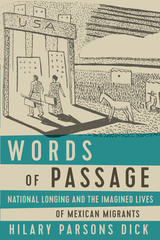 Words of Passage: National Longing and the Imagined Lives of Mexican Migrants
By Hilary Parsons Dick
University of Texas Press, 2018 Migration fundamentally shapes the processes of national belonging and socioeconomic mobility in Mexico—even for people who never migrate or who return home permanently. Discourse about migrants, both at the governmental level and among ordinary Mexicans as they envision their own or others’ lives in “El Norte,” generates generic images of migrants that range from hardworking family people to dangerous lawbreakers. These imagined lives have real consequences, however, because they help to determine who can claim the resources that facilitate economic mobility, which range from state-sponsored development programs to income earned in the North. Words of Passage is the first full-length ethnography that examines the impact of migration from the perspective of people whose lives are affected by migration, but who do not themselves migrate. Hilary Parsons Dick situates her study in the small industrial city of Uriangato, in the state of Guanajuato. She analyzes the discourse that circulates in the community, from state-level pronouncements about what makes a “proper” Mexican to working-class people’s talk about migration. Dick shows how this migration discourse reflects upon and orders social worlds long before—and even without—actual movements beyond Mexico. As she listens to men and women trying to position themselves within the migration discourse and claim their rights as “proper” Mexicans, she demonstrates that migration is not the result of the failure of the Mexican state but rather an essential part of nation-state building.
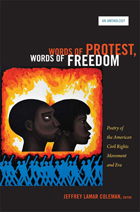 Words of Protest, Words of Freedom: Poetry of the American Civil Rights Movement and Era
Jeffrey Lamar Coleman, ed.
Duke University Press, 2012 Poetry is an ideal artistic medium for expressing the fear, sorrow, and triumph of revolutionary times. Words of Protest, Words of Freedom is the first comprehensive collection of poems written during and in response to the American civil rights struggle of 1955–75. Featuring some of the most celebrated writers of the twentieth century—including Maya Angelou, Amiri Baraka, Gwendolyn Brooks, Allen Ginsberg, Robert Lowell, and Derek Walcott—alongside lesser-known poets, activists, and ordinary citizens, this anthology presents a varied and vibrant set of voices, highlighting the tremendous symbolic reach of the civil rights movement within and beyond the United States. Some of the poems address crucial movement-related events—such as the integration of the Little Rock schools, the murders of Emmett Till and Medgar Evers, the emergence of the Black Panther party, and the race riots of the late 1960s—and key figures, including Martin Luther King Jr., Malcolm X, and John and Robert Kennedy. Other poems speak more broadly to the social and political climate of the times. Along with Jeffrey Lamar Coleman's headnotes, the poems recall the heartbreaking and jubilant moments of a tumultuous era. Altogether, more than 150 poems by approximately 100 poets showcase the breadth of the genre of civil rights poetry. Selected contributors. Maya Angelou, W. H. Auden, Amiri Baraka, Gwendolyn Brooks, Lucille Clifton Lawrence Ferlinghetti, Allen Ginsberg, Langston Hughes, June Jordan, Philip Levine, Audre Lorde, Robert Lowell, Pauli Murray, Huey P. Newton, Adrienne Rich, Sonia Sanchez, Léopold Sédar Senghor, Derek Walcott, Alice Walker, Yevgeny Yevtushenko
Words of the Real People: Alaska Native Literature in Translation
Edited by Ann Fienup-Riordan and Lawrence D. Kaplan
University of Alaska Press, 2007 Words of the Real People collects the life stories, poetry, and oral literature of the Yupik, Inupiaq, and Alutiiq peoples of Alaska, making them widely available to readers in English for the first time. Accompanied by background essays on each Native group, the literature in this collection embraces Native Alaskan life in all its rich variety. From tales of malevolent shamans to the unexpected poetry of the urban experience, and from ancient tales passed down for generations to contemporary stories being woven into a new tradition, Words of the Real People stakes out an important place for Native Alaskan literature as a vibrant, living tradition and will be essential to folklorists, anthropologists, and anyone interested in the storied past of our continent's most forbidding reaches.
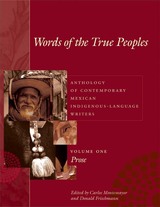 Words of the True Peoples/Palabras de los Seres Verdaderos: Anthology of Contemporary Mexican Indigenous-Language Writers/Antología de Escritores Actuales en Lenguas Indígenas de México: Volume One/Tomo Uno: Prose/Prosa
Edited by Carlos Montemayor and Donald Frischmann
University of Texas Press, 2005 As part of the larger, ongoing movement throughout Latin America to reclaim non-Hispanic cultural heritages and identities, indigenous writers in Mexico are reappropriating the written word in their ancestral tongues and in Spanish. As a result, the long-marginalized, innermost feelings, needs, and worldviews of Mexico's ten to twenty million indigenous peoples are now being widely revealed to the Western societies with which these peoples coexist. To contribute to this process and serve as a bridge of intercultural communication and understanding, this groundbreaking, three-volume anthology gathers works by the leading generation of writers in thirteen Mexican indigenous languages: Nahuatl, Maya, Tzotzil, Tzeltal, Tojolabal, Tabasco Chontal, Purepecha, Sierra Zapoteco, Isthmus Zapoteco, Mazateco, Ñahñu, Totonaco, and Huichol. Volume 1 contains narratives and essays by Mexican indigenous writers. Their texts appear first in their native language, followed by English and Spanish translations. Frischmann and Montemayor have abundantly annotated the English, Spanish, and indigenous-language texts and added glossaries and essays that trace the development of indigenous texts, literacy, and writing. These supporting materials make the anthology especially accessible and interesting for nonspecialist readers seeking a greater understanding of Mexico's indigenous peoples. The other volumes of this work will be Volume 2: Poetry/Poesía and Volume 3: Theater/Teatro.
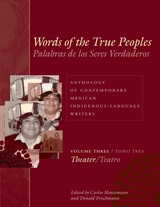 Words of the True Peoples/Palabras de los Seres Verdaderos: Anthology of Contemporary Mexican Indigenous-Language Writers/Antología de Escritores Actuales en Lenguas Indígenas de México: Volume Three/Tomo Tres: Theater/Teatro
Edited by Carlos Montemayor and Donald Frischmann
University of Texas Press, 2007 As part of the larger, ongoing movement throughout Latin America to reclaim non-Hispanic cultural heritages and identities, indigenous writers in Mexico are reappropriating the written word in their ancestral tongues and in Spanish. As a result, the long-marginalized, innermost feelings, needs, and worldviews of Mexico's ten to twenty million indigenous peoples are now being widely revealed to the Western societies with which these peoples coexist. To contribute to this process and serve as a bridge of intercultural communication and understanding, this groundbreaking, three-volume anthology gathers works by the leading generation of writers in thirteen Mexican indigenous languages: Nahuatl, Maya, Tzotzil, Tzeltal, Tojolabal, Tabasco Chontal, Purepecha, Sierra Zapoteco, Isthmus Zapoteco, Mazateco, Ñahñu, Totonaco, and Huichol. Volume Three contains plays by six Mexican indigenous writers. Their plays appear first in their native language, followed by English and Spanish translations. Montemayor and Frischmann have abundantly annotated the Spanish, English, and indigenous-language texts and added glossaries and essays that introduce the work of each playwright and discuss the role of theater within indigenous communities. These supporting materials make the anthology especially accessible and interesting for nonspecialist readers seeking a greater understanding of Mexico's indigenous peoples.
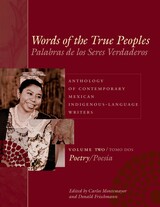 Words of the True Peoples/Palabras de los Seres Verdaderos: Anthology of Contemporary Mexican Indigenous-Language Writers/Antología de Escritores Actuales en Lenguas Indígenas de México: Volume Two/Tomo Dos: Poetry/Poesía
Edited by Carlos Montemayor and Donald Frischmann
University of Texas Press, 2005 As part of the larger, ongoing movement throughout Latin America to reclaim non-Hispanic cultural heritages and identities, indigenous writers in Mexico are reappropriating the written word in their ancestral tongues and in Spanish. As a result, the long-marginalized, innermost feelings, needs, and worldviews of Mexico's ten to twenty million indigenous peoples are now being widely revealed to the Western societies with which these peoples coexist. To contribute to this process and serve as a bridge of intercultural communication and understanding, this groundbreaking, three-volume anthology gathers works by the leading generation of writers in thirteen Mexican indigenous languages: Nahuatl, Maya, Tzotzil, Tzeltal, Tojolabal, Tabasco Chontal, Purepecha, Sierra Zapoteco, Isthmus Zapoteco, Mazateco, Ñahñu, Totonaco, and Huichol. Volume Two contains poetry by Mexican indigenous writers. Their poems appear first in their native language, followed by English and Spanish translations. Montemayor and Frischmann have abundantly annotated the Spanish, English, and indigenous-language texts and added glossaries and essays that discuss the formal and linguistic qualities of the poems, as well as their place within contemporary poetry. These supporting materials make the anthology especially accessible and interesting for nonspecialist readers seeking a greater understanding of Mexico's indigenous peoples.
 Words of Wisdom: A Philosophical Dictionary for the Perennial Tradition
John W. Carlson
University of Notre Dame Press, 2012
Like their predecessors throughout the late nineteenth and twentieth centuries, popes John Paul II and Benedict XVI have emphasized the importance of philosophy in the Catholic intellectual tradition. In his encyclical Fides et ratio (1998), John Paul II called on philosophers “to have the courage to recover, in the flow of an enduringly valid philosophical tradition, the range of authentic wisdom and truth.” Where the late pope spoke of an “enduringly valid tradition,” Jacques Maritain and other Thomists often have referred to the “perennial tradition” or to “perennial philosophy.” Words of Wisdom responds to John Paul's call for the development of this tradition with a much-needed dictionary of terms.
As a resource for students in colleges, universities, and seminaries, as well as for teachers of the perennial tradition and interested general readers, Words of Wisdom occupies a unique place. It offers precise, yet clear and understandable accounts of well over a thousand key philosophical terms, richly cross-referenced. It also explains significant terms from other philosophical movements with which Thomism (and the Catholic intellectual tradition more generally) has engaged—either through debate or through judicious and creative incorporation. Moreover, it identifies a number of theological and doctrinal expressions to which perennial philosophy has contributed. Finally, it provides a comprehensive bibliography of works by Aquinas in English, expositions and discussions of perennial themes, and representative examples from the writings of all philosophers and theologians mentioned in dictionary entries.
“A good dictionary is a great thing. In over 1,000 entries, Words of Wisdom manages to be concise, as it must be, and complete where it should be. Its notes on usage by contemporary scholars I find particularly helpful. Students and teachers alike will be grateful to Dr. Carlson for taking up the challenge of John Paul II to appreciate and illuminate the ‘great tradition of philosophy.’” —David Ruel Foster, Athenaeum of Ohio
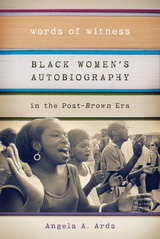 Words of Witness: Black Women's Autobiography in the Post-Brown Era
Angela A. Ards
University of Wisconsin Press, 2015 A literary and political genealogy of the last half-century, Words of Witness explores black feminist autobiographical narratives in the context of activism and history since the landmark 1954 segregation case, Brown v. Board of Education. Angela A. Ards examines how activist writers, especially five whose memoirs were published in the 1990s and 2000s, crafted these life stories to engage and shape progressive, post-Brown politics.
Exploring works by the critically acclaimed June Jordan and Edwidge Danticat, as well as by popular and emerging authors such as Melba Beals, Rosemary Bray, and Eisa Davis, Ards demonstrates how each text asserts countermemories to official—and often nostalgic—understandings of the civil rights and Black Power movements. She situates each writer as activist-citizen, adopting and remaking particular roles—warrior, “the least of these,” immigrant, hip-hop head—to crystallize a range of black feminist responses to urgent but unresolved political issues.
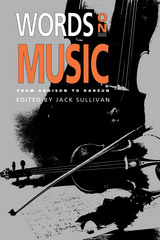 Words On Music: From Addison To Barzun
Jack Sullivan
Ohio University Press, 1990 For centuries, distinguished writers have taken on the challenge of describing great music and its significance in their lives. From Joseph Addison to Virgil Thomson, writers in and out of the music field have used their most vivid language to conjure the sounds and emotions of the music that mattered most to them. Yet until this book, no single volume has ever collected the best of this writing in one place. Scattered in magazines, essay collections, and program notes, this literature is largely unknown to the general reader—who often thinks that music essays are for musicians only—and even to the musician—who often reads only narrow specialty publications.
Words on Music is thus the first book of its kind. Covering instrumental and vocal music from the eighteenth through the twentieth centuries, it features essays distinguished by their literary quality, their readability, and their appeal to a wide audience. Included is writing by novelists, essayists, composers, performers, cultural historians, and others who have written about music with precision and passion.
Here is George Bernard Shaw on Handel, Albert Schweitzer on Bach, Glenn Gould on Scarlatti, E. T. A. Hoffman on Beethoven, Heinrich Heine on Rossini, Aaron Copland on Mozart, George Eliot on Wagner, G. K. Chesterton on Gilbert and Sullivan, Leonard Bernstein on Mahler, Guy Davenport on Ives, Pierre Boulez on Stravinsky, Ned Rorem on Ravel, and more than fifty others. Here also are essays on broader topics—Joseph Addison on opera, Anthony Burgess on music and literature, Jacques Barzun on music criticism, H. L. Mencken on “Music an Sin”—as well as musical memoirs by such masters of the genre as Hector Berlioz, Leigh Hunt, and Ethel Smyth.
Words on Music is a uniquely literary and readable book on music. With its wide range of tones and voices, it is ideal for the general reader, the humanities educator, and the musical specialist. Each article is introduced by an informative headnote on the writer and subject. In addition, the volume offers a bibliography with valuable clues for further reading and a substantial essay introducing the elusive art of writing about music.
Words on the Air: Essays on Language, Manners, Morals, and Laws
John Sparrow
University of Chicago Press, 1981 Proper words in proper places, remarked Dean Swift, make the true definition of style. According to this definition, John Sparrow fully qualifies as a stylist. His skillful compound of wit, pungency, and accurate observation, his irreverence, his ear for language and hatred of cant are unsurpassed. This book brings together pieces broadcast by the BBC, a series of lectures at the University of Chicago, and, even, a university sermon. It proves that John Sparrow is one of those rare people whose spoken words lose none of their power when translated to the printed page.
 Words on Words: Quotations about Language and Languages
Edited by David Crystal and Hilary Crystal
University of Chicago Press, 2000 From Homer ("winged words") to Robert Burns ("Beware a tongue that's smoothly hung") to Rudyard Kipling ("Words are, of course, the most powerful drug used by mankind"), writers from all over the world have put pen to paper on the inexhaustible topic of language. Yet surprisingly, their writings on the subject have never been gathered in a single volume. In Words on Words, David and Hilary Crystal have collected nearly 5,000 quotations about language and all its intriguing aspects: speaking, reading, writing, translation, verbosity, usage, slang, and more. As the stock-in-trade of so many professions—orators, media personalities, writers, and countless others—language's appeal as a subject is extraordinarily relevant and wide-ranging.
The quotations are grouped thematically under 65 different headings, from "The Nature of Language" through the "Language of Politics" to "Quoting and Misquoting." This arrangement enables the reader to explore a topic through a variety of lenses, ancient and modern, domestic and foreign, scientific and casual, ironic and playful. Three thorough indexes—to authors, sources, and key words—provide different entry points into the collection. A valuable resource for professional writers and scholars, Words on Words is for anyone who loves language and all things linguistic.
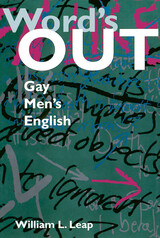 Word’s Out: Gay Men’s English
William Leap
University of Minnesota Press, 1996 The first book-length analysis of the language used by gay men. Do gay men communicate with each other differently than they do with straight people? If they do, how is “gay men’s English” different from “straight English”? In Word’s Out, William Leap addresses these questions in an entertaining account that looks at gay men’s English as a cultural and a linguistic phenomenon. Whereas previous studies of “gay language” have centered almost entirely on vocabulary, word history, and folklore, Word's Out focuses on the linguistic practices-cooperation, negotiation, and risk taking-that underlie gay men’s conversations, storytelling, verbal dueling, self-description, and construction of outrageous references. Leap “reads” conversations for covert and overt signs of gay men's English, using anecdotes drawn from gay dinner parties, late-night airplane flights, restaurants, department stores, and gourmet shops, and from other all-gay and gay/straight settings. He incorporates material from life-story narratives and other interviews and discussions with gay men, from gay magazines, newspapers, and books, and from events in his own life. The topics addressed include establishing the gay identities of “suspect gays,” recollections of gay childhood, erotic negotiation in health club locker rooms, and gay men’s language of AIDS. Leap shows how gay English speakers use language to create gay-centered spaces within public places, to protect themselves when speaking with strangers, and to establish common interests when speaking with “suspect gays,” and explores why learning gay English is a critical component in gay men’s socialization and entry into gay culture. Provocative and potentially controversial, Word's Out provides fascinating insight into the politics of gay experience by exploring the connections between language and daily experience in gay men's lives.
 Words that Make New Jersey History: A Primary Source Reader
Green, Howard L
Rutgers University Press, 1994 Here isa unique collection of documents that spans the history of New Jersey, from the arrival of Dutch traders in the 1600s to the present. The materials touch on a range of subjects such as slavery and abolitionism, the labor movement, race and ethnic relations, and economic and environmental issues. The documents include letters, journals, pamphlets, petitions, artwork, and songs created not only by those who exercised power, but also by men and women of more humble station. Their lively accounts range from descriptions of Native Americans in the seventeenth century to Bruce Springsteen’s lament about a declining factory town. New to this expanded edition is the text of former governor James McGreevey’s “I am a Gay American” speech, as well as entries about the Abbott v. Burke court ruling mandating that New Jersey equalize funding of urban and suburban schools districts, sprawl and its effects on water supply, and the state’s economic boom in the 1990s. A balanced survey of New Jersey’s history in the context of a changing nation, this book is ideal for general readers who want to explore the primary sources of the state’s past, and to U.S. history students at the high school and college levels.
 Words That Make New Jersey History: A Primary Source Reader, revised and expanded edition
Edited by Howard L. Green
Rutgers University Press, 2006 Words That Make New Jersey History is a book-length collection of documents that spans the history of New Jersey, from the arrival of Dutch traders in the 1600s to the present. The materials touch on a range of subjects such as factories and farms, cities and suburbs, slavery and abolitionism, the temperance and woman suffrage campaigns, race and ethnic relations, the labor movement, and economic and environmental issues. The documents include letters, journals, pamphlets, petitions, artwork, and songs created not only by those who exercised power, but also by men and women of more humble station--immigrants, workers, slaves, foreign travelers, and civil servants. Their lively accounts range from descriptions of Native Americans in the seventeenth century to Bruce Springsteen's recent lament about a declining factory town.
New to this expanded edition is the text of James McGreevey's "I am a Gay American" speech, as well as entries about the Abbott v. Burke court ruling mandating that New Jersey equalize funding of urban and suburban schools districts, sprawl and its effects on water supply, and the state's economic boom in the 1990s.
A balanced survey of New Jersey's history presented in the context of a changing nation, this volume is well suited to general readers who want to explore the primary sources of the state's past, and to U.S. history students at the high school and college levels.
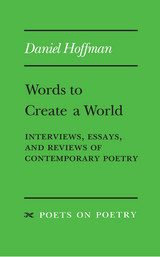 Words to Create a World
Daniel Hoffman
University of Michigan Press, 1993 Words to Create a World collects interviews, essays, and reviews by distinguished poet, critic, and literary historian Daniel Hoffman. The book begins with the text of his inaugural address as Consultant in Poetry for the Library of Congress, in which Hoffman examines the stylistic revolution that signaled the birth of modernism. The final essay, “Wings of a Phoenix?”, examines the possibilities for poetry in this postmodern era.
Between these are discussions of books by and about founding modernists (Pound, Moore, Sitwell, Frost, Graves, Auden) who do not “succumb to the imitative fallacy and gibber at the window because the house is on fire.” Hoffman’s historical imagination elucidates the work of many other contemporary American and British poets, including his own. Words to Create a World will appeal to the reader who enjoys poetry and who hopes for guidance over the sprawling terrain of verse in the twentieth century.
Words to Our Now: Imagination and Dissent
Thomas Glave
University of Minnesota Press, 2007 In these lyrical and powerful essays, Thomas Glave draws on his experiences as a politically committed, gay Jamaican American to deliver a condemnation of the prejudices, hatreds, and inhumanities that persist in the United States and elsewhere. Exposing the hypocrisies of liberal multiculturalism, Glave offers instead a politics of heterogeneity in which difference informs the theory and practice of democracy. At the same time, he experiments with language to provide a model of creative writing as a tool for social change. From the death of black gay poet Essex Hemphill to the revelations of abuse at Abu Ghraib, Glave puts forth an ethical understanding of human rights to make vital connections across nations, races, genders, and sexualities. Thomas Glave is assistant professor of English at SUNY Binghamton. He is author of Whose Song? and Other Stories.
Words Unbound: Teaching Dante's Inferno in the High School Classroom
Milton Burke
University of Arkansas Press, 2017 Words Unbound draws on Milton Burke’s thirty years of teaching experience to help educators bring Inferno alive for today’s young reader. In a conversational, “colleague-to-colleague” style, Burke shares the interpretations, questions, and exercises he found effective in his high-school classroom, emphasizing group discussion to help students, no matter their religious or philosophical moorings, engage meaningfully with the notoriously difficult text.
 Words Well Put: Visions of Poetic Competence in the Chinese Tradition
Graham Sanders
Harvard University Press, 2006 Many poems in the Chinese tradition come to us embedded in narratives purporting to tell the circumstances of their composition and performance. "Poetic competence" is demonstrated in these narratives through a person's ability to influence the attitudes and behavior of others with poetic discourse. Such competence can be apprehended only in the context of a narrative, which sets forth a representation of the conditions of a poem's production, performance, and reception. These narratives are not so much faithful historical records as ideal accounts of the operation of poetry. Such stories both fulfill and deny wishes for poetry and for the self; it is these wishes that merit our careful attention.
As traced in Words Well Put, the vision of poetic competence evolved for over a millennium from calculated performances of inherited words to sincere passionate outbursts to displays of verbal wit combining calculation with the appearance of spontaneity. By the seventh century, calculation, passion, and wit had converged to produce a multivalent concept of competence as a repertoire of competencies to use as the occasion demanded. This book tells the story of the development of poetic competence to uncover the complexity of the concept and to identify the sources and exemplars of that complexity.
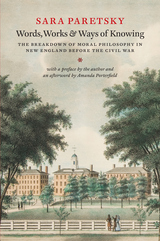 Words, Works, and Ways of Knowing: The Breakdown of Moral Philosophy in New England before the Civil War
Sara Paretsky
University of Chicago Press, 2016 Crime writer Sara Paretsky is known the world over for her acclaimed series of mysteries starring Chicago private investigator V. I. Warshawski, now in its seventeenth installment. Paretsky’s work has long been inflected with history—for her characters the past looms large in the present—and in her decades-long career, she has been recognized for transforming the role of women in contemporary crime fiction.
What’s less well-known is that before Paretsky began her writing career, she earned a PhD in history from the University of Chicago with a dissertation on moral philosophy and religion in New England in the early and mid-nineteenth century. Now, for the first time, fans of Paretsky can read that earliest work, Words, Works, and Ways of Knowing.
Paretsky here analyzes attempts by theologians at Andover Seminary, near Boston, to square and secure Calvinist religious beliefs with emerging knowledge from history and the sciences. She carefully shows how the open-minded scholasticism of these theologians paradoxically led to the weakening of their intellectual credibility as conventional religious belief structures became discredited, and how this failure then incited reactionary forces within Calvinism. That conflict between science and religion in the American past is of interest on its face, but it also sheds light on contemporary intellectual battles.
Rounding out the book, leading religious scholar Amanda Porterfield provides an afterword discussing where Paretsky’s work fits into the contemporary study of religion. And in a sobering—sometimes shocking—preface, Paretsky paints a picture of what it was like to be a female graduate student at the University of Chicago in the 1970s. A treat for Paretsky’s many fans, this book offers a glimpse of the development of the mind behind the mysteries.
Wordsworth and the Green Romantics: Affect and Ecology in the Nineteenth Century
Lisa Ottum
University of New Hampshire Press, 2016 Situated at the intersection of ecocriticism, affect studies, and Romantic studies, this collection breaks new ground on the role of emotions in Western environmentalism. Recent scholarship highlights how traffic between Romantic-era literature and science helped to catalyze Green Romanticism. Closer to our own moment, the affective turn reflects similar cross-disciplinary collaboration, as many scholars now see the physiological phenomenon of affect as a force central to how we develop conscious attitudes and commitments. Together, these trends offer suggestive insights for the study of Green Romanticism.
 Wordsworth and the Poetry of Sincerity
David Perkins
Harvard University Press This book presents not just the Romantic Wordsworth, but Wordsworth as part of a large historical movement in poetry, beginning in the eighteenth century and continuing to the present day. It concentrates on the difficult, much discussed, but little analyzed problem of "sincerity" in poetry, which it treats both critically and historically, as a demand relatively new in Wordsworth's time and still with us. It contains an extended criticism of Wordsworth's later poems, and explores the vexing question of why the mode of his poetry changed as he grew older.
The author shows that the ideal of sincerity has influenced poets, critics, and common readers from Wordsworth to now, and describes the problems raised for poets by this new challenge. The first problem is the adequacy of language--does the very structure and fact of language stand as an obstacle to a complete sincerity? Perkins says: "One can hardly explain the history of poetic style or, indeed, of literature since Wordsworth, unless one keeps in mind that there has been a continuing mistrust of language. By words, it is feared, we chop realities into categories. The categories are arbitrary, or, even if they are not, their generality strips our experience of its unique aspects."
Another problem raised by the challenge of sincerity is the distrust of poetic form. How can you write with a personal sincerity when you have to use meters and stanzas? Or, more fundamentally, how can you be honest to the complexity and uncertainty of your own experience, when a poem must always be more limited than the consciousness from which it arises? Still another problem is the distrust of poetic conventions and traditions. The author says, "The wish to be sincere is challenged and baffled by the fact that poetry is a learned performance, that all poetic expression depends on traditions and conventions peculiar to the art and inherited from the past...Yet if you imitate the great achievements of the past, how can your poem be thought a sincere personal utterance? The question of imitation is only the most obvious result of this anxiety. For a fanatic sincerity may suppose that merely to be influenced by other writers--in fact, to be influenced by anything at all--somehow clouds the purity of self-expression."
The Wordsworth Circle, volume 52 number 4 (Autumn 2021)
The University of Chicago Press
University of Chicago Press Journals, 2021 This is volume 52 issue 4 of The Wordsworth Circle. The Wordsworth Circle (TWC) is an international quarterly learned journal founded in 1970 to facilitate communications among colleagues interested in the lives, works, and times of British, American, and European writers from 1770 to 1850, before and after. TWC publishes original essays, conference papers, letters, editions, bibliographies, textual and historical scholarship, biography, interpretive criticism, and critical theory, as well as interdisciplinary, cultural, and comparative studies. It is concerned with anything that influenced, impinges upon, expresses, or contributes to an understanding of the writers, works, and events associated with Romantic studies and its after-lives.
The Wordsworth Circle, volume 53 number 1 (Winter 2022)
The University of Chicago Press
University of Chicago Press Journals, 2022 This is volume 53 issue 1 of The Wordsworth Circle. The Wordsworth Circle (TWC) is an international quarterly learned journal founded in 1970 to facilitate communications among colleagues interested in the lives, works, and times of British, American, and European writers from 1770 to 1850, before and after. TWC publishes original essays, conference papers, letters, editions, bibliographies, textual and historical scholarship, biography, interpretive criticism, and critical theory, as well as interdisciplinary, cultural, and comparative studies. It is concerned with anything that influenced, impinges upon, expresses, or contributes to an understanding of the writers, works, and events associated with Romantic studies and its after-lives.
The Wordsworth Circle, volume 53 number 2 (Spring 2022)
The University of Chicago Press
University of Chicago Press Journals, 2022 This is volume 53 issue 2 of The Wordsworth Circle. The Wordsworth Circle (TWC) is an international quarterly learned journal founded in 1970 to facilitate communications among colleagues interested in the lives, works, and times of British, American, and European writers from 1770 to 1850, before and after. TWC publishes original essays, conference papers, letters, editions, bibliographies, textual and historical scholarship, biography, interpretive criticism, and critical theory, as well as interdisciplinary, cultural, and comparative studies. It is concerned with anything that influenced, impinges upon, expresses, or contributes to an understanding of the writers, works, and events associated with Romantic studies and its after-lives.
The Wordsworth Circle, volume 53 number 3 (Summer 2022)
The University of Chicago Press
University of Chicago Press Journals, 2022 This is volume 53 issue 3 of The Wordsworth Circle. The Wordsworth Circle (TWC) is an international quarterly learned journal founded in 1970 to facilitate communications among colleagues interested in the lives, works, and times of British, American, and European writers from 1770 to 1850, before and after. TWC publishes original essays, conference papers, letters, editions, bibliographies, textual and historical scholarship, biography, interpretive criticism, and critical theory, as well as interdisciplinary, cultural, and comparative studies. It is concerned with anything that influenced, impinges upon, expresses, or contributes to an understanding of the writers, works, and events associated with Romantic studies and its after-lives.
The Wordsworth Circle, volume 53 number 4 (Autumn 2022)
The University of Chicago Press
University of Chicago Press Journals, 2022 This is volume 53 issue 4 of The Wordsworth Circle. The Wordsworth Circle (TWC) is an international quarterly learned journal founded in 1970 to facilitate communications among colleagues interested in the lives, works, and times of British, American, and European writers from 1770 to 1850, before and after. TWC publishes original essays, conference papers, letters, editions, bibliographies, textual and historical scholarship, biography, interpretive criticism, and critical theory, as well as interdisciplinary, cultural, and comparative studies. It is concerned with anything that influenced, impinges upon, expresses, or contributes to an understanding of the writers, works, and events associated with Romantic studies and its after-lives.
The Wordsworth Circle, volume 54 number 1 (Winter 2023)
The University of Chicago Press
University of Chicago Press Journals, 2023 This is volume 54 issue 1 of The Wordsworth Circle. The Wordsworth Circle (TWC) is an international quarterly learned journal founded in 1970 to facilitate communications among colleagues interested in the lives, works, and times of British, American, and European writers from 1770 to 1850, before and after. TWC publishes original essays, conference papers, letters, editions, bibliographies, textual and historical scholarship, biography, interpretive criticism, and critical theory, as well as interdisciplinary, cultural, and comparative studies. It is concerned with anything that influenced, impinges upon, expresses, or contributes to an understanding of the writers, works, and events associated with Romantic studies and its after-lives.
The Wordsworth Circle, volume 54 number 3 (Summer 2023)
The University of Chicago Press
University of Chicago Press Journals, 2023 This is volume 54 issue 3 of The Wordsworth Circle. The Wordsworth Circle (TWC) is an international quarterly learned journal founded in 1970 to facilitate communications among colleagues interested in the lives, works, and times of British, American, and European writers from 1770 to 1850, before and after. TWC publishes original essays, conference papers, letters, editions, bibliographies, textual and historical scholarship, biography, interpretive criticism, and critical theory, as well as interdisciplinary, cultural, and comparative studies. It is concerned with anything that influenced, impinges upon, expresses, or contributes to an understanding of the writers, works, and events associated with Romantic studies and its after-lives.
The Wordsworth Circle, volume 54 number 4 (Autumn 2023)
The University of Chicago Press
University of Chicago Press Journals, 2023 This is volume 54 issue 4 of The Wordsworth Circle. The Wordsworth Circle (TWC) is an international quarterly learned journal founded in 1970 to facilitate communications among colleagues interested in the lives, works, and times of British, American, and European writers from 1770 to 1850, before and after. TWC publishes original essays, conference papers, letters, editions, bibliographies, textual and historical scholarship, biography, interpretive criticism, and critical theory, as well as interdisciplinary, cultural, and comparative studies. It is concerned with anything that influenced, impinges upon, expresses, or contributes to an understanding of the writers, works, and events associated with Romantic studies and its after-lives.
The Wordsworth Circle, volume 55 number 1 (Winter 2024)
The University of Chicago Press
University of Chicago Press Journals, 2024 This is volume 55 issue 1 of The Wordsworth Circle. The Wordsworth Circle (TWC) is an international quarterly learned journal founded in 1970 to facilitate communications among colleagues interested in the lives, works, and times of British, American, and European writers from 1770 to 1850, before and after. TWC publishes original essays, conference papers, letters, editions, bibliographies, textual and historical scholarship, biography, interpretive criticism, and critical theory, as well as interdisciplinary, cultural, and comparative studies. It is concerned with anything that influenced, impinges upon, expresses, or contributes to an understanding of the writers, works, and events associated with Romantic studies and its after-lives.
The Wordsworth Circle, volume 55 number 2 (Spring 2024)
The University of Chicago Press
University of Chicago Press Journals, 2024 This is volume 55 issue 2 of The Wordsworth Circle. The Wordsworth Circle (TWC) is an international quarterly learned journal founded in 1970 to facilitate communications among colleagues interested in the lives, works, and times of British, American, and European writers from 1770 to 1850, before and after. TWC publishes original essays, conference papers, letters, editions, bibliographies, textual and historical scholarship, biography, interpretive criticism, and critical theory, as well as interdisciplinary, cultural, and comparative studies. It is concerned with anything that influenced, impinges upon, expresses, or contributes to an understanding of the writers, works, and events associated with Romantic studies and its after-lives.
The Wordsworth Circle, volume 55 number 3 (Summer 2024)
The University of Chicago Press
University of Chicago Press Journals, 2024 This is volume 55 issue 3 of The Wordsworth Circle. The Wordsworth Circle (TWC) is an international quarterly learned journal founded in 1970 to facilitate communications among colleagues interested in the lives, works, and times of British, American, and European writers from 1770 to 1850, before and after. TWC publishes original essays, conference papers, letters, editions, bibliographies, textual and historical scholarship, biography, interpretive criticism, and critical theory, as well as interdisciplinary, cultural, and comparative studies. It is concerned with anything that influenced, impinges upon, expresses, or contributes to an understanding of the writers, works, and events associated with Romantic studies and its after-lives.
The Wordsworth Circle, volume 55 number 4 (Autumn 2024)
The University of Chicago Press
University of Chicago Press Journals, 2024 This is volume 55 issue 4 of The Wordsworth Circle. The Wordsworth Circle (TWC) is an international quarterly learned journal founded in 1970 to facilitate communications among colleagues interested in the lives, works, and times of British, American, and European writers from 1770 to 1850, before and after. TWC publishes original essays, conference papers, letters, editions, bibliographies, textual and historical scholarship, biography, interpretive criticism, and critical theory, as well as interdisciplinary, cultural, and comparative studies. It is concerned with anything that influenced, impinges upon, expresses, or contributes to an understanding of the writers, works, and events associated with Romantic studies and its after-lives.
The Wordsworth Circle, volume 56 number 1 (Winter 2025)
The University of Chicago Press
University of Chicago Press Journals, 2025 This is volume 56 issue 1 of The Wordsworth Circle. The Wordsworth Circle (TWC) is an international quarterly learned journal founded in 1970 to facilitate communications among colleagues interested in the lives, works, and times of British, American, and European writers from 1770 to 1850, before and after. TWC publishes original essays, conference papers, letters, editions, bibliographies, textual and historical scholarship, biography, interpretive criticism, and critical theory, as well as interdisciplinary, cultural, and comparative studies. It is concerned with anything that influenced, impinges upon, expresses, or contributes to an understanding of the writers, works, and events associated with Romantic studies and its after-lives.
The Wordsworth Circle, volume 56 number 2 (Spring 2025)
The University of Chicago Press
University of Chicago Press Journals, 2025 This is volume 56 issue 2 of The Wordsworth Circle. The Wordsworth Circle (TWC) is an international quarterly learned journal founded in 1970 to facilitate communications among colleagues interested in the lives, works, and times of British, American, and European writers from 1770 to 1850, before and after. TWC publishes original essays, conference papers, letters, editions, bibliographies, textual and historical scholarship, biography, interpretive criticism, and critical theory, as well as interdisciplinary, cultural, and comparative studies. It is concerned with anything that influenced, impinges upon, expresses, or contributes to an understanding of the writers, works, and events associated with Romantic studies and its after-lives.
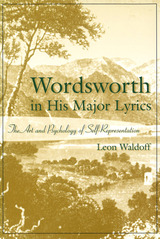 Wordsworth in His Major Lyrics: The Art and Psychology of Self-Representation
Leon Waldoff
University of Missouri Press, 2001
Wordsworth in His Major Lyrics explores the identity, role, and subjectivity of the speaker in Wordsworth's finest and best-known longer lyrics—"Tintern Abbey," "Resolution and Independence," "Ode: Intimations of Immortality," and "Elegiac Stanzas." Because Wordsworth is the most autobiographical poet of the Romantic period, and perhaps in the English language, readers naturally take the speaker to be the poet himself or, as Wordsworth says in his prefaces and essays, "the poet in his own person."
Some readers allow for a fictional dimension in the characterization of the speaker and refer to him as a persona; others treat him as a biographical self, defined in literary, political, historical, or cultural terms. Leon Waldoff examines the critical issues posed by these different understandings of the speaker's identity and argues for a conception of Wordsworth's lyrical "I" that deals with the dramatic and psychological complexities of the speaker's act of self-representation.
Taking concepts from Freud and Winnicott, this book presents a psychoanalytic model for defining the speaker and conceptualizing his subjectivity. Waldoff suggests that the lyrical "I" in each poem is a transitional self of the poet. The poem offers, in the suspended moment and cultural space of lyrical form, a self-dramatization in which the speaker attempts to act out, in the sense of both performing and attempting to achieve, a reconstitution and transformation of the self.
In a series of close readings that provide formalistic and psychological analysis, the book shows that the major lyrics contain compelling evidence that Wordsworth devoted much of his poetic art to each speaker's act of self-dramatization. The various strategies that each speaker employs and the self- dramatizing character of his utterance are theorized and assimilated into an understanding of the subjectivity he represents.
Waldoff concludes that Wordsworth's lyrical "I" requires a conception of subjectivity that gives greater recognition to its individual, psychological dimensions and to the art of self-representation in each poem than recent Wordsworth criticism has provided. This important new work will be appreciated by anyone interested in Wordsworth or in Romantic poetry.
Wordsworth: The Chronology of the Early Years, 1770–1799
Mark L. Reed
Harvard University Press As a poet whose art developed in a remarkably coherent chronological pattern and whose overt use of his own life for the subject matter of his verse was unparalleled in extent, Wordsworth presents an especially compelling claim to such systematic treatment. This volume is the first step toward providing a chronology of his life and works.
An invaluable tool for students of this major writer and of the Romantic period generally, this book offers a rapid means of access to factual information for any type of study making use of either the dates or relative order of Wordsworth's writings or personal experiences. Based on unpublished as well as published materials, the main entries of the chronology present items of documented fact together with source references; a separate chronological listing of the writings is also provided. Discussions and arguments are confined to footnotes and appendices.
Wordsworth: The Chronology of the Middle Years, 1800–1815
Mark L. Reed
Harvard University Press, 1967 An invaluable tool for students of Wordsworth and of the Romantic period generally, this book offers a rapid means of access to factual information for any type of study making use of either the dates or relative order of Wordsworth's writings or personal experiences.
Wordsworth's Formative Years
George Wilbur Meyer
University of Michigan Press, 1934 This study focuses on the first twenty-eight years of the life of William Wordsworth (1770–1850), to shed new light on the poet’s early development. Previous scholars seeking insight on Wordsworth’s early years had leaned heavily on his long autobiographical poem The Prelude, considered by many to be the poet’s greatest work. Meyer’s biography finds The Prelude to be misleading and incomplete, and instead relies on Wordsworth’s poems and correspondence to provide a more accurate and nuanced picture of the poet’s sometimes challenging formative years.
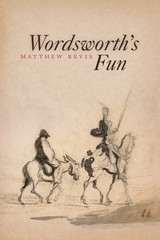 Wordsworth's Fun
Matthew Bevis
University of Chicago Press, 2019 “The next day Wordsworth arrived from Bristol at Coleridge’s cottage,” William Hazlitt recalled, “He answered in some degree to his friend’s description of him, but was more quaint and Don Quixote- like . . . there was a convulsive inclination to laughter about the mouth.” Hazlitt presents a Wordsworth who differs from the one we know—and, as Matthew Bevis argues in his radical new reading of the poet, this Wordsworth owed his quixotic creativity to a profound feeling for comedy.
Wordsworth’s Fun explores the writer’s debts to the ludic and the ludicrous in classical tradition; his reworkings of Ariosto, Erasmus, and Cervantes; his engagement with forms of English poetic humor; and his love of comic prose. Combining close reading with cultural analysis, Bevis travels many untrodden ways, studying Wordsworth’s interest in laughing gas, pantomime, the figure of the fool, and the value of play. Intrepid, immersive, and entertaining, Wordsworth’s Fun sheds fresh light on how one poet’s strange humor helped to shape modern literary experiment.
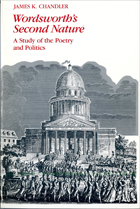 Wordsworth's Second Nature: A Study of the Poetry and Politics
James Chandler
University of Chicago Press, 1984 Wordsworth is England's greatest poet of the French Revolution: he witnessed some of its events first hand, participated in its intellectual and social ambitions, and eventually developed his celebrated poetic campaign in response to its enthusiasms. But how should that response be understood? Combining careful interpretive analysis with wide-ranging historical scholarship, Chandler presents a challenging new account of the political views implicit in Wordsworth's major works–in The Prelude, above all, but also in the central lyrics and shorter narrative poems.
Central to the discussion, which restores Wordsworth to both the French and English contexts in which he matured, is a consideration of his relation to Rousseau and Burke. Chandler maintains that by the time Wordsworth set forth his "program for poetry" in 1798, he had turned away from the Rousseauist idea of nature that had informed his early republican writings. He had already become a poet of what Burke called "second nature"–human nature cultivated by custom, habit, and tradition–and an opponent of the quest for first principles that his friend Coleridge could not forsake. In his analysis of the poetry, Chandler suggests that even Wordsworth's most apparently private moments, the lyrical "spots of time," ideologically embodied the uncalculated habits of an oral narrative discipline and a native English mind.
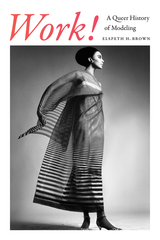 Work!: A Queer History of Modeling
Elspeth H. Brown
Duke University Press, 2019 From the haute couture runways of Paris and New York and editorial photo shoots for glossy fashion magazines to reality television, models have been a ubiquitous staple of twentieth- and twenty-first-century American consumer culture. In Work! Elspeth H. Brown traces the history of modeling from the advent of photographic modeling in the early twentieth century to the rise of the supermodel in the 1980s. Brown outlines how the modeling industry sanitized and commercialized models' sex appeal in order to elicit and channel desire into buying goods. She shows how this new form of sexuality—whether exhibited in the Ziegfeld Follies girls' performance of Anglo-Saxon femininity or in African American models' portrayal of black glamour in the 1960s—became a central element in consumer capitalism and a practice that has always been shaped by queer sensibilities. By outlining the paradox that queerness lies at the center of capitalist heteronormativity and telling the largely unknown story of queer models and photographers, Brown offers an out of the ordinary history of twentieth-century American culture and capitalism.
Work and Care under Pressure: Care Arrangements across Europe
Edited by Blanche Le Bihan, Claude Martin, and Trudie Knijn
Amsterdam University Press, 2013 In many European countries tensions have arisen between the demands of the labor market and the caregiving responsibilities workers must fulfill at home. Examining these tensions, Work and Care under Pressure focuses on two groups of people who must juggle work and caregiving: parents of young children who work nonstandard hours and working adults who care for older parents. Based on empirical evidence from six European countries, this volume sheds light on the social effects of national policies and the choices made by caregivers. It is an essential resource for researchers, scholars, and policy makers interested in social policy.
Work and Community in the Jungle: Chicago's Packinghouse Workers, 1894-1922
James R. Barrett
University of Illinois Press, 1987 Mythologized by Upton Sinclair as hopeless, Chicago's packinghouse workers were in fact active agents in the early twentieth century transformation that swept urban industrial America. James R. Barrett's award-winning study explores how the lives and neighborhoods of packinghouse workers convey the experience of mass production work, the quality of working class life, the process of class formation and fragmentation, the effects of unionization, and the changing character of class relations. Merging history and analysis with contemporary social surveys and a computer-assisted analysis of census data, Barrett delves into a wide range of social, economic, and cultural factors that resulted in class cohesion and fragmentation.
Work and Family in the United States: A Critical Review and Agenda for Research and Policy
Rosabeth Moss Kanter
Russell Sage Foundation, 1977 Now considered a classic in the field, this book first called attention to what Kanter has referred to as the "myth of separate worlds." Rosabeth Moss Kanter was one of the first to argue that the assumes separation between work and family was a myth and that research must explore the linkages between these two roles.
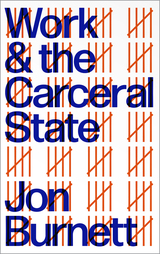 Work and the Carceral State
Jon Burnett
Pluto Press, 2022 'Revolutionises our understanding of the carceral state' - Fidelis Chebe, Director of Migrant Action
During 2019-20 in England and Wales, over 17 million hours of labor were carried out by more than 12,500 people incarcerated in prisons, while many people in immigration detention centers were also put to work. These people constitute a sub-waged, captive workforce who are frequently discarded by the state when done with.
Work and the Carceral State examines these forms of work as part of a broader exploration of the relationship between criminalization, criminal justice, immigration policy and labor, tracing their lineage through the histories of transportation and banishment, of houses of correction and prisons, to the contemporary production of work.
Criminalization has been used to enforce work and to discipline labor throughout the history of England and Wales. This book demands that we recognise the carceral state as operating at the frontier of labor control in the 21st century.
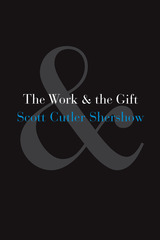 The Work and the Gift
Scott Cutler Shershow
University of Chicago Press, 2005 The Work and the Gift considers how working and giving are taken for opposites and revealed as each other's ghostly shadow. We ask ourselves, for instance, to work for a wage and a living, dooming ourselves forever to the curse of daily toil; and yet we imagine the magnum opus or the oeuvre as a labor of love. We ask ourselves to give with no thought of return; yet we still tell ourselves to give only to the deserving and only where our giving will do some good.
Ranging from Marx and Derrida to Friedrich Hayek and Alvin Toffler, Scott Cutler Shershow here explores the predictions of political thinkers on both the left and the right that work is fundamentally changing, or even disappearing; the debates among anthropologists and historians about an archaic gift-economy that preceded capitalism and might reemerge in its wake; contemporary political battles over charity and social welfare; and attempts by modern and postmodern artists to destabilize the work of art as we know it.
Ultimately, Shershow joins other contemporary thinkers in envisioning a community of unworking, grounded neither in ideals of production and progress, nor in an ethic of liberal generosity, but simply in our fundamental being-in-common. What results is a brilliant intervention in critical theory and social thought that will be of enormous value to students of literary criticism, anthropology, and philosophy alike.
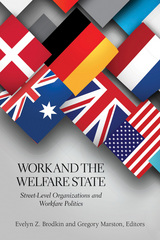 Work and the Welfare State: Street-Level Organizations and Workfare Politics
Evelyn Z. Brodkin and Gregory Marston, Editors
Georgetown University Press, 2013 Work and the Welfare State places street-level organizations at the analytic center of welfare-state politics, policy, and management. This volume offers a critical examination of efforts to change the welfare state to a workfare state by looking at on-the-ground issues in six countries: the US, UK, Australia, Denmark, Germany, and the Netherlands. An international group of scholars contribute organizational studies that shed new light on old debates about policies of workfare and activation. Peeling back the political rhetoric and technical policy jargon, these studies investigate what really goes on in the name of workfare and activation policies and what that means for the poor, unemployed, and marginalized populations subject to these policies. By adopting a street-level approach to welfare state research, Work and the Welfare State reveals the critical, yet largely hidden, role of governance and management reforms in the evolution of the global workfare project. It shows how these reforms have altered organizational arrangements and practices to emphasize workfare’s harsher regulatory features and undermine its potentially enabling ones. As a major contribution to expanding the conceptualization of how organizations matter to policy and political transformation, this book will be of special interest to all public management and public policy scholars and students.
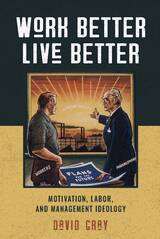 Work Better, Live Better: Motivation, Labor, and Management Ideology
David A. Gray
University of Massachusetts Press, 2020 In the United States, a strong work ethic has long been upheld as a necessity, and tributes to motivation abound—from the motivational posters that line the walls of the workplace to the self-help gurus who draw in millions of viewers online. Americans are repeatedly told they can achieve financial success and personal well-being by adopting a motivated attitude toward work. But where did this obsession come from? And whose interests does it serve?
Work Better, Live Better traces the rise of motivational rhetoric in the workplace across the expanse of two world wars, the Great Depression, and the Cold War. Beginning in the early twentieth century, managers recognized that force and coercion—the traditional tools of workplace discipline—inflamed industrial tensions, so they sought more subtle means of enlisting workers' cooperation. David Gray demonstrates how this “motivational project” became a highly orchestrated affair as managers and their allies deployed films, posters, and other media, and drew on the ideas of industrial psychologists and advertising specialists to advance their quests for power at the expense of worker and union interests.
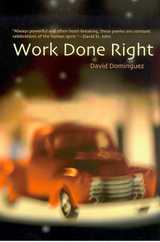 Work Done Right
David Dominguez
University of Arizona Press, 2003 My red pickup choked on burnt oil as I drove down Highway 99. . . . Abraham Tovar is a young man who works in a sausage factory and desperately longs to create a history of his own. As Abraham's life becomes absorbed into the blood and spice of pork, his thoughts explore his ancestry, roam the stars, and reflect upon the despairs and strengths of factory workers who live with "the unyielding memory of pig."
I pulled into Galdini Sausage at noon.
The workers walked out of production
and swatted away the flies desperate for pork.
Pork gripped the men and was everywhere,
in the form of blood, in the form of fat,
and in pink meat that stuck to the workers' shoes.
Work Done Right is a sequence of narrative poems, told with a lyricist's tenderness and an eye for detail, that address the human condition in unexpected ways. David Dominguez explores Abraham's struggle to maintain personal dignity in harsh circumstances, juxtaposing bleak images of the sausage factory with the hope of finding one's true place in the world. Through his sensuously textured words, he pays tribute to people and place as he takes readers on a mystic journey toward redemption.
The Work Ethic in Industrial America, 1850-1920
Daniel T. Rodgers
University of Chicago Press, 1978 "Rodgers's book is a study of how technology affects ideas. That is the issue to which Rodgers always returns: how did men and women react to the economy of unprecedented plenty that the 19th-century revolution in power and machines had produced? . . . This is certainly . . . one of the most refreshing and penetrating analyses of the relation of diverse levels of 19th-century culture that it has been my pleasure to read in a long time."—Carl N. Degler, Science
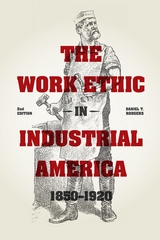 The Work Ethic in Industrial America 1850-1920: Second Edition
Daniel T. Rodgers
University of Chicago Press, 2014 The phrase “a strong work ethic” conjures images of hard-driving employees working diligently for long hours. But where did this ideal come from, and how has it been buffeted by changes in work itself? While seemingly rooted in America’s Puritan heritage, perceptions of work ethic have actually undergone multiple transformations over the centuries. And few eras saw a more radical shift in labor ideology than the American industrial age.
Daniel T. Rodgers masterfully explores the ways in which the eclipse of small-scale workshops by mechanized production and mass consumption triggered far-reaching shifts in perceptions of labor, leisure, and personal success. He also shows how the new work culture permeated society, including literature, politics, the emerging feminist movement, and the labor movement.
A staple of courses in the history of American labor and industrial society, Rodgers’s sharp analysis is sure to find a new audience, as twenty-first-century workers face another shift brought about by technology. The Work Ethic in Industrial America 1850–1920 is a classic with critical relevance in today’s volatile economic times.
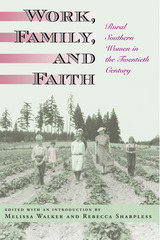 Work, Family, and Faith: Rural Southern Women in the Twentieth Century
Edited & Intro by Melissa Walker & Rebecca Sharpless
University of Missouri Press, 2006
At the beginning of the twentieth century, the majority of rural southerners were dependent on agriculture and eked out a living as tenants on land owned by someone else. Women took on multiple duties, from child rearing to labor in the fields, to help meet their own goals of independence, well-being, and family persistence on the land. Over the course of the century, however, women found their lives and their work transformed. Government intervention, the Great Depression, and industrial job opportunities created by the two world wars and the development of Sun Belt industries lured or pushed tens of thousands of black and white rural southerners off the land.
As the American South changed around them, becoming more urban and industrialized, some women struggled to help their families survive in the increasingly large-scale and commercial agricultural economy, while other women eagerly seized opportunities to engage in rural reform, get better educations, and work at off-farm jobs. Whether they moved to the cities or stayed on the farms, most of these women continued to struggle against poverty and relied on tradition and inner strength to get by.
This well-researched, sharply focused, and keenly insightful collection of essays takes readers across the twentieth-century South, from rural roadside stands to tobacco fields to Sloss-Sheffield Steel’s “Sloss Quarters” in Birmingham. Covering the full scope of southern rural women’s varied lives, this book will be of particular value to anyone interested in sociology, women’s studies, or southern history.
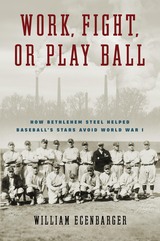 Work, Fight, or Play Ball: How Bethlehem Steel Helped Baseball's Stars Avoid World War I
Ecenbarger, William
Temple University Press, 2024 In 1918, Bethlehem Steel started the world’s greatest industrial baseball league. Appealing to Major League Baseball players looking to avoid service in the Great War, teams employed “ringers” like Babe Ruth, Rogers Hornsby, and Shoeless Joe Jackson in what became scornfully known as “safe shelter” leagues. In Work, Fight, or Play Ball, William Ecenbarger fondly recounts this little-known story of how dozens of athletes faced professional conflicts and a difficult choice in light of public perceptions and war propaganda.
Some players used the steel mill and shipyard leagues to avoid wartime military duty, irking Major League owners, who saw their rosters dwindling. Bethlehem Steel President Charles Schwab (no relation to the financier) saw the league as a means to stave off employee and union organizing. Most fans loudly criticized the ballplayers, but nevertheless showed up to watch the action on the diamond.
Ecenbarger traces the 1918 Steel League’s season and compares the fates of the players who defected to industry or continued to play stateside with the travails of the Major Leaguers, such as Christy Mathewson, Ty Cobb, and Grover Cleveland Alexander, who served during the war.
Work, Fight, or Play Ball reveals the home field advantage brought on by the war, which allowed companies to profit from Major League players.
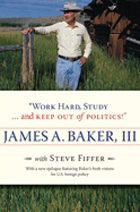 "Work Hard, Study . . . and Keep Out of Politics!"
James A. Baker III with Steve Fiffer
Northwestern University Press, 2008 White House chief of staff twice over, former secretary of state, past secretary of the treasury, and campaign leader for three different candidates in five successful campaigns—few people have lived and breathed politics as deeply or for as long as James Baker. Now, with candor, down-home Texas storytelling, and more than a few surprises, Baker opens up about his thirty-five years behind the scenes.
Beginning in 1975 with the Ford administration, in a job procured for him by friend and tennis partner George H. W. Bush, Baker was in the thick of American politics. He recounts the inside story of Ford’s rejection of Reagan as a running mate in 1976 with the same insight he has into Reagan’s rejection of Ford four years later. When the White House was plunged into turmoil after the Reagan assassination attempt, he was there, and his stories take readers deeper into those chaotic days. Baker was on hand for the George H. W. Bush campaign’s battle over running mate Dan Quayle and, more recently, he was again on the front row as George W. Bush fought it out in Florida. Spellbinding and frank, his stories are the ones between the lines of our history books.
In this new edition, Baker also responds for the first time in print to the George W. Bush administration’s reaction to the Iraq Study Group Report, written with his input. Baker is very qualified to comment on the political operation of the current administration, and his new writing for this paperback brings the full weight of his experience to bear.
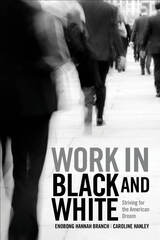 Work in Black and White: Striving for the American Dream
Enobong Hannah Branch
Russell Sage Foundation, 2022 The ability to achieve economic security through hard work is a central tenet of the American Dream, but significant shifts in today’s economy have fractured this connection. While economic insecurity has always been a reality for some Americans, Black Americans have historically long experienced worse economic outcomes than Whites. In Work in Black and White, sociologists Enobong Hannah Branch and Caroline Hanley draw on interviews with 80 middle-aged Black and White Americans to explore how their attitudes and perceptions of success are influenced by the stories American culture has told about the American Dream – and about who should have access to it and who should not. Branch and Hanley find that Black and White workers draw on racially distinct histories to make sense of today’s rising economic insecurity. White Americans have grown increasingly pessimistic and feel that the American Dream is now out of reach, mourning the loss of a sense of economic security which they took for granted. But Black Americans tend to negotiate their present insecurity with more optimism, since they cannot mourn something they never had. All educated workers bemoaned the fact that their credentials no longer guarantee job security, but Black workers lamented the reality that even with an education, racial inequality continues to block access to good jobs for many. The authors interject a provocative observation into the ongoing debate over opportunity, security, and the American Dream: Among policymakers and the public alike, Americans talk too much about education. The ways people navigate insecurity, inequality, and uncertainty rests on more than educational attainment. The authors call for a public policy that ensures dignity in working conditions and pay while accounting for the legacies of historical inequality. Americans want the game of life to be fair. While the survey respondents expressed common ground on the ideal of meritocracy, opinions about to achieve economic security for all diverge along racial lines, with the recognition – or not – of differences in current and past access to opportunity in America. Work in Black and White is a call to action for meaningful policies to make the premise of the American Dream a reality.
 The Work in the World: Geographical Practice and the Written Word
Michael R. Curry
University of Minnesota Press, 1996 The Work in the World was first published in 1996. Minnesota Archive Editions uses digital technology to make long-unavailable books once again accessible, and are published unaltered from the original University of Minnesota Press editions. The writing or reading or buying or selling or judging of a written work is always at the same time the act of making a place-or making places. The author creates a special sort of place for his ideas; the reader, for her engagement with the author; the bookseller, for the notion of books as property to be categorized and sold; and so on. In this book, Michael R. Curry develops a geography of this process, a theory of the nature of space and places in written work. The Work in the World focuses on a paradox at the heart of this project: Although the written work is inextricably bound up in the construction of the places in which it is written, read, published, circulated, and cited, it nonetheless denies the importance of places. As the product of modern modes of knowledge, technology, and intellectual property, written work seems to say instead that only the encompassing universal space of ideas, objects, and commodities matters. Distinctive for the way it views theories in geography and science as fundamentally embedded in written works, The Work in the World argues eloquently that the philosophical questions raised by theories can only be addressed within the broader context of the work. Michael R. Curry is associate professor of geography at the University of California, Los Angeles.
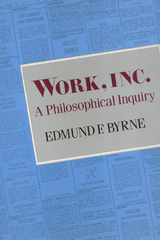 Work, Inc.: A Philosophical Inquiry
Edmund F. Byrne
Temple University Press, 1992 Many workers today feel that the longstanding social contract between government, business, and labor has been broken. This book examines legal and philosophical problems that must be addressed if there is to be a new social contract that is fair to workers. Drawing on a wide variety of sources, from the popular press to technical philosophy, Edmund F. Byrne brings into focus ethical issues involved in corporate decisions to reorganize, relocate, or automate. In assessing the human costs of these decisions, he shows why, to a worker, "corporations are not reducible to their assets and liabilities any more than a government is merely its annual budget. That they are organizations, that these organizations do things, and that they are socially responsible for what they do." In support of this assignment of responsibility, Byrne seeks to demythologize corporate hegemony by confronting a variety of intellectual "dragons" that guard the gates of the status quo. These include legal assumptions about corporate personhood and commodification, private property and eminent domain; management ideas about the autonomous employee and profit without payrolls; technocratic dreams of a dehumanized workplace: ideological belief in progress and competition; and philosophical arguments for libertarian freedom, liberal welfare, and global justice. Because of these and other mainstream perspectives, workers today are widely perceived, in law and in common parlance, to be isolated atoms. But, Byrne emphasizes, work. including work done for a transnational corporation, is done in a community. Since corporate leaders make decisions that have an impact on people’s lives and on communities, involvement in such decisions must be not only corporate or governmental but community-based as well.
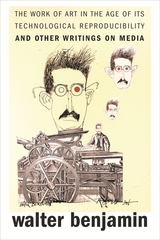 The Work of Art in the Age of Its Technological Reproducibility, and Other Writings on Media
Walter Benjamin
Harvard University Press, 2008 Walter Benjamin’s famous “Work of Art” essay sets out his boldest thoughts—on media and on culture in general—in their most realized form, while retaining an edge that gets under the skin of everyone who reads it. In this essay the visual arts of the machine age morph into literature and theory and then back again to images, gestures, and thought.
This essay, however, is only the beginning of a vast collection of writings that the editors have assembled to demonstrate what was revolutionary about Benjamin’s explorations on media. Long before Marshall McLuhan, Benjamin saw that the way a bullet rips into its victim is exactly the way a movie or pop song lodges in the soul.
This book contains the second, and most daring, of the four versions of the “Work of Art” essay—the one that addresses the utopian developments of the modern media. The collection tracks Benjamin’s observations on the media as they are revealed in essays on the production and reception of art; on film, radio, and photography; and on the modern transformations of literature and painting. The volume contains some of Benjamin’s best-known work alongside fascinating, little-known essays—some appearing for the first time in English. In the context of his passionate engagement with questions of aesthetics, the scope of Benjamin’s media theory can be fully appreciated.
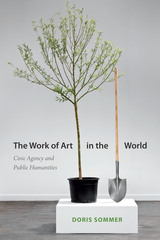 The Work of Art in the World: Civic Agency and Public Humanities
Doris Sommer
Duke University Press, 2014 Celebrating art and interpretation that take on social challenges, Doris Sommer steers the humanities back to engagement with the world. The reformist projects that focus her attention develop momentum and meaning as they circulate through society to inspire faith in the possible. Among the cases that she covers are top-down initiatives of political leaders, such as those launched by Antanas Mockus, former mayor of Bogotá, Colombia, and also bottom-up movements like the Theatre of the Oppressed created by the Brazilian director, writer, and educator Augusto Boal. Alleging that we are all cultural agents, Sommer also takes herself to task and creates Pre-Texts, an international arts-literacy project that translates high literary theory through popular creative practices. The Work of Art in the World is informed by many writers and theorists. Foremost among them is the eighteenth-century German poet and philosopher Friedrich Schiller, who remains an eloquent defender of art-making and humanistic interpretation in the construction of political freedom. Schiller's thinking runs throughout Sommer's modern-day call for citizens to collaborate in the endless co-creation of a more just and more beautiful world.
The Work of Authorship
Edited by Mireille van Eechoud
Amsterdam University Press, 2014 Technological and economic concerns have long been the drivers of debate about copyright. But diverse disciplines in the humanities - including literary studies, aesthetics, film studies, and the philosophy of art - have a great deal to offer if we wish to establish a more nuanced and useful conception of copyright and authorship. This volume brings together scholars from a range of disciplines to explore the challenges inherent in translating aesthetics and creativity studies to concepts of copyright, especially as longstanding approaches are troubled by the rise of the digital.
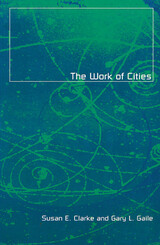 Work Of Cities
Susan E. Clarke
University of Minnesota Press, 1998 Examines the new role of cities in a global economy. Are cities obsolete relics of an earlier era? In this pathbreaking book, Susan E. Clarke and Gary L. Gaile contend that contrary to this conventional wisdom, cities are growing in importance. Far from irrelevant, local governments are vital political arenas for the new work of cities-empowering their citizens to adapt and serve as catalysts for the global economy. Using Robert Reich’s The Work of Nations as a point of departure, the authors argue that globalism, coupled with increasing disparities of wealth and power, changes not only the work of nations but also the role of communities. Clarke and Gaile begin by detailing the transformation of the United States to a postindustrial economy situated in a “global web.” They then examine the emergence of local entrepreneurial policy choices in the context of economic and political restructuring and in the absence of federal resources. Using empirical data to test assumptions about what leads cities to choose new policies, Clarke and Gaile explore local context through four case studies: Cleveland, Tacoma, Syracuse, and Jacksonville. They discuss human capital as the linchpin of globalization, arguing that analytical ability, information skills, and the capacity to innovate are all key to wealth creation. In conclusion, they contend that inattention to the decline in human and social capital will ultimately undermine any local development efforts-unless local policymakers craft responses to globalization that integrate rather than isolate citizens.The Work of Cities is both bold and nuanced, pragmatic yet compassionate in its recommendations. It is essential reading for anyone who cares about the fate of our metropolitan communities and the people who live there. 0-8166-2892-0 Cloth $47.95xx0-8166-2893-9 Paper $18.95240 pages 9 tables, 2 figures 5 7/8 x 9 July Globalization and Community Series, volume 1Translation inquiries: University of Minnesota Press
The Work of Culture: Symbolic Transformation in Psychoanalysis and Anthropology
Gananath Obeyesekere
University of Chicago Press, 1990 "The Work of Culture is the product of two decades of field research by Sri Lanka's most distinguished anthropological interpreter, and its combination of textual analysis, ethnographic sensitivity, and methodological catholicity makes it something of a blockbuster."—Arjun Appadurai, Journal of Asian Studies
 The Work of Democracy: Ralph Bunche, Kenneth B. Clark, Lorraine Hansberry, and the Cultural Politics of Race
Ben Keppel
Harvard University Press, 1995 Thirty years after the greatest legislative triumphs of the civil rights movement, overcoming racism remains what Martin Luther King, Jr., once called America’s unfinished “work of democracy.” Why this remains true is the subject of Ben Keppel’s The Work of Democracy. By carefully tracing the public lives of Ralph Bunche, Kenneth B. Clark, and Lorraine Hansberry, Keppel illuminates how the mainstream media selectively appropriated the most challenging themes, ideas, and goals of the struggle for racial equality so that difficult questions about the relationship between racism and American democracy could be softened, if not entirely evaded.
Keppel traces the circumstances and cultural politics that transformed each individual into a participant-symbol of the postwar struggle for equality. Here we see how United Nations ambassador Ralph Bunche, the first African American to receive the Nobel Peace Prize, came to symbolize the American Dream while Bunche’s opposition to McCarthyism was ignored. The emergence of psychologist and educator Kenneth B. Clark marked the ascendancy of the child and the public school as the leading symbols of the civil rights movement. Yet Keppel details how Clark’s blueprint for “community action” was thwarted by machine politics. Finally, the author chronicles the process by which the “American Negro” became an “African American” by considering the career of playwright Lorraine Hansberry. Keppel reveals how both the journalistic and the academic establishment rewrote the theme of her prizewinning play A Raisin in the Sun to conform to certain well-worn cultural conventions and the steps Hansberry took to reclaim the message of her classic.
The Work of Democracy uses biography in innovative ways to reflect on how certain underlying cultural assumptions and values of American culture simultaneously advanced and undermined the postwar struggle for racial equality.
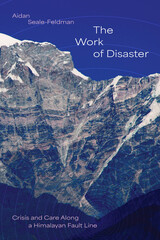 The Work of Disaster: Crisis and Care Along a Himalayan Fault Line
Aidan Seale-Feldman
University of Chicago Press A compelling portrait of post-disaster imaginaries of repair in Nepal.
In a world marked by escalating disasters, the forms that care takes are increasingly fraught. In this powerful book, anthropologist Aidan Seale-Feldman focuses on Nepal, where in 2015 a 7.8-magnitude earthquake and equally powerful aftershock struck the country’s central region. The disaster claimed more than nine thousand lives and inspired a surge of humanitarian concern for the mental health of Nepali people. Based on extensive ethnographic fieldwork, The Work of Disaster examines the possibilities generated by disaster, as well as the vexed relationship between crisis and care.
Moving between NGO offices, mountain trails, therapeutic interventions, and affected villages, Seale-Feldman tells the story of an emergent “mental health crisis” and the forms of care that followed in the disaster’s wake. She also analyzes the changes emergency services bring about in the places they seek to assist, the challenges of psychiatric support provided by international organizations, and the place of mental health counseling in a modern biopolitical reality. The Work of Disaster reveals the simultaneous violence and gentleness of humanitarian encounters, engaging along the way with broader debates about world making and the ethics of care.
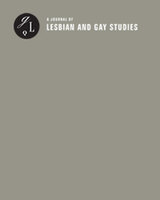 The Work of Friendship: In Memoriam Alan Bray, Volume 10
Jody Greene , ed.
Duke University Press The sudden and premature death of Alan Bray deprived gay and lesbian studies of a founding figure. Best known for his 1982 book Homosexuality in Renaissance England, Bray paved the way for subsequent scholars in early modern gay and lesbian studies. This special issue of GLQ collects essays that draw on and expand Bray’s work of the past two decades, as well as offer new work in the emerging field of friendship studies, of which he was a pioneer. Contributors to the collection include some of the most prominent scholars in the field of early modern sexualities. They think expansively about Bray’s impact on their own work and, most importantly, test the applicability of his theories (that same-sex desire has a history that can be reconstructed and that the actual object of study is difficult to capture, as its expression varies radically across cultures and societies) in areas where they have not been previously employed. Two essays in this collection explore friendships or intimacies between women or between men and women—topics Bray did not pursue extensively. Others deal with locations outside Bray’s heavily English focus, including France, the Netherlands, Belgium, and Luxembourg, or apply his theories to periods beyond the Renaissance. Additionally, the issue includes a review of Bray’s The Friend, published posthumously, and an assessment of his scholarly career from his earliest writings to this final work. Contributors. George Chauncey, Carla Freccero, Jonathan Goldberg, Jody Greene, George E. Haggerty, Jeffrey Masten, Jeffrey Merrick, Stephen Orgel, Laurie Shannon, Valerie Traub
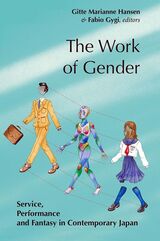 The Work of Gender: Service, Performance and Fantasy in Contemporary Japan
Edited by Gitte Marianne Hansen and Fabio Gygi
National University of Singapore Press, 2022 This engaging volume brings new perspectives to the much-studied field of gender in Japan by focusing on the ways in which gender presentation is turned into a commodified experience. It highlights the deliberate work that goes into the creation of gendered forms of intimacy in a broad range of settings: among female fans of pornography, cross-dressing escorts, gay bar service staff, street musicians in Tokyo and transgender people in Kyoto. Engaging with theories of gender presentation, performance and emotional labour, the chapters pay careful attention to the lived realities of gender, showcasing the strength of ethnographic methods. They allow readers to understand not only how gender is constructed and commodified in contemporary Japan but also what fantasies feed this process. Mainly written by early-career scholars, the volume addresses questions of sexuality and gender that are of interest to scholars and students at all levels, whether in Japan-related fields or beyond.
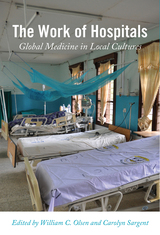 The Work of Hospitals: Global Medicine in Local Cultures
William C. Olsen
Rutgers University Press, 2022 In the context of neoliberalism and global austerity measures, health care institutions around the world confront numerous challenges in attempting to meet the needs of local populations. Examples from Africa (including, Ethiopia, Ghana, and Congo), Latin America (Peru, Mexico, Guatemala), Western Europe (France, Greece), and the United States illustrate how hospitals play a significant role in the social production of health and disease in the communities where they are. Many low-resource countries have experienced increasing privatization and dysfunction of public sector institutions such as hospitals, and growing withdrawal of funding for non-profit organizations. Underlying the chapters in The Work of Hospitals is a fundamental question: how do hospitals function lacking the medications, equipment and technologies, and personnel normally assumed to be necessary? This collection of ethnographies demonstrates how hospital administrators, clinicians, and other staff in hospitals around the world confront innumerable risks in their commitment to deliver health care, including civil unrest, widespread poverty, endemic and epidemic disease, and supply chain instability. Ultimately, The Work of Hospitals documents a vast gulf between the idealized mission of the hospital and the implementation of this mission in everyday practice. Hospitals thus become “contested space” between policy and practice.
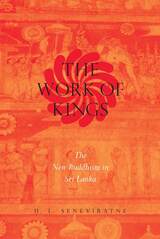 The Work of Kings
H. L. Seneviratne
University of Chicago Press, 2000 The Work of Kings is a stunning new look at the turbulent modern history and sociology of the Sri Lankan Buddhist Monkhood and its effects upon contemporary society. Using never-before translated Sinhalese documents and extensive interviews with monks, Sri Lankan anthropologist H.L. Seneviratne unravels the inner workings of this New Buddhism and the ideology on which it is based.
Beginning with Anagarika Dharmapala's "rationalization" of Buddhism in the early twentieth century, which called for monks to take on a more activist role in the community, Seneviratne shows how the monks have gradually revised their role to include involvement in political and economic spheres. The altruistic, morally pure monks of Dharamapala's dreams have become, Seneviratne trenchantly argues, self-centered and arrogant, concealing self-aggrandizement behind a façade of "social service."
A compelling call for reform and a forceful analysis, The Work of Kings is essential to anthropologists, historians of religion, and those interested in colonialism, nationalism, and postcolonial politics.
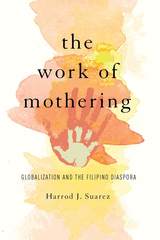 The Work of Mothering: Globalization and the Filipino Diaspora
Harrod Suarez
University of Illinois Press, 2017 Women make up a majority of the Filipino workforce laboring overseas. Their frequent employment in nurturing, maternal jobs--nanny, maid, caretaker, nurse--has found expression in a significant but understudied body of Filipino and Filipino American literature and cinema. Harrod J. Suarez's innovative readings of this cultural production explores issues of diaspora, gender, and labor. He details the ways literature and cinema play critical roles in encountering, addressing, and problematizing what we think we know about overseas Filipina workers. Though often seen as compliant subjects, the Filipina mother can also destabilize knowledge production that serves the interests of global empire, capitalism, and Philippine nationalism. Suarez examines canonical writers like Nick Joaquín, Carlos Bulosan, and Jessica Hagedorn to explore this disruption and understand the maternal specificity of the construction of overseas Filipina workers. The result is a series of readings that develop new ways of thinking through diasporic maternal labor that engages with the sociological imaginary.
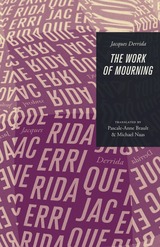 The Work of Mourning
Jacques Derrida
University of Chicago Press, 2001 Jacques Derrida is, in the words of the New York Times, "perhaps the world's most famous philosopher—if not the only famous philosopher." He often provokes controversy as soon as his name is mentioned. But he also inspires the respect that comes from an illustrious career, and, among many who were his colleagues and peers, he inspired friendship. The Work of Mourning is a collection that honors those friendships in the wake of passing.
Gathered here are texts—letters of condolence, memorial essays, eulogies, funeral orations—written after the deaths of well-known figures: Roland Barthes, Paul de Man, Michel Foucault, Louis Althusser, Edmond Jabès, Louis Marin, Sarah Kofman, Gilles Deleuze, Emmanuel Levinas, Jean-François Lyotard, Max Loreau, Jean-Marie Benoist, Joseph Riddel, and Michel Servière.
With his words, Derrida bears witness to the singularity of a friendship and to the absolute uniqueness of each relationship. In each case, he is acutely aware of the questions of tact, taste, and ethical responsibility involved in speaking of the dead—the risks of using the occasion for one's own purposes, political calculation, personal vendetta, and the expiation of guilt. More than a collection of memorial addresses, this volume sheds light not only on Derrida's relation to some of the most prominent French thinkers of the past quarter century but also on some of the most important themes of Derrida's entire oeuvre-mourning, the "gift of death," time, memory, and friendship itself.
"In his rapt attention to his subjects' work and their influence upon him, the book also offers a hesitant and tangential retelling of Derrida's own life in French philosophical history. There are illuminating and playful anecdotes—how Lyotard led Derrida to begin using a word-processor; how Paul de Man talked knowledgeably of jazz with Derrida's son. Anyone who still thinks that Derrida is a facetious punster will find such resentful prejudice unable to survive a reading of this beautiful work."—Steven Poole, Guardian
"Strikingly simpa meditations on friendship, on shared vocations and avocations and on philosophy and history."—Publishers Weekly
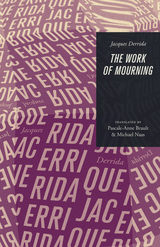 The Work of Mourning
Jacques Derrida
University of Chicago Press, 2003 Jacques Derrida is, in the words of the New York Times, "perhaps the world's most famous philosopher—if not the only famous philosopher." He often provokes controversy as soon as his name is mentioned. But he also inspires the respect that comes from an illustrious career, and, among many who were his colleagues and peers, he inspired friendship. The Work of Mourning is a collection that honors those friendships in the wake of passing.
Gathered here are texts—letters of condolence, memorial essays, eulogies, funeral orations—written after the deaths of well-known figures: Roland Barthes, Paul de Man, Michel Foucault, Louis Althusser, Edmond Jabès, Louis Marin, Sarah Kofman, Gilles Deleuze, Emmanuel Levinas, Jean-François Lyotard, Max Loreau, Jean-Marie Benoist, Joseph Riddel, and Michel Servière.
With his words, Derrida bears witness to the singularity of a friendship and to the absolute uniqueness of each relationship. In each case, he is acutely aware of the questions of tact, taste, and ethical responsibility involved in speaking of the dead—the risks of using the occasion for one's own purposes, political calculation, personal vendetta, and the expiation of guilt. More than a collection of memorial addresses, this volume sheds light not only on Derrida's relation to some of the most prominent French thinkers of the past quarter century but also on some of the most important themes of Derrida's entire oeuvre-mourning, the "gift of death," time, memory, and friendship itself.
"In his rapt attention to his subjects' work and their influence upon him, the book also offers a hesitant and tangential retelling of Derrida's own life in French philosophical history. There are illuminating and playful anecdotes—how Lyotard led Derrida to begin using a word-processor; how Paul de Man talked knowledgeably of jazz with Derrida's son. Anyone who still thinks that Derrida is a facetious punster will find such resentful prejudice unable to survive a reading of this beautiful work."—Steven Poole, Guardian
"Strikingly simpa meditations on friendship, on shared vocations and avocations and on philosophy and history."—Publishers Weekly
The Work of Music: Labor and Creativity in Germany's Long Nineteenth Century
Celia Applegate
University of Wisconsin Press, 2025 In The Work of Music, Celia Applegate examines the cultural history of Austro-German music through the lens of labor from the 1648 Peace of Westphalia to the Third Reich. She explores the working world of music and musicians, the various jobs they performed, the work music did in society, the observations and commentaries of contemporaries on the shape and function of musical life, and the work of organizing music making, both amateur and professional. At a time when ideas of absolute music and music-as-leisure were both on the rise, writing about music tended to obscure these practical matters. Here, Applegate reflects on how an intensely musical society organized and understood the ubiquitous activity that underpinned it.
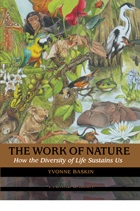 The Work of Nature: How The Diversity Of Life Sustains Us
Yvonne Baskin; Foreword by Paul R. Ehrlich
Island Press, 1997 The lavish array of organisms known as "biodiversity" is an intricately linked web that makes the earth a uniquely habitable planet. Yet pressures from human activities are destroying biodiversity at an unprecedented rate. How many species can be lost before the ecological systems that nurture life begin to break down? In The Work of Nature, noted science writer Yvonne Baskin examines the threats posed to humans by the loss of biodiversity. She summarizes and explains key findings from the ecological sciences, highlighting examples from around the world where shifts in species have affected the provision of clean air, pure water, fertile soils, lush landscapes, and stable natural communities. As Baskin makes clear, biodiversity is much more than number of species -- it includes the complexity, richness, and abundance of nature at all levels, from the genes carried by local populations to the layout of communities and ecosystems across the landscape. Ecologists are increasingly aware that mankind's wanton destruction of living organisms -- the planet's work force -- threatens to erode our basic life support services. With uncommon grace and eloquence, Baskin demonstrates how and why that is so. Distilling and bringing to life the work of the world's leading ecologists, The Work of Nature is the first book of its kind to clearly explain the practical consequences of declining biodiversity on ecosystem health and function.
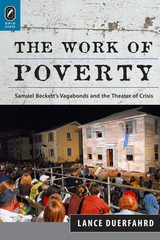 The Work of Poverty: Samuel Beckett's Vagabonds and the Theater of Crisis
Lance Duerfahrd
Ohio State University Press, 2013 How did Samuel Beckett’s Waiting for Godot come to be performed in such places as San Quentin Prison, Mississippi during the Civil Rights Movement, Sarajevo under military siege, New Orleans’s Lower Ninth Ward after Hurricane Katrina, and Zuccotti Park during the Occupy Wall Street protests? The Work of Poverty: Samuel Beckett’s Vagabonds and the Theater of Crisis studies the appeal of Godot to audiences in settings of historical crisis and suffering. Lance Duerfahrd argues that these circumstances transform the performance and the reception of the play, thereby illuminating a cathartic and political dimension of Beckett’s work that goes unseen in traditional performance contexts. The resonance of one of the most canonical plays of the twentieth century within landscapes of disaster fulfills the aesthetic of “ultimate penury” that Beckett hones in his work. Here the subtractive and reductive dynamic of the Nobel Prize–winning author’s craft comes into clearer view, echoing with the despondent condition beyond the stage. In developing an aesthetic of penury, The Work of Poverty brings together the dispossessed characters in Godot; the derelict narrators of Beckett’s Molloy,Malone Dies, and the Unnamable; and the formal experimentation in poverty witnessed in his Endgame and Worstward Ho. Beckett forged increasingly destitute forms of theater and prose on the periphery of writing. Duerfahrd illustrates how this work speaks to our age by emphasizing characters on the periphery of society.
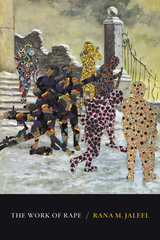 The Work of Rape
Rana M. Jaleel
Duke University Press, 2021 In The Work of Rape Rana M. Jaleel argues that the redefinition of sexual violence within international law as a war crime, crime against humanity, and genocide owes a disturbing and unacknowledged debt to power and knowledge achieved from racial, imperial, and settler colonial domination. Prioritizing critiques of racial capitalism from women of color, Indigenous, queer, trans, and Global South perspectives, Jaleel reorients how violence is socially defined and distributed through legal definitions of rape. From Cold War conflicts in Latin America, the 1990s ethnic wars in Rwanda and Yugoslavia, and the War on Terror to ongoing debates about sexual assault on college campuses, Jaleel considers how legal and social iterations of rape and the terms that define it—consent, force, coercion—are unstable indexes and abstractions of social difference that mediate racial and colonial positionalities. Jaleel traces how post-Cold War orders of global security and governance simultaneously transform the meaning of sexualized violence, extend US empire, and disavow legacies of enslavement, Indigenous dispossession, and racialized violence within the United States.
Duke University Press Scholars of Color First Book Award recipient
 The Work of Revision
Hannah Sullivan
Harvard University Press, 2013 Revision might seem to be an intrinsic part of good writing. But Hannah Sullivan argues that we inherit our faith in the virtues of redrafting from early-twentieth-century modernism. Closely examining changes made in manuscripts, typescripts, and proofs by T. S. Eliot, Ezra Pound, Ernest Hemingway, James Joyce, Virginia Woolf, and others, she shows how modernist approaches to rewriting shaped literary style, and how the impulse to touch up, alter, and correct can sometimes go too far.
In the nineteenth century, revision was thought to mar a composition’s originality—a prejudice cultivated especially by the Romantics, who believed writing should be spontaneous and organic, and that rewriting indicated a failure of inspiration. Rejecting such views, avant-garde writers of the twentieth century devoted themselves to laborious acts of rewriting, both before and after publishing their work. The great pains undertaken in revision became a badge of honor for writers anxious to justify the value and difficulty of their work. In turn, many of the distinctive effects of modernist style—ellipsis, fragmentation, parataxis—were produced by zealous, experimental acts of excision and addition.
The early twentieth century also saw the advent of the typewriter. It proved the ideal tool for extensive, multi-stage revisions—superior even to the word processor in fostering self-scrutiny and rereading across multiple drafts. Tracing how master stylists from Henry James to Allen Ginsberg have approached their craft, The Work of Revision reveals how techniques developed in the service of avant-garde experiment have become compositional orthodoxy.
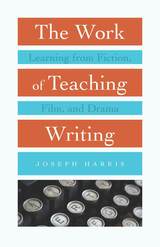 The Work of Teaching Writing: Learning from Fiction, Film, and Drama
Joseph Harris
Utah State University Press, 2020 Film and literature can illuminate the experience of teaching and learning writing in ways that academic books and articles often miss. In particular, popular books and movies about teaching reveal the crucial importance of taking students seriously as writers and intellectuals. In this book, Joseph Harris explores how the work of teaching writing has been depicted in novels, films, and plays to reveal what teachers can learn from studying not just theories of discourse, rhetoric, and pedagogy but also accounts of the lived experience of teaching writing.
Each chapter examines a fictional representation of writing classes—as portrayed in Dead Poets Society, Up the Down Staircase, Educating Rita, Push, and more—and shifts the conversation from how these works portray teachers to how they dramatize the actual work of teaching. Harris considers scenes of instruction from different stages of the writing process and depictions of students and teachers at work together to highlight the everyday aspects of teaching writing.
In the writing classroom the ideas of teachers come to life in the work of their students. The Work of Teaching Writing shows what fiction, film, and drama can convey about the moment of exchange between teacher and student as they work together to create new insights into writing. It will interest both high school and undergraduate English teachers, as well as graduate students and scholars in composition and rhetoric, literary studies, and film studies.
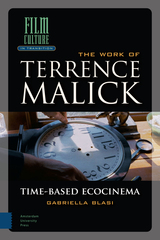 The Work of Terrence Malick: Time-Based Ecocinema
Gabriella Blasi
Amsterdam University Press, 2020 The Work of Terrence Malick: Time-Based Ecocinema develops a timely ecocinema approach to film analysis illuminated by Benjamin's notion of the turn of time. Current work on Malick's films emphasizes the spatial dynamics of his cinema, particularly as it pertains, from within a phenomenological framework, to the viewer's experience of films. This book redirects scholarly attention to the way Malick's directorial work shapes time and duration, laying new groundwork for the analysis of how films unsettle nature-culture binaries in modernity. The study performs this intervention through a rigorous engagement with Walter Benjamin's work on time, violence and technologies and the emergent figural approach to aesthetics in film studies. Each of these methods has important precedents in film studies and other fields. The combination of methods performed in this book contributes to understanding the relevance of a time-based approach to Malick's films and the practical implications of a time-based relation to history in contemporary ecocinema discourses.
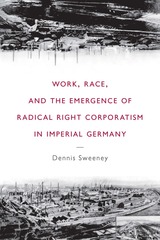 Work, Race, and the Emergence of Radical Right Corporatism in Imperial Germany
Dennis Sweeney
University of Michigan Press, 2010 In the late nineteenth and early twentieth centuries, the Saar river valley was one of the three most productive heavy industrial regions in Germany and one of the main reference points for national debates over the organization of work in large-scale industry. Among Germany's leading opponents of trade unions, Saar employers were revered for their system of factory organization, which was both authoritarian and paternalistic, stressing discipline and punitive measures and seeking to regulate behavior on and off the job. In its repressive and beneficent dimensions, the Saar system provided a model for state labor and welfare policy during much of the 1880s and 1890s. Dennis Sweeney examines the relationship between labor relations in heavy industry and public life in the Saar as a means of tracing some of the wider political-ideological changes of the era. Focusing on the changing discourses, representations, and institutions that gave shape and meaning to factory work and labor conflict in the Saar, Work, Race, and the Emergence of Radical Right Corporatism in Imperial Germany demonstrates the ways in which Saar factory culture and labor relations were constituted in wider fields of public discourse and anchored in the institutions of the local-regional public sphere and the German state. Of particular importance is the gradual transition in the Saar from a paternalistic workplace to a corporatist factory regime, a change that brought with it an authoritarian vision that ultimately converged with core elements in the ideological discourses of the German radical Right, including the National Socialists. This volume will be of interest to scholars and students of labor, industrial organization, ideology and political culture, and the genealogies of Nazism. Dennis Sweeney is Associate Professor of History at the University of Alberta. "The author makes a very insightful argument about the emergence of a kind of scientific racism within the new corporatism, one that brings biopolitics into German industry prior to the rise of National Socialism. This book will be an important contribution to the history of Imperial Germany, and has much potential to appeal to audiences in other fields of history."
---Andrew Zimmerman, George Washington University
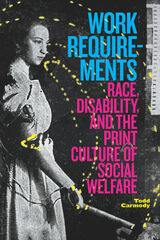 Work Requirements: Race, Disability, and the Print Culture of Social Welfare
Todd Carmody
Duke University Press, 2022 Throughout the history of the United States, work-based social welfare practices have served to affirm the moral value of work. In the late nineteenth century this representational project came to be mediated by the printed word with the emergence of industrial print technologies, the expansion of literacy, and the rise of professionalization. In Work Requirements Todd Carmody asks how work, even the most debasing or unproductive labor, came to be seen as inherently meaningful during this era. He explores how the print culture of social welfare—produced by public administrators, by economic planners, by social scientists, and in literature and the arts—tasked people on the social and economic margins, specifically racial minorities, incarcerated people, and people with disabilities, with shoring up the fundamental dignity of work as such. He also outlines how disability itself became a tool of social discipline, defined by bureaucratized institutions as the inability to work. By interrogating the representational effort necessary to make work seem inherently meaningful, Carmody ultimately reveals a forgotten history of competing efforts to think social belonging beyond or even without work.
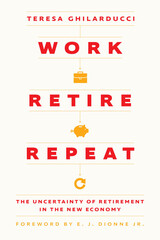 Work, Retire, Repeat: The Uncertainty of Retirement in the New Economy
Teresa Ghilarducci
University of Chicago Press, 2024 Now in paperback, a damning portrait of the dire realities of retirement in the United States—and how we can fix it. While the French went on strike in 2023 to protest the increase in the national retirement age, workers in the United States have all but given up on the notion of dignified retirement for all. Instead, Americans—whose elders face the highest risk of poverty compared to workers in peer nations—are fed feel-good stories about Walmart clerks who can finally retire because a customer raised the necessary funds through a GoFundMe campaign. Many argue that the solution to the financial straits of American retirement is simple: people need to just work longer. Yet this call to work longer is misleading in a multitude of ways, including its endangering of the health of workers and its discrimination against people who work in lower-wage occupations. In Work, Retire, Repeat, Teresa Ghilarducci tells the stories of elders locked into jobs—not because they love to work but because they must. But this doesn’t need to be the reality. Work, Retire, Repeat shows how relatively low-cost changes to how we finance and manage retirement will allow people to truly choose how they spend their golden years.
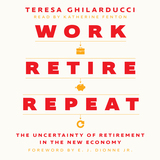 Work, Retire, Repeat: The Uncertainty of Retirement in the New Economy
Teresa Ghilarducci
University of Chicago Press, 2024 This is an audiobook version of this book. A damning portrait of the dire realities of retirement in the United States—and how we can fix it. While the French went on strike in 2023 to protest the increase in the national retirement age, workers in the United States have all but given up on the notion of dignified retirement for all. Instead, Americans—whose elders face the highest risk of poverty compared to workers in peer nations—are fed feel-good stories about Walmart clerks who can finally retire because a customer raised the necessary funds through a GoFundMe campaign. Many argue that the solution to the financial straits of American retirement is simple: people need to just work longer. Yet this call to work longer is misleading in a multitude of ways, including its endangering of the health of workers and its discrimination against people who work in lower-wage occupations. In Work, Retire, Repeat, Teresa Ghilarducci tells the stories of elders locked into jobs—not because they love to work but because they must. But this doesn’t need to be the reality. Work, Retire, Repeat shows how relatively low-cost changes to how we finance and manage retirement will allow people to truly choose how they spend their golden years.
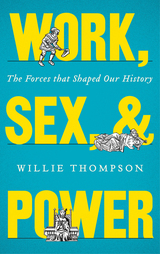 Work, Sex, and Power: The Forces that Shaped Our History
Willie Thompson
Pluto Press, 2015 This is the history of the world, from the origins of the Cosmos to the present day, seen through three major narratives: work, sex and power - the forces that have done more than any other to shape the world as we see it now.
It expertly explores the foundations of our developing society by showing how these grand themes have recurred throughout the various phases of global history. From communities of Palaeolithic hunter-gatherers, through feudalism and onto the capitalistic machine-civilisation of recent centuries, Willie Thompson takes us on a journey that is fundamentally opposed to mainstream histories which concentrate on monarchs, politicians and military commanders.
At the centre of this book lies the interaction between humans and their environment. By exploring history in this way, it reveals a simple yet powerful materialist understanding of how we got to where we are today, and opens a door to a different reading of our world.
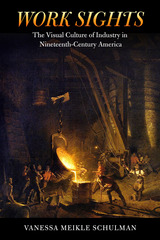 Work Sights: The Visual Culture of Industry in Nineteenth-Century America
Vanessa Meikle Schulman
University of Massachusetts Press, 2015 In this extensively illustrated work, Vanessa Meikle Schulman reveals how visual representations of labor, technology, and industry were crucial in shaping the way nineteenth-century Americans understood their nation and its place in the world. Her focus is the period between 1857 and 1887, an era marked by the rapid expansion of rail and telegraph networks, the rise of powerful, centralized corporations, and the creation of specialized facilities for the mechanized production and distribution of products. Through the examination of popular as well as fine art—news illustrations and paintings of American machines, workers, factories, and technical innovations—she illuminates an evolving tension between the perception of technology and industry as rational, logical, and systemic on the one hand and as essentially unknowable, strange, or irrational on the other.
Ranging across the fields of art history, visual studies, the history of technology, and American studies, Work Sights captures both the richness of nineteenth-century American visual culture and the extent to which Americans had begun to perceive their country as a modern nation connected by a web of interlocking technological systems.
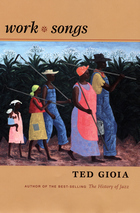 Work Songs
Ted Gioia
Duke University Press, 2006 All societies have relied on music to transform the experience of work. Song accompanied the farmer's labors, calmed the herder's flock, and set in motion the spinner's wheel. Today this tradition continues. Music blares on the shop floor; song accompanies transactions in the retail store; the radio keeps the trucker going on the long-distance haul. Now Ted Gioia, author of several acclaimed books on the history of jazz, tells the story of work songs from prehistoric times to the present. Vocation by vocation, Gioia focuses attention on the rhythms and melodies that have attended tasks such as the cultivation of crops, the raising and lowering of sails, the swinging of hammers, the felling of trees. In an engaging, conversational writing style, he synthesizes a breathtaking amount of material, not only from songbooks and recordings but also from travel literature, historical accounts, slave narratives, folklore, labor union writings, and more. He draws on all of these to describe how workers in societies around the world have used music to increase efficiency, measure time, relay commands, maintain focus, and alleviate drudgery. At the same time, Gioia emphasizes how work songs often soar beyond utilitarian functions. The heart-wringing laments of the prison chain gang, the sailor’s shanties, the lumberjack’s ballads, the field hollers and corn-shucking songs of the American South, the pearl-diving songs of the Persian Gulf, the rich mbube a cappella singing of South African miners: Who can listen to these and other songs borne of toil and hard labor without feeling their sweep and power? Ultimately, Work Songs, like its companion volume Healing Songs, is an impassioned tribute to the extraordinary capacity of music to enter into day-to-day lives, to address humanity’s deepest concerns and most heartfelt needs.
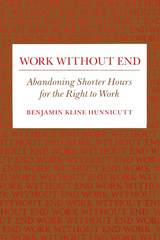 Work Without End: Abandoning Shorter Hours for the Right to Work
Benjamin Kline Hunnicutt
Temple University Press, 1990 "An extraordinarily informative scholarly history of the debate over working hours from 1920 to 1940."
--New York Times Book Review
For more than a century preceding the Great Depression, work hours were steadily reduced. Intellectuals, labor leaders, politicians, and workers saw this reduction in work as authentic progress and the resulting increase in leisure time as a cultural advance. Benjamin Hunnicutt examines the period from 1920 to 1940 during which the shorter hour movement ended and the drive for economic expansion through increased work took over. He traces the political, intellectual, and social dialogues that changed the American concept of progress from dreams of more leisure in which to pursue the higher things in life to an obsession with the importance of work and wage-earning.
During the 1920s with the development of advertising, the "gospel of consumption" began to replace the goal of leisure time with a list of things to buy. Business, which increasingly viewed shorter hours as a threat to economic growth, persuaded the worker that more work brought more tangible rewards. The Great Depression shook the newly proclaimed gospel as well as everyone's faith in progress.
Although work-sharing became a temporary solution to the shortage of jobs and massive unemployment, when faced with legislation that would limit the work week to thirty hours, Roosevelt and his New Deal advisors adopted the gospel of consumption's tests for progress and created more work by government action. The New Deal campaigned for the right to work a full time job--and won.
"Work Without End presents a compelling history of the rise and fall of the 40-hour work week, explains bow Americans became trapped in a prison of work that allows little room for family, bobbies or civic participation and suggests bow they can free themselves from relentless overwork. [This book] is a sober reconsideration of a topic that is critical to America's future. It suggests that progress doesn't mean much if there is not time for love as well as work, and liberation is an empty achievement if the work it frees one to do is truly without end."
--The Washington Post
"Hunnicutt, with this excellent book, becomes the first United States historian to examine fully why this momentous change occurred."
--The Journal of American History
"Hunnicutt's achievement is to ask the questions, and to provide the first extended answer which takes in the full array of economic, social, and political forces behind the ‘end of shorter hours' in the crucial first half of the twentieth century."
--Journal of Economic History
"This thoroughly documented history [is] a valuable book well worth reading."
--Libertarian Labor Review
"This is an important book in the emerging debate about alternatives to full employment. Hunnicutt is a skilled historian who is on to an important issue, writes well, and can bring many different kinds of historical sources to bear on the problem."
--Fred Block, University of Pennsylvania
"Work Without End is a disturbing but impressive indictment of both big business and the New Deal program of Franklin D. Roosevelt.... Hunnicutt presents an unusual but persuasive description of a successful conspiracy to deprive American workers of their vision of a shorter-hours work week and the individual and societal liberation which would flow from it."
--Labor Studies Journal
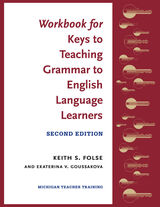 Workbook for Keys to Teaching Grammar to English Language Learners, Second Ed.
Keith S. Folse and Ekaterina V. Goussakova
University of Michigan Press, 2017 This workbook accompanies the Second Edition of Keys to Teaching Grammar to English Language Learners: A Practical Handbook by Keith S. Folse (ISBN: 978-0-472-03667-7).
The Workbook has been updated to reflect new content in the Second Edition of the Handbook and once again features exercises that carefully follow the sequence of material in the Handbook. To facilitate use of the Workbook with the Handbook, each exercise is coded with the corresponding pages for the material in the Handbook. Reflecting the different learning styles in any given class, the exercises practice identifying grammatical features in a variety of different ways, including many charts, matching activities, and short answer questions. In addition, the Workbook has a variety of exercises consisting of sentences typical of English language learners so that teachers can become familiar with specific types of errors that ESL students make with certain grammar points.
The Workbook also features some action research projects to guide teachers in collecting small samples of data from their target student populations.
Workbook for Norsk, nordmenn og Norge 1: Beginning Norwegian
Louis E. Janus
University of Wisconsin Press, 1981 Answers to written exercises and transcripts now included in e-book and in print
The Norsk, nordmenn og Norge series regards communication as the primary goal of language learning. This workbook provides meaningful structural practice in socially relevant and useful ways, combining entertaining activities with more traditional exercises. The new edition also provides answers and transcripts to accompany the workbook and oral exercises.
Workbook for The ESL Writer's Handbook, 2nd Edition
Janine Carlock, Maeve Eberhardt, Jaime Horst, and Lionel Menasche
University of Michigan Press, 2018 This workbook accompanies the 2nd Edition of The ESL Writer’s Handbook (ISBN: 978-0-472-03707-0). The Workbook extends the topics covered in the Handbook to enable a teacher to use the books as the core texts in an advanced ESL writing or first-year undergraduate composition course. The teacher may wish to assign Workbook exercises as homework or use them in class with the exercises in the Handbook.
The new edition of the Workbook includes 85 exercises to facilitate students’ understanding of some of the most complex or troublesome writing areas discussed in the Handbook. Exercises have been revised, and new exercises have been added to Sections 4 (Research Paper) and 5 (Grammar and Style).
Workbook for The ESL Writer's Handbook, 3rd Edition
Janine Carlock, Maeve Eberhardt, Jaime Horst
University of Michigan Press, 2025 The 3rd edition of the Workbook for The ESL Writer’s Handbook continues to help non-native English speakers, particularly international students, build a strong foundation in the basics of the academic writing genre needed for success in high school– or college-level writing. This book extends the topics covered in the Handbook by offering activities that can be assigned as homework or used in class as exercises to accompany lessons. Within, students will find a variety of activities centered around understanding the writing process, writing genres, research papers, and grammar and style. Many of the 85 activities can be completed individually, while a few call for discussion pairs or groups. With this workbook, students will build their confidence in English language writing.
CEFR Levels: B1–C2
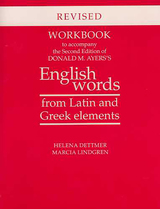 Workbook to Accompany the Second Edition of Donald M. Ayers's English Words from Latin and Greek Elements: Revised Edition
Helena Dettmer and Marcia Lindgren
University of Arizona Press, 2005 For more than forty years, English Words from Latin and Greek Elements, by Donald M. Ayers, has shown thousands of students the way to a broader vocabulary by teaching them to recognize the classical roots found in many English words. When the second edition of that text appeared in 1986, it was joined by a workbook that has proven exceptionally popular in reinforcing those vocabulary skills. Each lesson in the Workbook complements the text with a variety of exercises: short-answer, matching, multiple choice, word analysis, fill-in-the-blank, and true-false. The Workbook has now been revised to make it more relevant and useful. It features a new dictionary exercise and word analysis exercises, the replacement of true-false exercises that have caused the most difficulty for students, and the elimination of archaic words and other items that have become dated. The authors have also improved the clarity of the instructions for individual exercises, in some cases adding notes or providing sample answers. As part of the revised front matter, there is a new introduction written just for students to help them get the most out of the workbook. English Words and the Workbook have met with unqualified success in English and Classics courses at both the advanced secondary and college levels. This revision of the Workbook helps to ensure the continuing relevance of the roots approach to vocabulary building for tomorrow’s students.
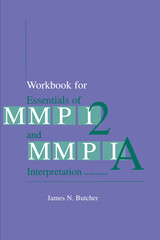 Workbook-Essentials Of Mmpi-2
James N. Butcher
University of Minnesota Press, 2000 The best resource for interpreting these widely used personality assessment tests.
Essentials of MMPI-2 and MMPI-A Interpretation presents innovative interpretive strategies for both the Minnesota Multiphasic Personality Inventory-2, or MMPI-2, and the adaptation for adolescents, the MMPI-A. James N. Butcher and Carolyn L. Williams detail the rationale for the revision and development of the instruments and their scales, and describe how to administer, score, profile, code, and interpret the tests.
The revised edition includes the most recent MMPI research, including new information on ethnic background and cultural setting as they relate to assessment. Focusing primarily on studies of profile validity and external correlates, the revision also includes interpretive guidelines for several scales that will be introduced into the MMPI tests in 2000.
James N. Butcher is professor of psychology at the University of Minnesota. The author of numerous articles and books on the MMPI, he was a member of the MMPI Restandardization and Adolescent Project committees. Carolyn L. Williams is associate professor of epidemiology in the School of Public Health, University of Minnesota, and coauthor of two previous books on the MMPI.
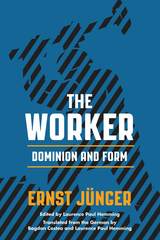 The Worker: Dominion and Form
Ernst Jünger, Edited by Laurence Paul Hemming, Translated from the German by Bogdan Costea and Laurence Paul Hemming
Northwestern University Press, 2018 Written in 1932, just before the fall of the Weimar Republic and on the eve of the Nazi accession to power, Ernst Jünger’s The Worker: Dominion and Form articulates a trenchant critique of bourgeois liberalism and seeks to identify the form characteristic of the modern age. Jünger’s analyses, written in critical dialogue with Marx, are inspired by a profound intuition of the movement of history and an insightful interpretation of Nietzsche’s philosophy.
Martin Heidegger considered Jünger “the only genuine follower of Nietzsche,” singularly providing “an interpretation which took shape in the domain of that metaphysics which already determines our epoch, even against our knowledge; this metaphysics is Nietzsche's doctrine of the ‘will to power.’” In The Worker, Jünger examines some of the defining questions of that epoch: the nature of individuality, society, and the state; morality, justice, and law; and the relationships between freedom and power and between technology and nature.
This work, appearing in its entirety in English translation for the first time, is an important contribution to debates on work, technology, and politics by one of the most controversial German intellectuals of the twentieth century. Not merely of historical interest, The Worker carries a vital message for contemporary debates about world economy, political stability, and equality in our own age, one marked by unsettling parallels to the 1930s.
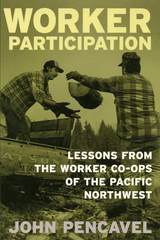 Worker Participation: Lessons from Worker Co-ops of the Pacific Northwest
John Pencavel
Russell Sage Foundation, 2001 Once they accept a job, most Americans have little control over their work environments. In Worker Participation, John Pencavel examines some of those rare workplaces where employees both own and manage the companies they work for: the plywood cooperatives and forest worker cooperatives of the Pacific Northwest. Rather than relying on abstract theories, Pencavel reviews the actual experiences of these two groups of worker co-ops. He focuses on how worker-owned companies perform when compared to more traditional firms and whether companies operate more efficiently when workers determine how they are run. He also looks at the long-term viability of these enterprises and why they are so unusual. Most businesses are constantly caught in the battle over whether to use the firm's profits to pay labor or to increase capital. Worker cooperatives provide an appealing case study because the interests of labor and capital are aligned. If individuals have a role in setting goals, they should have an added incentive to help meet those goals, and productivity should benefit. On the other hand, observers have long argued that, since any single employee in a co-op reaps only a small benefit from working hard, workers may shirk work, and productivity can flag. Furthermore, co-ops often have difficulty raising capital, since they are constrained by how much money the workers have, and banks are often reluctant to lend them money. Using some fifteen years of data on forty mills in Washington State, Pencavel examines how worker co-ops really function. He assesses the practical problems of running a workplace where every employee is a boss. He looks at worker productivity, on-the-job injuries and financial risks facing owner-workers. He considers whether co-ops are inherently unstable and if they are plagued by infighting among the many worker-owners. Although many of the co-ops he studied have closed or been replaced by conventional businesses, Pencavel judges them to have been a success. Despite the risks inherent in such operations, allowing workers to make the decisions that profoundly affect them produces many benefits, including workplace efficiency and increased job security. However, Pencavel concludes, if more Americans are to enjoy such a working arrangement, labor laws will have to be changed, participation encouraged, and a more vigorous public debate about worker participation must take place. This book provides an excellent place to start the discussion.
 Worker Resistance under Stalin: Class and Revolution on the Shop Floor
Jeffrey J. Rossman
Harvard University Press, 2005 Challenging the claim that workers supported Stalin's revolution "from above" as well as the assumption that working-class opposition to a workers' state was impossible, Jeffrey Rossman shows how a crucial segment of the Soviet population opposed the authorities during the critical industrializing period of the First Five-Year Plan.
Marshaling an impressive range of archival evidence, Rossman recounts in vivid detail myriad individual and collective acts of protest, including mass demonstrations, food riots, strikes, slowdowns, violent attacks against officials, and subversive letters to the authorities. Male and female workers in one of Russia's oldest, largest, and "reddest" manufacturing centers--the textile plants of the Ivanovo Industrial Region--actively resisted Stalinist policies that consigned them to poverty, illness, and hunger.
In April 1932, 20,000 mill workers across the region participated in a wave of strikes. Seeing the event as a rebuke to his leadership, Stalin dispatched Lazar Kaganovich to quash the rebellion, resulting in bloodshed and repression. Moscow was forced to respond to the crisis on the nation's shop floors with a series of important reforms.
Rossman uncovers a new dimension to the relationship between the Soviet leadership and working class and makes an important contribution to the debate about the nature of resistance to the Stalinist regime.
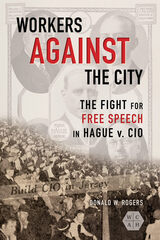 Workers against the City: The Fight for Free Speech in Hague v. CIO
Donald W. Rogers
University of Illinois Press, 2020 The 1939 Supreme Court decision Hague v. CIO was a constitutional milestone that strengthened the right of Americans, including labor organizers, to assemble and speak in public places. Donald W. Rogers eschews the prevailing view of the case as a morality play pitting Jersey City, New Jersey, political boss Frank Hague against the Committee for Industrial Organization (CIO) and allied civil libertarian groups. Instead, he draws on a wide range of archives and evidence to re-evaluate Hague v. CIO from the ground up. Rogers's review of the case from district court to the Supreme Court illuminates the trial proceedings and provides perspectives from both sides. As he shows, the economic, political, and legal restructuring of the 1930s refined constitutional rights as much as the court case did. The final decision also revealed that assembly and speech rights change according to how judges and lawmakers act within the circumstances of a given moment.
Clear-eyed and comprehensive, Workers against the City revises the view of a milestone case that continues to impact Americans' constitutional rights today.
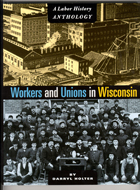 Workers and Unions in Wisconsin: A Labor History Anthology
Darryl Holter
Wisconsin Historical Society Press, 1999 Wisconsin accounts for about two percent of the nation's total population, but its contribution to the history of working people and social reform extends far beyond these numbers. In the early years of the twentieth century, Wisconsin became a veritable laboratory for social and political reform, producing such landmark legislation as workers' compensation, unemployment insurance, and other laws that became models for several states and helped shape federal labor policies. The study of the history of labor also began in Wisconsin when University of Wisconsin economics professor John R. Commons started to document the history of work and labor in America. Workers and Unions in Wisconsin includes nearly one hundred selections covering the period from 1850 to 1990, illustrated by scores of historic photos, most of which have never before been reprinted. Editor Darryl Holter has included accounts of episodes that took place in more than twenty-five cities and towns in Wisconsin, including labor activities at such nationally known companies as Oscar Mayer, Kohler, Case, Allis-Chalmers, and Ray-O-Vac and workers as diverse as dairy farmers and university teaching assistants, lumberjacks and hosiery makers, municipal employees and paper mill workers. The result is a book that will fascinate and inform anyone interested in American labor history and economics, as well as in the personal stories that are part of any great societal change.
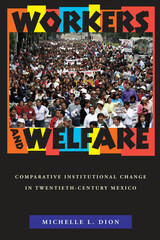 Workers and Welfare: Comparative Institutional Change in Twentieth-Century Mexico
Michelle L. Dion
University of Pittsburgh Press, 2010 After the revolutionary period of 1910-1920, Mexico developed a number of social protection programs to support workers in public and private sectors and to establish safeguards for the poor and the aged. These included pensions, healthcare, and worker's compensation. The new welfare programs were the product of a complex interrelationship of corporate, labor, and political actors. In this unique dynamic, cross-class coalitions maintained both an authoritarian regime and social protection system for some seventy years, despite the ebb and flow of political and economic tides.
By focusing on organized labor, and its powerful role in effecting institutional change, Workers and Welfare chronicles the development and evolution of Mexican social insurance institutions in the twentieth century. Beginning with the antecedents of social insurance and the adoption of pension programs for central government workers in 1925, Dion's analysis shows how the labor movement, up until the 1990s, was instrumental in expanding welfare programs, but has since become largely ineffective. Despite stepped-up efforts, labor has seen the retrenchment of many benefits. Meanwhile, Dion cites the debt crisis, neoliberal reform, and resulting changes in the labor market as all contributing to a rise in poverty. Today, Mexican welfare programs emphasize poverty alleviation, in a marked shift away from social insurance benefits for the working class.
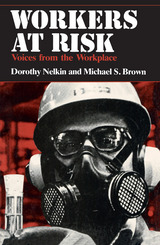 Workers At Risk: Voices from the Workplace
Dorothy Nelkin and Michael S. Brown
University of Chicago Press, 1984 Workers at Risk is a powerful and moving documentary of workers routinely exposed to toxic chemicals. Products and services we all depend on—glass bottles, computers, processed foods and fresh flowers, dry cleaning, medicines, even sculpture and silkscreened toys—are produced by workers in constant contact with more than 63,000 commercial chemicals. For many of them, the risk of death is a way of life.
More than seventy of them speak here of their jobs, their health, and the difficult choices they face in coming to grips with the responsibilities, risks, fears, and satisfactions of their work. Some struggle for information and acknowledgment of their health risks; others struggle to put out of their minds the dangers they know too well. Through extensive interviews, the authors have captured in these voices that double bind of the chemical worker: "If I had known that it would be that lethal, that it could give me or one of my children cancer, I would have refused to work. But it's a matter of survival and we just don't consider all these things. Meanwhile, we've got to make money to survive."
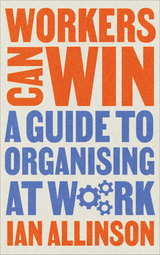 Workers Can Win: A Guide to Organising at Work
Ian Allinson
Pluto Press, 2022 Drawing on more than 20 years of organizing experience, Allinson combines practical techniques with an analysis of the theory and politics of organizing and unions. The Covid, climate, and cost of living crises all hang heavy in the air. It's more obvious than ever that we need radical social and political change. But in the vacuum left by defeated labor movements, where should we begin? For longtime workplace activist Ian Allinson, the answer is clear: organizing at work is essential to rebuild working-class power. The premise is simple: organizing builds confidence, capacity, and collective power - and with power, we can win change. Workers Can Win is an essential, practical guide for rank-and-file workers and union activists. The book offers insight into tried and tested methods for effective organizing. It deals with tactics and strategies and addresses some of the roots of conflict, common problems with unions, and the resistance of management to worker organizing. As a 101 guide to workplace organizing with politically radical horizons, Workers Can Win is destined to become an essential tool for workplace struggles in the years to come.
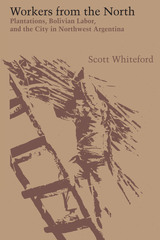 Workers from the North: Plantations, Bolivian Labor, and the City in Northwest Argentina
By Scott Whiteford
University of Texas Press, 1981 International migration between countries in Latin America became increasingly important during the twentieth century, but for a long time it was the subject of only limited research. Scott Whiteford sets the Argentina-Bolivia experience in historical perspective by examining the macrolevel factors that influenced social change in both countries and brought streams of migration into Argentina. Seasonal labor, the expansion of capitalist agriculture, international migration, and urbanization are central topics in this in-depth study of Bolivian migrants in Northwest Argentina. Whiteford’s vivid portrayal of the lives and working conditions of the migrants is based on two years of research during which he lived with the workers on a sugar plantation and, after the harvest, accompanied them to other farms and to the city of Salta in their search for more work. He traces the development of plantation agriculture in Northwest Argentina and the processes by which the plantation gained access to cheap labor and maintained control over it. As Bolivians migrated to Argentina in ever greater numbers, many recruited for the harvest remained. Whiteford’s analysis of the diverse strategies employed by workers and their families to support themselves during the post-harvest season is a major contribution to migration literature. The four distinct but related patterns of migration that he describes created a labor reserve that transcends rural/urban designations, one that is utilized by employers in both the countryside and the city.
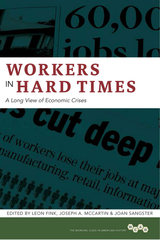 Workers in Hard Times: A Long View of Economic Crises
Edited by Leon Fink, Joseph A. McCartin, and Joan Sangster
University of Illinois Press, 2020 Seeking to historicize the 2007-2009 Great Recession, this volume of essays situates the current economic crisis and its impact on workers in the context of previous abrupt shifts in the modern-day capitalist marketplace. Contributors use examples from industrialized North America, South America, Europe, Asia, and Australia to demonstrate how workers and states have responded to those shifts and to their disempowering effects on labor. Since the Industrial Revolution, contributors argue, factors such as race, sex, and state intervention have mediated both the effect of economic depressions on workers' lives and workers' responses to those depressions. Contributors also posit a varying dynamic between political upheaval and economic crises, and between workers and the welfare state. The volume ends with an examination of today's "Great Recession": its historical distinctiveness, its connection to neoliberalism, and its attendant expressions of worker status and agency around the world. A sobering conclusion lays out a likely future for workers--one not far removed from the instability and privation of the nineteenth century. The essays in this volume offer up no easy solutions to the challenges facing today's workers. Nevertheless, they make clear that cogent historical thinking is crucial to understanding those challenges, and they push us toward a rethinking of the relationship between capital and labor, the waged and unwaged, and the employed and jobless. Contributors are Sven Beckert, Sean Cadigan, Leon Fink, Alvin Finkel, Wendy Goldman, Gaetan Heroux, Joseph A. McCartin, David Montgomery, Edward Montgomery, Scott Reynolds Nelson, Melanie Nolan, Bryan D. Palmer, Joan Sangster, Judith Stein, Hilary Wainright, and Lu Zhang.
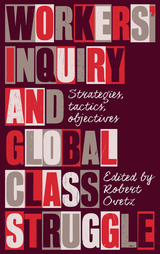 Workers' Inquiry and Global Class Struggle: Strategies, Tactics, Objectives
Robert Ovetz
Pluto Press, 2020 Rumours of the death of the global labour movement have been greatly exaggerated. Rising from the ashes of the old trade union movement, workers' struggle is being reborn from below.
By engaging in what Karl Marx called a workers' inquiry, workers and militant co-researchers are studying their working conditions, the technical composition of capital, and how to recompose their own power in order to devise new tactics, strategies, organisational forms and objectives. These workers' inquiries, from call centre workers to teachers, and adjunct professors, are re-energising unions, bypassing unions altogether or innovating new forms of workers' organisations.
In one of the first major studies to critically assess this new cycle of global working class struggle, Robert Ovetz collects together case studies from over a dozen contributors, looking at workers' movements in China, Mexico, the US, South Africa, Turkey, Argentina, Italy, India and the UK. The book reveals how these new forms of struggle are no longer limited to single sectors of the economy or contained by state borders, but are circulating internationally and disrupting the global capitalist system as they do.
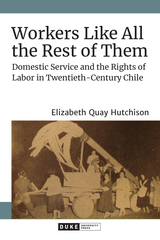 Workers Like All the Rest of Them: Domestic Service and the Rights of Labor in Twentieth-Century Chile
Elizabeth Quay Hutchison
Duke University Press, 2022 In Workers Like All the Rest of Them, Elizabeth Quay Hutchison recounts the long struggle for domestic workers’ recognition and rights in Chile across the twentieth century. Hutchison traces the legal and social history of domestic workers and their rights, outlining their transition from slavery to servitude. For most of the twentieth century, domestic service remained one of the key “underdeveloped” sectors in Chile’s modernizing economy. Hutchison argues that the predominance of women in that underpaid, underregulated labor sector provides one key to persistent gender and class inequality. Through archival research, firsthand accounts, and interviews with veteran activists, Hutchison challenges domestic workers’ exclusion from Chilean history and reveals how and under what conditions they mobilized for change, forging alliances with everyone from Catholic Church leaders and legislators to feminists and political party leaders. Hutchison contributes to a growing global conversation among activists and scholars about domestic workers’ rights, providing a lens for understanding how the changing structure of domestic work and worker activism has both perpetuated and challenged forms of ethnic, gender, and social inequality.
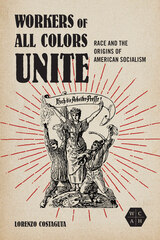 Workers of All Colors Unite: Race and the Origins of American Socialism
Lorenzo Costaguta
University of Illinois Press, 2023 As the United States transformed into an industrial superpower, American socialists faced the vexing question of how to approach race. Lorenzo Costaguta balances intellectual and institutional history to illuminate the clash between two major points of view. On one side, white supremacists believed labor should accept and apply the ascendant tenets of scientific theories of race. But others stood with International Workingmen’s Association leaders J. P. McDonnell and F. A. Sorge in rejecting the idea that racial and ethnic division influenced worker-employer relations, arguing instead that class played the preeminent role. Costaguta charts the socialist movement’s journey through the conflict and down a path that ultimately abandoned scientific racism in favor of an internationalist class-focused and racial-conscious American socialism. As he shows, the shift relied on a strong immigrant influence personified by the cosmopolitan Marxist thinker and future IWW cofounder Daniel De Leon. The class-focused movement that emerged became American socialism’s most common approach to race in the twentieth century and beyond.
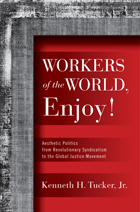 Workers of the World, Enjoy!: Aesthetic Politics from Revolutionary Syndicalism to the Global Justice Movement
Kenneth H. Tucker, Jr.
Temple University Press, 2012 The aesthetic politics of social movements turn public life into a public stage, where mutual displays of performance often trump rational debate, and urban streets become sites of festivals and carnival. In his penetrating new book, Workers of the World, Enjoy!, Kenneth Tucker provides a new model for understanding social change in our image-saturated and aesthetically charged world. As emotional and artistic images inform our perceptions and evaluation of politics, art and performance often provide new and creative ways of understanding self and society. Spanning the nineteenth, twentieth, and twenty-first centuries, Workers of the World, Enjoy! uses examples from major social movements that have dramatically changed the dominant capitalist society—often in the name of labor. Tucker investigates how class and culture develop as he raises questions about what it means for public life and social movements when politics and drama come together. Tucker catalogues how aesthetic politics influences social movements—from French Revolutionary syndicalism and fascism to the selling of the President and the street theater of the contemporary global justice movement. He also discusses the work of political theorists including Jurgen Habermas, Jeffrey Alexander, and Nancy Fraser to critique the ways public sphere has been studied.
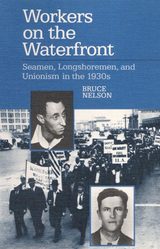 Workers on the Waterfront: Seamen, Longshoremen, and Unionism in the 1930s
Bruce Nelson
University of Illinois Press, 1988 With working lives characterized by exploitation and rootlessness, merchant seamen were isolated from mainstream life. Yet their contacts with workers in port cities around the world imbued them with a sense of internationalism. These factors contributed to a subculture that encouraged militancy, spontaneous radicalism, and a syndicalist mood. Bruce Nelson's award-winning book examines the insurgent activity and consciousness of maritime workers during the 1930s. As he shows, merchant seamen and longshoremen on the Pacific Coast made major institutional gains, sustained a lengthy period of activity, and expanded their working-class consciousness. Nelson examines the two major strikes that convulsed the region and caused observers to state that day-to-day labor relations resembled guerilla warfare. He also looks at related activity, from increasing political activism to stoppages to defend laborers from penalties, refusals to load cargos for Mussolini's war in Ethiopia, and forced boardings of German vessels to tear down the swastika.
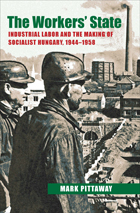 The Workers' State: Industrial Labor and the Making of Socialist Hungary, 1944–1958
Mark Pittaway
University of Pittsburgh Press, 2012 In 1956, Hungarian workers joined students on the streets to protest years of wage and benefit cuts enacted by the Communist regime. Although quickly suppressed by Soviet forces, the uprising led to changes in party leadership and conciliatory measures that would influence labor politics for the next thirty years.
In The Workers’ State, Mark Pittaway presents a groundbreaking study of the complexities of the Hungarian working class, its relationship to the Communist Party, and its major political role during the foundational period of socialism (1944–1958). Through case studies of three industrial centers—Újpest, Tatabánya, and Zala County—Pittaway analyzes the dynamics of gender, class, generation, skill level, and rural versus urban location, to reveal the embedded hierarchies within Hungarian labor. He further demonstrates how industries themselves, from oil and mining to armaments and textiles, possessed their own unique labor subcultures.
From the outset, the socialist state won favor with many workers, as they had grown weary of the disparity and oppression of class systems under fascism. By the early 1950s, however, a gap between the aspirations of labor and the goals of the state began to widen. In the Stalinist drive toward industrialization, stepped up production measures, shortages of goods and housing, wage and benefit cuts, and suppression became widespread.
Many histories of this period have focused on Communist terror tactics and the brutal suppression of a pliant population. In contrast, Pittaway’s social chronicle sheds new light on working-class structures and the determination of labor to pursue its own interests and affect change in the face of oppression. It also offers new understandings of the role of labor and the importance of local histories in Eastern Europe under communism.
 Workfare or Fair Work: Women, Welfare, and Government Work Programs
Nancy E Rose
Rutgers University Press, 1995 Can the welfare system in the United States accord people dignity? That question is often left out of the current debates over welfare and workfare. In this provocative book, Nancy Rose argues that the United States has been successful in the past––notably during the New Deal and in the 1970s––at shaping programs that gave people “fair work.”
However, as Rose documents, those innovative job creation programs were voluntary and were mainly directed at putting men back to work. Women on welfare, and especially women of color, continue to be forced into a very different kind of program: mandatory, punitive, and demeaning. Such workfare programs are set up for failure. They rarely train women for jobs with futures, they ignore the needs of the women’s families, and they do not pay an honest wage. They perpetuate poverty rather than prevent it. Rose uses the history of U.S. job creation programs to show alternatives to mandatory workfare. Any effort to redesign welfare in America needs to pay close attention to the lessons drawn from this perceptive analysis of the history of women, welfare, and work. This is an indispensable book for students, scholars, policymakers, politicians, and activists––for everyone who knows the system is broken and wants to fix it.
Workforce Development Politics: Civic Capacity And Performance
edited by Robert P. Giloth, Published in association with the Annie E. Casey Foundation.
Temple University Press, 2004 If 88% of Americans believe that education and training resources should be available to the jobless and more than two-thirds of employers have identified workforce and skills shortages as top priorities, why aren't we, as a society, able to provide that training in such a way that it leads to long-term economic security? This book looks at the politics of local and regional workforce development: the ways politicians and others concerned with the workforce systems have helped or hindered that process. Contributors examine the current systems that are in place in these cities and the potential for systemic reform through case studies of Denver, Milwaukee, Philadelphia, St. Louis, and Seattle.Published in association with the Annie E. Casey Foundation.
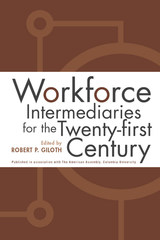 Workforce Intermediaries: For The 21St Century
edited by Robert P. Giloth, Published in association with The American Assembly, Columbia University
Temple University Press, 2003 Confronted with businesses facing a long-term shortage of skilled workers and evaluations showing that job training for the poor over the past 25 years had produced only meager results, a number of groups throughout the country have sought to find a more effective approach. The efforts of these partnerships, which editor Robert Giloth calls "workforce intermediaries," are characterized by a focus on improving business productivity and helping low-income individuals not just find a job, but advance over time to jobs that enable them to support themselves and their families. This book takes stock of the world of workforce intermediaries: entrepreneurial partnerships that include businesses, unions, community colleges, and community organizations. Noted scholars and policy makers examine the development and effectiveness of these intermediaries, and a concluding chapter discusses where we need to go from here, if society is to provide a more coherent approach to increasing the viability and capacity of these important institutions.Published in association with The American Assembly, Columbia University.
 Workin' It: Women Living Through Drugs and Crime
Leon Pettiway
Temple University Press, 1997 "When I was growing up, my mother wanted me to grow up and meet a nice guy, marry him and have babies and be happy."
These are the words with which Margaret, a thirty-three-year-old cocaine-using prostitute, begins her story. In this book, she and four other women, all inner-city hustlers, describe their lives, how they came to be where they are, and where they hope to go.
Margaret, Charlie, Virginia, Tracy, and Laquita are all drug users who are involved in regular criminal activity: prostitution, burglary, shoplifting, robbery, drug selling, petty theft, and various kinds of fraud. Four of the women are black; one is white and Puerto Rican. While all five have been involved in same-sex relationships, three are primarily straight and two are primarily lesbian. They come from working-class or welfare families; some women characterize their mothers as strict, abusive, intolerant, and distant while other mothers are characterized as being concerned, religious, and loving. The women talk frankly about their drug use, their sexual and criminal activities, their childhoods, their personal relationships with their families of origin, children, partners, their fears and future goals, and the ordinary trappings of their lives.
While these accounts describe lives lived at the margins of society, they also reveal women who practice self-evaluation. These are women who have a deep understanding of individual accountability and responsibility. These accounts are connected by themes of violence and poverty, but they are also connected by the variety and richness of these women's lives. The women also assert a control over their activities and talk of independent judgment in terms that we imagine are reserved for men. There is a tendency in criminology to treat the data generated by research on men as fundamentally true for women as well. By allowing female law-breakers to describe their lives in their own way, Pettiway underlines not only their differences from men but also their differences from each other.
However, their stories also reveal their common humanity and their profound will to survive despite all obstacles. These women manage to live self-defined and self-validated lives in a world even more turbulent than that of their mainstream sisters. They share a web of experiences created out of race and ethnicity, sexual orientation, drug use, and urbanization that provides them with meaning and courage. They speak movingly about guilt and responsibility, about rape and intimacy, and about ambition and despair. Through their stories we can grasp the traumas and turning points that lead us all to make bad decisions as well as those ideals and inspirations that can help to redeem us.
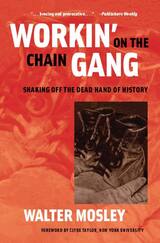 Workin' on the Chain Gang: Shaking Off the Dead Hand of History
Walter Mosley
University of Michigan Press, 2006 A passionate examination of the social and economic injustices that continue to shackle the American people Praise for Workin’ on the Chain Gang: “. . . bracing and provocative. . . .” —Publishers Weekly “. . . clear-sighted . . . Mosley offers chain-breaking ideas. . . .” —Los Angeles Times Book Review “[A] thoroughly potent dismantling of Yanqui capitalism, the media, and the entertainment business, and at the same time a celebration of rebellion, truth as a tool for emancipation, and much else besides. . . .” —Toronto Globe and Mail “Workin’ on the Chain Gang excels at expressing feelings of ennui that transcend race. . . . beautiful language and penetrating insights into the necessity of confronting the past.” —Washington Post “Mosley eloquently examines what liberation from consumer capitalism might look like. . . . readers receptive to a progressive critique of the religion of the market will value Mosley’s creative contribution.” —Booklist Walter Mosley’s most recent essay collection is Life Out of Context, published in 2006. He is the best-selling author of the science fiction novel Blue Light, five critically acclaimed mysteries featuring Easy Rawlins, the blues novel RL’s Dream, a finalist for the NAACP Award in Fiction, and winner of the Black Caucus of the American Library Association’s Literary Award. His books have been translated into twenty languages. He lives in New York. Clyde Taylor is Professor of Africana Studies at NYU’s Gallatin School and author of The Mask of Art: Breaking the Aesthetic Contract—Film and Literature.
 Working and Growing Up in America
Jeylan T. Mortimer
Harvard University Press, 2003 Should teenagers have jobs while they’re in high school? Doesn’t working distract them from schoolwork, cause long-term problem behaviors, and precipitate a “precocious” transition to adulthood?
This report from a remarkable longitudinal study of 1,000 students, followed from the beginning of high school through their mid-twenties, answers, resoundingly, no. Examining a broad range of teenagers, Jeylan Mortimer concludes that high school students who work even as much as half-time are in fact better off in many ways than students who don’t have jobs at all. Having part-time jobs can increase confidence and time management skills, promote vocational exploration, and enhance subsequent academic success. The wider social circle of adults they meet through their jobs can also buffer strains at home, and some of what young people learn on the job—not least, responsibility and confidence—gives them an advantage in later work life.
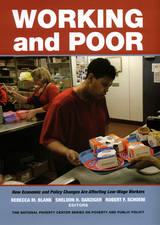 Working and Poor: How Economic and Policy Changes Are Affecting Low-Wage Workers
Rebecca M. Blank
Russell Sage Foundation, 2006 Over the last three decades, large-scale economic developments, such as technological change, the decline in unionization, and changing skill requirements, have exacted their biggest toll on low-wage workers. These workers often possess few marketable skills and few resources with which to support themselves during periods of economic transition. In Working and Poor, a distinguished group of economists and policy experts, headlined by editors Rebecca Blank, Sheldon Danziger, and Robert Schoeni, examine how economic and policy changes over the last twenty-five years have affected the well-being of low-wage workers and their families. Working and Poor examines every facet of the economic well-being of less-skilled workers, from employment and earnings opportunities to consumption behavior and social assistance policies. Rebecca Blank and Heidi Schierholz document the different trends in work and wages among less-skilled women and men. Between 1979 and 2003, labor force participation rose rapidly for these women, along with more modest increases in wages, while among the men both employment and wages fell. David Card and John DiNardo review the evidence on how technological changes have affected less-skilled workers and conclude that the effect has been smaller than many observers claim. Philip Levine examines the effectiveness of the Unemployment Insurance program during recessions. He finds that the program's eligibility rules, which deny benefits to workers who have not met minimum earnings requirements, exclude the very people who require help most and should be adjusted to provide for those with the highest need. On the other hand, Therese J. McGuire and David F. Merriman show that government help remains a valuable source of support during economic downturns. They find that during the most recent recession in 2001, when state budgets were stretched thin, legislatures resisted political pressure to cut spending for the poor. Working and Poor provides a valuable analysis of the role that public policy changes can play in improving the plight of the working poor. A comprehensive analysis of trends over the last twenty-five years, this book provides an invaluable reference for the public discussion of work and poverty in America. A Volume in the National Poverty Center Series on Poverty and Public Policy
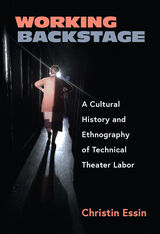 Working Backstage: A Cultural History and Ethnography of Technical Theater Labor
Christin Essin
University of Michigan Press, 2021 Working Backstage illuminates the work of New York City’s theater technicians, shining a light on the essential contributions of unionized stagehands, carpenters, electricians, sound engineers, properties artisans, wardrobe crews, makeup artists, and child guardians. Too-often dismissed or misunderstood as mere functionaries, these technicians are deeply engaged in creative problem-solving and perform collaborative, intricate choreographed work that parallels the performances of actors, singers, and dancers onstage. Although their contributions have fueled the Broadway machine, their contributions have been left out of most theater histories.
Theater historian Christin Essin offers clear and evocative descriptions of this invaluable labor, based on her archival research and interviews with more than 100 backstage technicians, members of the New York local of the International Alliance of Theatrical Stage Employees. A former theater technician herself, Essin provides readers with an insider’s view of the Broadway stage, from the suspended lighting bridge of electricians operating followspots for A Chorus Line; the automation deck where carpenters move the massive scenic towers for Newsies; the makeup process in the dressing room for The Lion King; the offstage wings of Matilda the Musical, where guardians guide child actors to entrances and exits. Working Backstage makes an significant contribution to theater studies and also to labor studies, exploring the politics of the unions that serve backstage professionals, protecting their rights and insuring safe working conditions. Illuminating the history of this typically hidden workforce, the book provides uncommon insights into the business of Broadway and its backstage working relationships among cast and crew members.
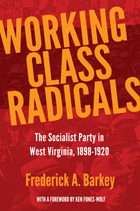 Working Class Radicals: The Socialist Party in West Virginia, 1898-1920
Frederick A. Barkey
West Virginia University Press, 2012 Working Class Radicals: The Socialist Party in West Virginia, 1898-1920 examines the rise and fall of organized socialism in West Virginia through an exploration of the demographics of membership, oral interview material gathered in the 1960s from party members, and the collapse of the party in the wake of the Paint Creek-Cabin Creek coal-mining strike of 1912. The first local branch of the West Virginia Socialist Party was established in Wheeling in 1901 and by 1914 several thousand West Virginians were dues-paying members of local branches. By 1910 local Socialists began to elect candidates to office and in 1912 more than 15,000 West Virginian voters cast their ballots for Socialist presidential candidate Eugene Debs. The progress that West Virginia socialists achieved on the electoral front was a reflection of the party’s strategy of increasing class-consciousness by working with existing unions to build the power of the labor movement. The party appealed to a fairly broad cross section of wage earners and its steady growth also owed much to the fact that many members of the middle class were attracted to the cause. Several factors combined to send the party into rapid decline, most importantly deep fissures between class and craft factions of the party and 1915 legislation making third party political participation difficult. Working Class Radicals offers insight into the various internal and external forces that doomed the party and serves as a cautionary tale to contemporary political leaders and organizers.
 Working Classics: POEMS ON INDUSTRIAL LIFE
Edited by Peter Oresick and Nicholas Coles
University of Illinois Press, 1990 From the cannery rows of California to the sweatshops of New York, this
anthology of poems captures the drama of work and working-class life in
industrial America. It speaks of rolling mills, mine shafts, and foundries,
and of a people who dig coal, tap blast furnaces, sew shirts, clean fish,
and assemble cars. These subjects, though largely absent from literary
anthologies and textbooks, are increasingly evident in the work of contemporary
poets. Working Classics gathers the best and most representative
of these poems, American and Canadian, from 1945 to the present.
Included are poems by Antler, Robert Bly, Lorna Dee Cervantes, Jim Daniels,
Patricia Dobler, Stephen Dunn, Tess Gallagher, Edward Hirsch, David Ignatow,
June Jordan, Lawrence Joseph, Philip Levine, Chris Llewellyn, Joyce Carol
Oates, Anthony Petrosky, Michael Ryan, Gary Soto, Tom Wayman, James Wright,
and many others. The result is a diverse and evocative collection of 169
poems by 74 poets, nearly a third of them women.
Working Communally: Patterns and Possibilities
David G. French
Russell Sage Foundation, 1975 Examines an alternative to the old patterns of living and working in the prevailing social system—the communal work place where work, recreation, and living space are brought together in a unified setting. The authors deal with a number of questions the communal work group faces, including the selection of projects, the choice of technologies and legal structure, and the means for determining economic viability. Past American and European communitarian movements are traced, as well as the nature and limitations of the new community experiments of the 1960s and 1970s.
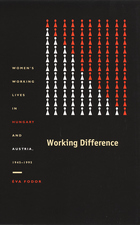 Working Difference: Women’s Working Lives in Hungary and Austria, 1945–1995
Éva Fodor
Duke University Press, 2003 Working Difference is one of the first comparative, historical studies of women's professional access to public institutions in a state socialist and a capitalist society. Éva Fodor examines women's inclusion in and exclusion from positions of authority in Austria and Hungary in the latter half of the twentieth century. Until the end of World War II women's lives in the two countries, which were once part of the same empire, followed similar paths, which only began to diverge after the communist takeover in Hungary in the late 1940s. Fodor takes advantage of Austria and Hungary's common history to carefully examine the effects of state socialism and the differing trajectories to social mobility and authority available to women in each country. Fodor brings qualitative and quantitative analyses to bear, combining statistical analyses of survey data, interviews with women managers in both countries, and archival materials including those from the previously classified archives of the Hungarian communist party and transcripts from sessions of the Austrian Parliament. She shows how women's access to power varied in degree and operated through different principles and mechanisms in accordance with the stratification systems of the respective countries. In Hungary women's mobility was curtailed by political means (often involving limited access to communist party membership), while in Austria women's professional advancement was affected by limited access to educational institutions and the labor market. Fodor discusses the legacies of Austria's and Hungary's "gender regimes" following the demise of state socialism and during the process of integration into the European Union.
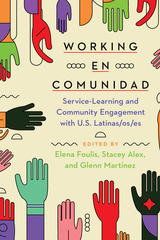 Working en comunidad: Service-Learning and Community Engagement with U.S. Latinas/os/es
Edited by Elena Foulis, Stacey Alex, and Glenn Martínez
University of Arizona Press, 2024 Working in community is critical to several fields. Working en comunidad focuses on service-learning and Latina/o/e communities within a variety of institutional contexts. It provides a practical framework grounded in theoretical approaches that center Latina/o/e experiences as foundational to understanding how to prepare students to work in the community and en comunidad.
The volume tackles three major themes: ethical approaches to working with Latina/o/e communities within language courses and beyond; preparing Latina/o/e students for working with their own communities in different environments; and ensuring equitable practices and building relationships that are mutually beneficial for students and community members. The editors forward two central arguments: (1) Equitable community engagement in higher education is a reflective and reciprocal process that develops empathy and personal and professional growth in students; and (2) service-learning is most transformative when it explicitly guides students and the community to build cultural humility and recognize Latina/o/e experiences and agency as foundational to the learning process.
Many of the contributors and editors are Latina/o/e-identified scholars, practitioners, and researchers, who lend a rich body of experience and a personal dedication to this work. They present distinct approaches and geographies, as well as range of institutions, to offer a wide scope of engaged work that builds on the concept of comunidad to advance a critical new conceptual framework of equitable education and racial justice.
Contributors
Stacey Alex
Elena Foulis
Christina García
Catherine Komisaruk
Kelly Lowther Pereira
Glenn Martínez
María Luisa Parra-Velasco
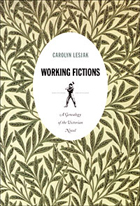 Working Fictions: A Genealogy of the Victorian Novel
Carolyn Lesjak
Duke University Press, 2006 Working Fictions takes as its point of departure the common and painful truth that the vast majority of human beings toil for a wage and rarely for their own enjoyment or satisfaction. In this striking reconceptualization of Victorian literary history, Carolyn Lesjak interrogates the relationship between labor and pleasure, two concepts that were central to the Victorian imagination and the literary output of the era. Through the creation of a new genealogy of the “labor novel,” Lesjak challenges the prevailing assumption about the portrayal of work in Victorian fiction, namely that it disappears with the fall from prominence of the industrial novel. She proposes that the “problematic of labor” persists throughout the nineteenth century and continues to animate texts as diverse as Elizabeth Gaskell’s Mary Barton, George Eliot’s Felix Holt and Daniel Deronda, Charles Dickens’s Great Expectations, and the essays and literary work of William Morris and Oscar Wilde. Lesjak demonstrates how the ideological work of the literature of the Victorian era, the “golden age of the novel,” revolved around separating the domains of labor and pleasure and emphasizing the latter as the proper realm of literary representation. She reveals how the utopian works of Morris and Wilde grapple with this divide and attempt to imagine new relationships between work and pleasure, relationships that might enable a future in which work is not the antithesis of pleasure. In Working Fictions, Lesjak argues for the contemporary relevance of the “labor novel,” suggesting that within its pages lie resources with which to confront the gulf between work and pleasure that continues to characterize our world today.
Working for Democracy: American Workers from the Revolution to the Present
Edited by Paul Buhle and Alan Dawley
University of Illinois Press, 1985 Written by some of our nation's top historians, Working for Democracy is the first book to examine the politics of American workers from the revolution to the present in terms of broad struggles for power in society at large. In more than a dozen chapters, the topics range from the committees of artisan "republicans" at the time of the American Revolution to the League of Revolutionary Black Workers. Whether the subject is the anti-slavery movement, the New Deal coalition, the Wobblies, or women workers, Working For Democracy is a testament to the struggles of workers everywhere in America.
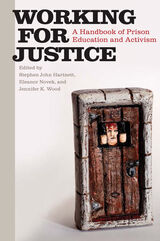 Working for Justice: A Handbook of Prison Education and Activism
Edited by Stephen John Hartnett, Eleanor Novek, and Jennifer K. Wood
University of Illinois Press, 2013 This collection documents the efforts of the Prison Communication, Activism, Research, and Education collective (PCARE) to put democracy into practice by merging prison education and activism. Through life-changing programs in a dozen states (Arizona, Colorado, Illinois, Indiana, Massachusetts, Michigan, New Jersey, Ohio, Pennsylvania, Texas, Virginia, and Wisconsin), PCARE works with prisoners, in prisons, and in communities to reclaim justice from the prison-industrial complex. Based on years of pragmatic activism and engaged teaching, the materials in this volume present a sweeping inventory of how communities and individuals both within and outside of prisons are marshaling the arts, education, and activism to reduce crime and enhance citizenship. Documenting hands-on case studies that emphasize educational initiatives, successful prison-based programs, and activist-oriented analysis, Working for Justice provides readers with real-world answers based on years of pragmatic activism and engaged teaching. Contributors are David Coogan, Craig Lee Engstrom, Jeralyn Faris, Stephen John Hartnett, Edward A. Hinck, Shelly Schaefer Hinck, Bryan J. McCann, Nikki H. Nichols, Eleanor Novek, Brittany L. Peterson, Jonathan Shailor, Rachel A. Smith, Derrick L. Williams, Lesley A. Withers, Jennifer K. Wood, and Bill Yousman.
 Working for Peace and Justice: Memoirs of an Activist Intellectual
Lawrence S. Wittner
University of Tennessee Press, 2013
A longtime agitator against war and social injustice, Lawrence Wittner has been tear-gassed, threatened by police with drawn guns, charged by soldiers with fixed bayonets, spied upon by the U.S. government, arrested, and purged from his job for political -reasons. To say that this teacher-historian-activist has led an interesting life is a considerable understatement.
In this absorbing memoir, Wittner traces the dramatic course of a life and career that took him from a Brooklyn boyhood in the 1940s and ’50s to an education at Columbia University and the University of Wisconsin to the front lines of peace activism, the fight for racial equality, and the struggles of the labor movement. He details his family background, which included the bloody anti-Semitic pogroms of late-nineteenth-century Eastern Europe, and chronicles his long teaching career, which comprised positions at a small black college in Virginia, an elite women’s liberal arts college north of New York City, and finally a permanent home at the Albany campus of the State University of New York. Throughout, he packs the narrative with colorful vignettes describing such activities as fighting racism in Louisiana and Mississippi during the early 1960s, collaborating with peace-oriented intellectuals in Gorbachev’s Soviet Union, and leading thousands of antinuclear demonstrators through the streets of Hiroshima. As the book also reveals, Wittner’s work as an activist was matched by scholarly achievements that made him one of the world’s foremost authorities on the history of the peace and nuclear disarmament movements—a research specialty that led to revealing encounters with such diverse figures as Norman Thomas, the Unabomber, Zbigniew Brzezinski, Caspar Weinberger, and David Horowitz.
A tenured professor and renowned author who has nevertheless lived in tension with the broader currents of his society, Lawrence Wittner tells an engaging personal story that includes some of the most turbulent and significant events of recent history.
Lawrence S. Wittner, emeritus professor of history at the University at Albany, SUNY, is the author of numerous scholarly works, including the award-winning three-volume Struggle Against the Bomb. Among other awards and honors, he has received major grants or fellowships from the National Endowment for the Humanities, the American Council of Learned Societies, the Aspen Institute, the United States Institute of Peace, and the John D. and Catherine T. MacArthur Foundation.
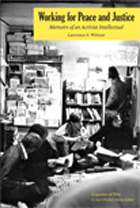 Working for Peace and Justice: Memoirs of an Activist Intellectual
Lawrence S. Wittner
University of Tennessee Press, 2012
A longtime agitator against war and social injustice, Lawrence Wittner has been tear-gassed, threatened by police with drawn guns, charged by soldiers with fixed bayonets, spied upon by the U.S. government, arrested, and purged from his job for political -reasons. To say that this teacher-historian-activist has led an interesting life is a considerable understatement.
In this absorbing memoir, Wittner traces the dramatic course of a life and career that took him from a Brooklyn boyhood in the 1940s and ’50s to an education at Columbia University and the University of Wisconsin to the front lines of peace activism, the fight for racial equality, and the struggles of the labor movement. He details his family background, which included the bloody anti-Semitic pogroms of late-nineteenth-century Eastern Europe, and chronicles his long teaching career, which comprised positions at a small black college in Virginia, an elite women’s liberal arts college north of New York City, and finally a permanent home at the Albany campus of the State University of New York. Throughout, he packs the narrative with colorful vignettes describing such activities as fighting racism in Louisiana and Mississippi during the early 1960s, collaborating with peace-oriented intellectuals in Gorbachev’s Soviet Union, and leading thousands of antinuclear demonstrators through the streets of Hiroshima. As the book also reveals, Wittner’s work as an activist was matched by scholarly achievements that made him one of the world’s foremost authorities on the history of the peace and nuclear disarmament movements—a research specialty that led to revealing encounters with such diverse figures as Norman Thomas, the Unabomber, Zbigniew Brzezinski, Caspar Weinberger, and David Horowitz.
A tenured professor and renowned author who has nevertheless lived in tension with the broader currents of his society, Lawrence Wittner tells an engaging personal story that includes some of the most turbulent and significant events of recent history.
Lawrence S. Wittner, emeritus professor of history at the University at Albany, SUNY, is the author of numerous scholarly works, including the award-winning three-volume Struggle Against the Bomb. Among other awards and honors, he has received major grants or fellowships from the National Endowment for the Humanities, the American Council of Learned Societies, the Aspen Institute, the United States Institute of Peace, and the John D. and Catherine T. MacArthur Foundation.
Working for Policy
Edited by Hal Colebatch, Robert Hoppe, and Mirko Noordegraaf
Amsterdam University Press, 2011 Though democratic government calls for well-designed and implemented policy, there is surprisingly little expert guidance available for policy makers and politicians. Working for Policy fills that gap, addressing the nature of policy work and offering necessary guidance. The contributors bring together academic and experiential knowledge in their analysis and evaluation of what modern policy makers do in given situations and of how such actions contribute to the policy process. This unique book demonstrates how scholars can help to ensure that policy makers can acquire the skills and knowledge required in governing complex modern societies.
|
|
